
Professor S. Ravi P. Silva CBE FREng FCAE (foreign academician)
Academic and research departments
Advanced Technology Institute, School of Computer Science and Electronic Engineering, Institute for Sustainability.About
Biography
Ravi Silva is a Distinguished Professor, Interim Director of the Institute for Sustainability (IfS), and the Director of the Advanced Technology Institute (ATI) at the University of Surrey. The IfS is a pan-university activity spearheading the university drive for research excellence in sustainability as well as its implementation across all stakeholders. Through transdisciplinary collaborations across faculties, and business and external partner engagement, we will create world-class research effecting significant change for the long-term wellbeing for all (people, environment and governance). The IfS has over 250 Fellows conducting state of the art research and its implementation. He also Heads the Nano-Electronics Centre (NEC), which is an interdisciplinary research activity. The ATI has over 160 active researchers working on multidisciplinary programmes with the NEC being a major research group within the institute. He holds senior posts of distinction in a number of distinguished organisations including: CBE FREng FCAE (foreign academician) FISC FEurASc FNASSL DFIETI MAE FIET FInstP FRSA CEng CPhys
Short Biography: Prof. S. Ravi P. Silva CBE FREng is a Distinguished Professor, Director of the Institute for Sustainability and the Director of the Advanced Technology Institute at University of Surrey. He joined Surrey in 1995 after completing undergraduate and postgraduate degrees at Cambridge University. His research interests include nanotechnology, large-area electronics and renewables, and has resulted in over 700 presentations at conferences, and over 680 journal papers. He has over 33,000 citations with an H-index of 92, and won research funding in excess of £50M. He is the inventor of 50 patents, including key patents on low temperature growth of carbon nanotubes, fabrication of high-performance large area X-ray detectors and fabrication of large area nanotube-organic solar cells. He is a Fellow of the Royal Academy of Engineering, UK and a Fellow of the National Academy of Sciences Sri Lanka. He was made a Commander of the Order of the British Empire in the 2021 Queen’s New Year Honours’ list. He holds senior posts of distinction in a number of distinguished organisations including: FCAE (foreign academician) FISC FEurASc FNASSL DFIETI MAE FIET FInstP FRSA CEng CPhys
An established member of the University of Surrey’s Sustainability Executive Committee, Ravi has been spearheading the institution’s drive towards Carbon Net Zero, including setting up a Surrey Solar Farm. He has led sustainability work at CAESAR, chairing a session on a Net Zero World in 30 Years and helping to draft the newest guidelines on Key Technologies Shaping the Future. He led a consortium headed by the University of Surrey to be awarded close to £3 million to help design perovskite solar cells to power wearable technologies and Internet of Things (IoT) devices in 2022.
His research has resulted in over 700 presentations at international conferences, and over 680 journal papers, Over 33,000 citations (Google Scholar), and a Google H-factor of 92. Ravi is the inventor of 50 patents, including key patents on low temperature growth of carbon nanotubes, fabrication of high-performance large area X-ray detectors and fabrication of large area nanotube-organic solar cells. He has won research funding in excess of £50M and was made a Commander of the Order of the British Empire (CBE) in the 2021 Queen’s New Year Honours’ list.
In 2016, he received a Government of Sri Lanka Presidential Award in recognition for many contributions in the field of nanotechnology. In 2018, he was elected the joint Editor-in-Chief of Wiley's Energy and Environmental Materials. He received an Honorary president letter of appointment as Honorary Director to the Zhengzhou Materials Genome Institute (ZMGI) in China in 2017. Ravi was elected to Distinguished Professorships at Surrey University in 2019, Hubei University - China (2019), Zhengzhou University - China (2018) and Chonbuk National University - South Korea (2013). He has Visiting Professorships at Dalian Technology University and Wuhan University of Technology in China.
Prof. Silva won the James Joule Medal and Award for contributions to the establishment and research on carbon nanomaterials to sustainability given by the Institute of Physics to distinguished contributions to Applied and Environment Sciences in 2018.
Since 2013-2024, he has been part of three major EU programmes to establish Organic Solar Cells and Printed Electronics as an open innovation platform in Europe with total funding in excess of €20M on SMARTONICS, CORNET and MUSICODE. From 2013-2017, Ravi helped establish the groundwork to set up a €12M EU programme for the development of pilot lines for the deposition of organic materials, with the primary application being cheap large area solar cells. Smartonics led to further EU success with CORNET and MUSICODE (2017-2024). The Smartonics Project was awarded the 1st Runner-Up for the Best EU Project in that category, in recognition of the project's potential impact, dissemination and outreach towards industry and society.
In 2015, he won the Institute of Materials, Minerals & Mining (IOM3) premium award, the Platinum Medal for contributing to materials science, technology and industry. In 2014 he was awarded a premium medal by the Institute of Engineering and Technology (IET), the JJ Thompson Medal for contributions to Electrical and Electronic Engineering. In 2011 he was awarded the Royal Society Clifford Patterson Award for outstanding contribution in the fields of carbon nanoscience and nanotechnology.
Prof. Silva is a panel member in Engineering for the REF2021 and, in 2009, was elected as a Fellow of the National Academy of Sciences Sri Lanka. He was a member of the Electrical and Electronic Panel (UoA24) for the Research Assessment Exercise (2003-2008) RAE2008, EPSRC Nanotechnology Task Force and sat (2007-2010) on the Engineering and Physical Sciences Research Council's (EPSRC) Technology Opportunities Panel (TOP). He was elected a Fellow of the Royal Academy of Engineering, UK, in 2008.
Since 2005 he has worked with the National Science Foundation (NSF), Sri Lanka to establish nanotechnology as a vehicle from which to create wealth for the nation that will allow for poverty alleviation in the country. By introducing high technology into the manufacturing base in Sri Lanka he has spearheaded a drive to introduce innovation and competitiveness into the industrial sector within the country. Prof. Silva was on the advisory board of Imprimatur Ltd. UK and the National Nanotechnology Initiative (NNI) of Sri Lanka. He spent 2008 acting as an Advisor to the Honourable Minister of Science and Technology in Sri Lanka, and helped set up the Sri Lanka Institute of NanoTechnology (SLINTec) and the Nano-Science Park NANCO (private) Ltd. He acts as an advisor to both these activities and sits on the director board.
He was elected a Fellow of the Royal Society of Arts in 2007, the same year he was the runner-up of the "Times Higher Education Young Scientist of the Year", and was awarded "Most Entrepreneurial Scientist 2007, United Kingdom", by UKSEC and Science Alliance of the Netherlands. In 2005, the Nano-Electronics Centre was a finalist in the Emerging Technologies category of the IEE 2005 Awards for Innovation in Engineering, just one year after Prof. Silva received a SRIF award for £4M to set it up, enabling multidisciplinary research and allowing the enhancement of nano-bio activities via the EU Sensation and EU Carbio programme.
The largest EPSRC Portfolio award was awarded to Prof. Silva and his team in 2003 for £6.68M for Integrated Electronics which examined nanoscale design features on the optical and photonic device properties. In 2003 he was also awarded the Albert Einstein Silver Medal and Javed Husain Prize by UNESCO for contributions to electronic devices and was awarded the IEE Achievement Award. In 2002 he was awarded the Charles Vernon Boys Medal by the Institute of Physics.
Ravi's secondary education was in Sri Lanka, after which he joined the Engineering Department at Cambridge University for his undergraduate and postgraduate work. He was a recipient of Cambridge Commonwealth Trust Fellowship while at Cambridge and member of Clare College.
News
In the media
ResearchResearch interests
His research interest encompass a wide range of activities with a focus in nanotechnology and renewables. A strong electronics background combined with materials science has enabled him and his team to produce bespoke nano-scale designer materials for specific applications. From examining the underlying feasibility of devices for specific applications, to specifically designed nanoscale structures and devices for technology solutions, the group looks to solve challenging problems with wide contributions to society. Technology associated within the group was put on show at the Pyeongchang Winter Olympics 2018 Hyundai pavilion. Prof. Silva is passionate about enabling technology to provide free energy from the sun to society with a view of alleviating poverty and better quality of life. Areas in which he and his group contribute include: solar cells, nano-manufacturing, energy materials, carbon electronics, transistor designs & simulations, OPV, OLEDs, CNT, graphene, SGT, CFRP, DLC, nano-biotechnology, nano carbons, nanotechnology, water technology, large area electronics, electronic and photonic devices.
In addition to Nano-Electronics, the characterisation, growth and processing of novel semiconductor materials for large area electronic applications is central to the group activity. Novel device structures & the physics of carbon nanotubes, photovoltaics based on polymer/nanotube composites, electron field emission from amorphous materials and modelling of the emission, photovoltaics, electroluminescent cells, electronic doping of amorphous carbon, Excimer laser annealing and ablation, disordered (amorphous and n-C) GaN for optoelectronic applications, band gap modulated superlattice structures, diamond and SiC thin film deposition, the use of ion implantation for electronic doping and synthesis of novel materials are some of his other interests.
Research is progressing rapidly on growth kinetics of low temperature carbon nanotubes, which has now extended to CVD graphene growth over large areas & the synthesis of novel 2D materials.
Research collaborations
Research collaborations are in progress with national and international partners both from academia and industry. He has acted as advisor to many national and international organisations, including governments from USA, Korea, Japan, China, India, Sri Lanka, Singapore,Saudi Arabia, Israel, Hong Kong, Portugal, Canada, Brazil and Europe.
Research interests
His research interest encompass a wide range of activities with a focus in nanotechnology and renewables. A strong electronics background combined with materials science has enabled him and his team to produce bespoke nano-scale designer materials for specific applications. From examining the underlying feasibility of devices for specific applications, to specifically designed nanoscale structures and devices for technology solutions, the group looks to solve challenging problems with wide contributions to society. Technology associated within the group was put on show at the Pyeongchang Winter Olympics 2018 Hyundai pavilion. Prof. Silva is passionate about enabling technology to provide free energy from the sun to society with a view of alleviating poverty and better quality of life. Areas in which he and his group contribute include: solar cells, nano-manufacturing, energy materials, carbon electronics, transistor designs & simulations, OPV, OLEDs, CNT, graphene, SGT, CFRP, DLC, nano-biotechnology, nano carbons, nanotechnology, water technology, large area electronics, electronic and photonic devices.
In addition to Nano-Electronics, the characterisation, growth and processing of novel semiconductor materials for large area electronic applications is central to the group activity. Novel device structures & the physics of carbon nanotubes, photovoltaics based on polymer/nanotube composites, electron field emission from amorphous materials and modelling of the emission, photovoltaics, electroluminescent cells, electronic doping of amorphous carbon, Excimer laser annealing and ablation, disordered (amorphous and n-C) GaN for optoelectronic applications, band gap modulated superlattice structures, diamond and SiC thin film deposition, the use of ion implantation for electronic doping and synthesis of novel materials are some of his other interests.
Research is progressing rapidly on growth kinetics of low temperature carbon nanotubes, which has now extended to CVD graphene growth over large areas & the synthesis of novel 2D materials.
Research collaborations
Research collaborations are in progress with national and international partners both from academia and industry. He has acted as advisor to many national and international organisations, including governments from USA, Korea, Japan, China, India, Sri Lanka, Singapore,Saudi Arabia, Israel, Hong Kong, Portugal, Canada, Brazil and Europe.
Publications
This study examines the catalytic performance of SDS (sodium dodecyl sulfate)-modified Nb2O5/Al2O3 heterojunctions (oxide-oxide interfaces rather than semiconductor junctions) for glycerol dehydration. Utilizing alpha-Al2O3 as a seed substrate, Nb2O5 shells were synthesized through a microwave-assisted hydrothermal process. Comprehensive characterization techniques, including FTIR, TG/DTA, N2adsorption/desorption isotherms, XRD, and NH3 and pyridine temperature-programmed desorption (TPD), were employed to analyze structural and chemical properties. The SDS-modified catalysts exhibited a marked enhancement in surface acidity relative to pristine Nb2O5, with the surfactant promoting both a higher density and increased strength of acidic sites. The Nb2O5/Al2O3 catalysts exhibited superior glycerol conversion rates relative to the individual oxides, with Nb2O5 favoring acrolein production over acetol. This work provides valuable insights into designing efficient, acid-modified catalysts for bio-based chemical production.
•Flexible Zn-ion battery-powered PANI IR-ECDs with superior modulation properties are developed.•High Δε of 0.56 at 8‒14 μm and significant radiative temperature modulation of 10.9 °C are achieved at ~40 °C.•The device exhibits an extremely low Δε decay rate of 0.0145 % per cycle after 120,000 s continuous cycling.•Multifunctionalities such as self-powering, solar modulation compatibility, and multi-spectral camouflage are demonstrated. Electrochromic devices (ECDs) capable of modulating infrared emission hold great potential in many application fields, including energy harvesting and conservation, sustainable building technology, thermal imaging, and spacecraft thermal control. However, its wider implementation requires the development of innovative strategies to achieve high modulation ratio, high flexibility, low cost, and seamless integration capabilities. Here we present a low-cost, large-area-compatible, solution-process approach for flexible infrared ECDs (IR-ECDs) by designing gradient porous membrane-supported polyaniline (PANI) composite structures. These devices achieve a superior emissivity variation (Δε) of 0.56 across the critical atmospheric transparency window of 8–14, coupled with a large modulation of radiative temperature by 10.9 °C at 40 °C environmental conditions. Remarkably, they retain a high Δε even after 120,000 s of continuous operation, demonstrating exceptional cycling durability with a minimal emissivity decay rate of 0.0145 % per cycle. Furthermore, we demonstrate that the flexible, self-powered IR-ECDs are able to support continuous modulation operation for an impressive duration of circa 20 years for a large device with an area of 1 m2, consuming a minimal 1-kilowatt hour (kWh) of electricity. This development paves the way for new, high-efficiency strategies in preparing and deploying high-performance adaptive energy-management applications.
Future wearable electronics require sustainable power sources, and nanogenerators offer promising solutions to convert ambient mechanical energy to electricity while ensuring flexibility, durability, and practical deployment. This work demonstrates a textile‐based piezoelectric nanogenerator (T‐PENG), which is a durable and scalable energy‐harvesting system, using the inherent strength of 2D materials to elevate the performance metrics significantly. Screen printable 2D graphene ink was used for developing the textile‐based flexible electrodes. The composite layer was prepared using zinc oxide (ZnO) enclosed molybdenum disulfide (MoS 2 ) (MoS 2 @ZnO) and a screen printable paste. The incorporation of 2D MoS 2 into the T‐PENG system significantly enhances its output performance. This improvement is further validated by COMSOL computer simulations, which align closely with the experimental findings. At 10 wt% of MoS 2 , d 33 value of our device reaches ~5.67 pC N −1 , an approximately threefold improvement over the MoS 2 ‐free device. Furthermore, T‐PENG resulted in a significantly high open‐circuit voltage ( V oc ) of ~60 V, and a peak power density ( J ) of 126.84 mW m −2 . Moreover, T‐PENG demonstrates high durability and flexibility while retaining ~92% of its output power over 3 months and sustaining ~90% efficiency after 500 bending cycles. T‐PENG demonstrated the ability to power over 60 blue light emitting diodes (LEDs) and functions as a self‐powered sensor. These advancements position MoS 2 as a significant material for next‐generation multifunctional smart textiles.
Context & scale As space exploration accelerates, the demand for advanced satellite technologies has surged, driving the satellite solar panel market to $1.53 billion by 2023. Space-grade solar cells must withstand extreme radiation while maintaining high efficiency and specific power. Although multi-junction III-V solar cells dominate due to their superior performance, their high cost has spurred interest in alternative, cost-effective photovoltaic technologies. Perovskite solar cells (PSCs) have emerged as strong candidates, offering robust radiation tolerance and high specific power. However, damage to A-site organic cations caused by proton irradiation remains a key challenge, hindering their self-healing potential and stability. Addressing this issue is critical for enabling PSCs in radiation-intense space environments. Summary Perovskite solar cells (PSCs) for space applications have garnered significant attention due to their high tolerance to proton radiation. While the self-healing mechanism of PSCs is largely attributed to mobile inorganic halide ions, the effects of radiation on organic A-site cations remain underexplored. In this study, wide-band-gap Cs/formamidinium (FA) PSCs, which are promising for tandem applications in space environments, were subjected to harsh proton radiation testing. Photovoltaic (PV) device parameters of the PSCs measured pre- and post-irradiation demonstrated that propane-1,3-diammonium iodide (PDAI2) treatment effectively mitigates radiation-induced damage to the perovskite layer. Advanced characterization techniques, including X-ray photoelectron spectroscopy (XPS) depth profiling using femtosecond laser ablation (fs-LA) and time-of-flight elastic recoil detection analysis (ToF-ERDA), were employed to analyze the impact of proton radiation on A-site organic cations. Additionally, time-resolved Kelvin probe force microscopy (tr-KPFM) was utilized to elucidate the mechanism by which PDAI2 treatment mitigates proton-induced damage to the organic cations.
Sulfurized polyacrylonitrile (SPAN) has emerged as a promising cathode material for high-energy-density lithium‒sulfur (Li‒S) batteries due to its ability to confine sulfur and suppress polysulfide shuttling. However, conventional SPAN suffers from sluggish conversion kinetics and limited sulfur utilization, especially at high sulfur loadings. In this work, reconfigurable indium‒sulfur (In-S) coordination into SPAN to dynamically regulate sulfur bonding states is introduced. The non-crystalline In-S network reversibly anchors and releases sulfur during cycling, accelerating redox reactions while suppressing phase segregation. Structural analysis reveals atomically dispersed In-S coordination without crystalline inactive phases, achieving an active material content of 47.4 wt.% with only 1.18 wt.% indium addition (≈23% higher than conventional SPAN). Optimized In -SPAN cathodes deliver a high specific capacity of 1048 mAh·g at 0.5 A g under practical conditions of high SPAN mass loading (8.7 mg cm ) and lean electrolyte (E/SPAN = 4.1). This performance surpasses state-of-the-art SPAN-based cathodes under comparable lean-electrolyte and high-loading conditions. These findings illustrate a novel reconfigurable metal‒sulfur coordination strategy for next-generation Li‒S batteries with both high-energy-density and long cycle life.
Sulfurized polyacrylonitrile (SPAN) is a promising cathode material for lithium–sulfur batteries due to its superior sulfur retention and long-term stability. However, the practical application of SPAN is hindered by insufficient sulfur anchoring sites and sluggish redox kinetics. Herein, we present an atomic-level bonding strategy to overcome these limitations by incorporating silicon quantum dots (SiQDs) into SPAN under high-temperature sulfurization (450 °C), forming robust covalent Si–S bonds with a high dissociation energy. These covalent Si–S bonds act as stable sulfur anchors, enabling a 19.77% higher sulfur loading with minimal free sulfur, while significantly improving electron/ion conductivity and redox reaction kinetics. The optimized Si 0.05 -SPAN cathode exhibits outstanding electrochemical performance, including a high initial discharge capacity of 1432.7 mAh g −1 and a retained capacity of ∼773 mAh g −1 after 500 cycles at 1.5 C, corresponding to an ultralow capacity decay of only 0.023% per cycle with nearly 100% coulombic efficiency. Comprehensive experimental characterization combined with density functional theory (DFT) calculations reveal that Si–S bonding redistributes electron density around sulfur atoms, effectively suppressing sulfur loss and accelerating charge transfer. This covalent bond engineering approach offers a new strategy for developing high-energy-density lithium–sulfur batteries with enhanced stability and kinetics.
Managing iodine formation is crucial for realising efficient and stable perovskite photovoltaics. Poly(3,4-ethylenedioxythiophene) polystyrene sulfonate (PEDOT:PSS) is a widely adopted hole transport material, particularly for perovskite solar cells (PSCs). However, Improving the performance and stability of PEDOT:PSS based perovskite optoelectronics remains a key challenge. We show that amine-containing organic cations de-dope PEDOT:PSS, causing performance loss, which is partially recovered with thiocyanate additives. However, this comes at the expense of device stability due to cyanogen formation from thiocyanate-iodine interaction which is accelerated in the presence of moisture. To mitigate this degradation pathway, we incorporate an iodine reductant in lead-tin PSCs. The resulting devices show an improved power conversion efficiency of 23.2% which is among the highest reported for lead-tin PSCs, and ~66% enhancement for the T S80 lifetime under maximum power point tracking in ambient conditions. These findings offer insights for designing next-generation hole extraction materials for more efficient and stable PSCs.
Self-assembled monolayers (SAMs) are a popular choice for achieving high-efficiency perovskite solar cells (PSCs). However, the incomplete wetting of the perovskite on (4-(3,6-dimethyl-9 H -carbazol-9-yl)butyl)phosphonic acid (Me-4PACz) SAMs in PSCs has proven to be a challenge. Recently, the use of surface modifiers such as alumina nanoparticles and poly(9,9-bis(3′-( N , N -dimethyl)- N -ethylammonium-propyl-2,7-fluorene)- alt -2,7-(9,9-dioctylfluorene))dibromide (PFN–Br) has been demonstrated to eliminate this bottleneck. However, the influence of these surface modifiers on device stability has not been reported. Here, we studied the influence of alumina nanoparticles and PFN–Br on Me-4PACz device stability when stressed under ISOS-D-2I and ISOS-D-2 conditions (at 65 °C). The use of alumina nanoparticles leads to efficient scavenging of iodine, improved bulk electrical and surface electronic homogeneity in fresh films, which is preserved even when the films are degraded, and the formation of 2D perovskites, which act as a barrier against moisture induced degradation. In comparison, perovskites based on PFN–Br show a distinct lack of similar characteristics for fresh and degraded samples. This allows the realisation of alumina modified Me-4PACz based PSCs with a tenfold improved T80 lifetime of 1530 h under ISOS-D-2 conditions compared to the PFN–Br based device stack. Our study uncovers a new approach towards enhancing PSC stability, which could potentially be applied under more strenuous ISOS test conditions to further improve device stability.
The development of perovskite solar cells (PSCs) with low recombination losses, at low processing temperatures is an area of growing research interest as it enables compatibility with roll-to-roll processing on flexible substrates as well as with tandem solar cells. The inverted or p-i-n device architecture has emerged as the most promising PSC configuration due to the possibility of using low temperature processable organic hole transport layers and more recently, self-assembled monolayers such as, [4-(3,6-Dimethyl-9H-carbazol-9-yl)butyl]phosphonic Acid (Me-4PACz). However, devices incorporating these interlayers suffer from poor wettability of the precursor leading to pin hole formation and poor device yield. Here, we demonstrate the use of alumina nanoparticles (Al2O3 NPs) for pinning the perovskite precursor on Me-4PACz, thereby improving the device yield. While similar wettability enhancements can also be achieved by using poly[(9,9-bis(3’-((N,N-dimethyl)-N-ethylammonium)-propyl)-2,7-fluorene)-alt-2,7-(9,9-dioctylfluorene)]dibromide (PFN-Br), a widely employed surface modifier, the incorporation of Al2O3 NPs results in significantly enhanced Shockley-Read-Hall recombination lifetimes exceeding 3 μs, which is higher than those on films coated directly on Me-4PACz and on PFN-Br modified Me-4PACz. This translates to a champion power conversion efficiency of 19.9% for PSCs fabricated on Me-4PACz modified with Al2O3, which is a ∽20% improvement compared to the champion device fabricated on PFN-Br modified Me-4PACz.
•2-(2,2,2-Trifluoroethoxy)aniline (2TFA) is incorporated into the perovskite precursor for achieving high-quality perovskite films. The photovoltaic parameters of the 2TFA modified devices have been improved, with the power conversion efficiency (PCE) increasing from 22.72 % to 24.10 %.•The 'dual site binding mechanism' of 2TFA additive in perovskite is calculated using density functional theory (DFT). The –NH2 of 2TFA molecules form hydrogen bonds with I − and –CF 3 of 2TFA molecules form weak hydrogen bonds with FA + in perovskite through NH…F.Semitransparent perovskite solar cells (ST-PSC) are prepared using thermocompression technology. The 2TFA modified ST-PSC afford a champion PCE of 14.52 %, average visible light transmittance (AVT) of 5.18 % Perovskite solar cells (PSC) are approaching their theoretical efficiency limit of 33.7 % by rapidly innovating in preparation techniques and device architectural design. Exploiting hot-press-assisted additive engineering strategy to construct semitransparent PSC can maximize the use of sunlight and improve power conversion efficiency (PCE). However, simultaneously passivating the perovskite defects and realizing high-performance semitransparent PSC remains a challenge. In this work, 2-(2,2,2-Trifluoroethoxy)aniline (2TFA) is incorporated into the perovskite precursor for achieving high-quality perovskite films. The introduction of –F and –NH2 groups within the aromatic ring is based on their crucial usage as key building units for optoelectronic materials to cement their intrinsic properties, such as defect passivation, architectural robustness, as well as to modulate the energy levels matching. The 2TFA modified PSC afford a champion PCE of 24.10 % and sustain 85 % of the initial PCE after storage in ambient air over 600 h. In addition, semitransparent perovskite solar cells (ST-PSC) are prepared using thermocompression technology. The 2TFA modified ST-PSC afford a champion PCE of 14.52 %, average visible light transmittance (AVT) of 5.18 %, and light utilization efficiency (LUE) of 0.75 %.
Blue, as one of the three primary colors, plays a crucial role in the advancement of high-efficiency organic light-emitting diodes (OLEDs). However, achieving high-performance blue OLEDs remains a significant challenge in flat-panel display technology. In this study, we developed highly efficient blue phosphorescent OLEDs (PhOLEDs) by employing a dual emitting layer (EML) structure. Two fabrication methods were explored to optimize device performance. In the first approach, bis(3,5-difluoro-2-(2-pyridyl)phenyl)(2-carboxypyridyl)iridium(iii) (FIrpic) was doped into two host materials-1,3-bis(carbazol-9-yl)benzene (mCP) and 2,4,6-tris[3-(diphenylphosphinyl)phenyl]-1,3,5-triazine (PO-T2T). By precisely tuning the doping concentration and the thickness of the emitting layers, we achieved a maximum external quantum efficiency (EQE) of 17.49% and a peak brightness of 13 580 cd m-2. In the second approach, an ultra-thin layer of 2,2 ',2 ''-(1,3,5-benzinetriyl)-tris(1-phenyl-1-H-benzimidazole) (TPBi) was inserted as a hole blocking layer (HBL) between the mCP:FIrpic emitting layers. This modification further enhanced device performance, facilitating an EQE of 18.99% and a peak brightness of 15 890 cd m-2. These results suggest that the superior performance of our devices is attributed to enhanced multi-channel energy transfer between the host materials and the luminescent guest, effectively expanding the exciton formation region and optimizing the carrier balance. Our findings demonstrate the potential of the dual emitting layer strategy in the design of high-performance blue PhOLEDs, paving the way for future advancements in OLED technology.
Chronic kidney disease of uncertain aetiology (CKDu) is an advanced version of chronic kidney disease (CKD) which bears a high burden on the world health economy. More than 200 articles were analysed to understand the disease responsible for more than 30,000 deaths per year. CKDu is a non-communicable occupational disease that has a progressive deterioration of the kidney in the absence of CKD risk factors such as hypertension, diabetes and glomerulonephritis, while the diagnosis is only possible at the later stages when kidney function is no longer effective. Published evidence for the existence of CKDu was found for around 35 countries. This is a growing health issue in Asia, Central America, Africa and Middle East with identified hot spots. Despite many research studies over decades, the exact root causes are still uncertain. Six main suspected causative factors are identified. Those are heat stress, strenuous labour, dehydration, use of agrochemicals, exposure to heavy metals and the use of polluted water and agricultural lands. This review summarizes four key areas which are CKDu and its general medical background, worldwide prevalence, suspected causative factors and potential circumventing steps to mitigate against CKDu. The importance of further studies addressing early detection and surveillance methods, contribution of nephrotoxins in environmental health, soil chemistry on transporting nephrotoxins, geological parameters which influence the prevalence of the disease and other related sectors to overcome the mysterious nature is highlighted. Mitigation steps to lessen the burden of CKDu are also identified.
Incontrovertibly there is an increasing demand for the development of benign inks suitable for fabrication of high-performing perovskite-based thin film functional layers. Nevertheless, most reported perovskite precursors rely on the use of highly toxic solvents such as acetonitrile, 2-methoxyethanol, dimethylformamide, and many others. Hence, there is a strong imperative for the development of novel and greener inks, which will facilitate smoother commercialization of technologies based on functional perovskite films. Therefore, four perovskite precursors are studied, some of which consist of up to 90% ethanol. All inks are developed to fulfill the requirements of a high-throughput deposition compatible with roll-to-roll techniques at room temperature, assisted by an air knife for instant solvent removal. Two of the inks are particularly suitable for the fabrication of high-quality and densely packed multi-crystalline (CH3NH3)PbI3 layers, as confirmed by numerous nanoscale spectroscopic and material characterization techniques. Additionally, large-area photoluminescence (PL) imaging is demonstrated to improve the quality of the deposited perovskite films, with a route to enhance deposition uniformity when upscaling for manufacture. The genuine potential of the developed greener perovskite inks is demonstrated with the fabrication of solar cells with power conversion efficiencies above 19.5%.
In article number 2300564, Silva and co-workers demonstrate the development of green precursor inks suitable for the large-scale fabrication of high-quality perovskite films at room temperature. The inks can be used for the fabrication of different opto-electronic devices, i.e., perovskite solar cells, with efficiencies above 19.5%.
Halide perovskite materials have been extensively explored for their unique electrical, optical, magnetic, and catalytic properties. Most notably, solar cells based on perovskite thin films have improved their power conversion efficiency from 3.8% to over 25% during the last 12 years. However, it is still a challenge to develop a perovskite-based ink, suitable for upscaling the fabrication process of high-quality perovskite films with extreme purity, good crystallinity, and complete coverage over the deposition area. This is particularly important if the perovskite films are to be used for the scaled production of optoelectronic devices. Therefore, to make halide perovskites commercially available for various applications, it is vital to develop a reliable and highly robust deposition method, which can then be transferred to industry. Herein, the development of perovskite precursor inks suitable for use at low-temperature and vacuum-free solution-based deposition processes is reported. These inks can be further tailored according to the requirements of the deposition method, i.e., we propose their use with the industrially viable deposition technique called “slot-die coating”. Furthermore, a route for the preparation of low-cost and high-volume manufacturing of perovskite films on both rigid and flexible substrates is suggested in this paper. The presented approach is suitable for the fabrication of any functional layers of perovskites, that can be employed in various scaled applications, and it seeks the potential and the methodology for perovskite film deposition that is scalable to industrial standards.
The fabrication of a flexible supercapacitor with state-of-the-art performance is described, based on a facile and low-cost fabrication method that encompass aligned carbon nanotube arrays (ACNTA) – polyaniline/polydimethylsiloxane electrodes (ACNTA-PANI/PDMS). The ACNTA was partially embedded in PDMS to ensure excellent adhesion and integration whilst PANI was electrodeposited on its surface to improve energy storage properties. The supercapacitor structure and morphology were investigated by Raman spectroscopy and scanning electron microscope (SEM), respectively. The energy storage properties of the electrodes were evaluated in two and three-electrode configurations. The maximum value of specific capacitance was 408 mF.cm-2 (265 F.g-1) at 1 mA.cm-2 , and a high energy density of 20 µWh.cm-2 (25.5 Wh.kg-1) was achieved at power density of 100 µW.cm-2 (126.6 W.Kg-1) for a symmetric two-electrode device. The device showed a good capacitance retention of 76% after 5000 cycles and was able to maintain 80% of its electrochemical properties while measured at different bending angles, demonstrating excellent mechanical agility performance under extreme conditions and some of the highest carbon-based energy storage.
Curved X-ray detectors have the potential to revolutionise diverse sectors due to benefits such as reduced image distortion and vignetting compared to their planar counterparts. While the use of inorganic semiconductors for curved detectors are restricted by their brittle nature, organic-inorganic hybrid semiconductors which incorporated bismuth oxide nanoparticles in an organic bulk heterojunction consisting of poly(3-hexylthiophene-2,5-diyl) (P3HT) and [6,6]-phenyl C71 butyric acid methyl ester (PC70BM) are considered to be more promising in this regard. However, the influence of the P3HT molecular weight on the mechanical stability of curved, thick X-ray detectors remains less well understood. Herein, high P3HT molecular weights (>40 kDa) are identified to allow increased intermolecular bonding and chain entanglements, resulting in X-ray detectors that can be curved to a radius as low as 1.3 mm with low deviation in X-ray response under 100 repeated bending cycles while maintaining an industry-standard dark current of
The application of ultraviolet ozone (UV-Ozone) treatment of thermally evaporated molybdenum oxide (MoOx) as a hole transport layer (HTL) in non-fullerene acceptor (NFA)-organic solar cells (OSCs) has markedly improved the charge carrier transport. As a result, we report the power conversion efficiency (PCE) of PM6:Y6-based OSCs has been improved from 14.26% for pristine to 15.06% for UV-Ozone-treated devices. This PCE enhancement is attributed to increased hole mobility, more balanced mobilities ratio and higher direct current (DC) conductivity. Additionally, the formation of a more favourable interface between MoOx and the PM6:Y6 due to the UV-Ozone exposure, resulted in longer charge carrier lifetimes. Light soaking experiments at 55 degrees C in a nitrogen environment demonstrated superior operational stability with pristine and UV-Ozone-treated MoOx, retaining 58% and 65% of their initial PCE after 100 hours, respectively. This stands in contrast to devices based on PEDOT:PSS that deteriorated to 23% of their initial PCE after half the time period. This strategy is an enabler towards simultaneous improvement in performance and stability compared to the control PEDOT:PSS-based cells, presenting high efficiency but significantly lower lifetime stability. The broad applicability of UV-Ozone treatment of thermally evaporated MoOx HTLs was further validated through the fabrication of OSCs with a PM6:L8-BO photoactive layer, achieving a peak PCE value of 16.85%. These findings indicate significant advancements in the use of transition metal oxides in NFA-based OSCs and highlight the potential for new device architectures for organic electronics.
Solid-state electrolytes provide excellent electrochemical stability, mechanical strength, and safety as compared to conventional liquid electrolytes for lithium-ion batteries. Recent advancements in polymer electrolytes mixed with nanofillers have enhanced ionic conductivity and stability owing to the interaction between nanoscale fillers and polymer matrix/lithium salt. However, the dispersion of isolated nanofillers affects the continuous lithium-ion transport pathways, thereby preventing the composite electrolyte from further improving its conductivity and stability. In this study, by using a sol-gel-template method, we prepared Li La TiO (LLTO) nano-arrays with vertically aligned structures as nanofillers in composite polymer electrolytes. The elongated, direct Li transport pathways formed by the LLTO nano-arrays allow for a 30 wt% filler ratio in the composite electrolyte, achieving a conductivity of 5.6 × 10 S cm at 25 °C and 1.05 × 10 S cm at 70 °C. This significant conductivity enhancement in the composite electrolyte also contributes to improved electrochemical and thermal stability. The vertical LLTO nano-bundle arrays (VLNA) structure represents a promising approach for high-performance composite polymer electrolytes for next-generation lithium batteries. Furthermore, this sol-gel-template method could be adapted to other kinds of inorganic ceramic electrolytes, expanding its applicability across different electrolyte systems.
Layered double hydroxides (LDHs) have emerged as highly promising oxygen evolution reaction (OER) catalysts because of their naturally forming two-dimensional (2D) layer structure and intrinsic oxygen vacancies. Numerous efforts to develop synthesis methods as well as modify the structure and composition of LDHs have helped to improve their electrocatalytic performance. Recent strategies to optimize LDHs have gone beyond regulating oxygen vacancies via metal modifications, with innovative ideas of atomic loading and anion-based lattice modification being proposed. In this review, a fundamental understanding of the structural design and its close relationship with the OER mechanism in alkaline media are discussed. Based on the inherent defects and structural characterization of LDHs at an atomic scale, novel progress in promoting OER development activity is summarized, including heteroatomic doping, intercalation, composite construction and single-atom loading. Furthermore, the concept of heteroatoms as electronic defects is emphasized, with the regulation mechanism behind these elucidated by summarizing recent advances in LDHs as highly active OER catalysts. Finally, key challenges to further optimize performance in LDHs catalyst by overcoming the bottleneck of the scaling relationship, expansion of active components and preparation of functionalization, shed light on future research and development directions. [Display omitted] •LDHs and their corresponding descriptors in relation to the OER mechanism are introduced and described in detail.•Innovative ideas for LDH lattice modification strategies are summarized.•The effects of introducing various types of foreign atoms into LDHs are thoroughly explored.•The integration of in situ techniques and AI will facilitate the structural identification of LDHs.
Environmentally friendly antisolvents are key to achieving efficient, reproducible, and sustainable perovskite solar cells (PSCs). Here, a comparison was made between the traditional highly toxic chlorobenzene (CB) antisolvent and green antisolvents ethyl acetate (EA) and dimethyl carbonate (DMC). The employment of green antisolvent DMC was shown to result in the formation of perovskite films with enhanced grain size and superior crystal quality. This leads to an optimal energy level alignment with the electron transport layer, effectively mitigating the nonradiative recombination caused by film imperfections, reducing the loss of organic components during the annealing process, and suppressing the formation of the lead iodide phase. Finally, the champion device, based on the antisolvent DMC, exhibited a high power conversion efficiency (PCE) of 25.18%, which is one of the high PCEs reported for this device structure. Moreover, the device maintains 92% of its original PCE after approximately 1000 h under environmental conditions.
The urgency for a sustainable mitigation of the environmental impacts caused by climate change highlights the importance of renewable energy technologies to fight this challenge. Perovskite solar cells (PSCs) emerge as a promising alternative to traditional photovoltaic (PV) technologies due to their unprecedented increase in efficiency (currently peaking at 26.95%) and long-term stability proven by the successful completion of industry relevant International Electrotechnical Commission (IEC) testing standards. Flexible PSCs (f-PSCs) offer significant advantages such as lightweight and high power-per-weight ratio, mechanical flexibility, and a high throughput roll-to-roll (R2R) manufacturing. These make f-PSCs ideal for implementation in various applications areas, such as wearable electronics, portable devices, space PV, building- or automotive-integrated PVs, and more. Notably, efficiencies over 23% now mark a significant milestone for f-PSCs, demonstrating their competitiveness with traditional rigid solar panels. This review explores breakthroughs in f-PSCs, focusing on flexible substrates, electrode materials, perovskite inks, and encapsulation strategies. It also covers recent advancements and studies of f-PSCs fabricated by scalable deposition methods and emphasizes the importance of interfacial engineering and encapsulation in enhancing stability and durability. The review concludes with a summary of key findings, remaining challenges, and perspectives for the successful market uptake of f-PSCs.
Lithium-CO2 batteries (LCBs) are regarded as a promising energy system for CO2 drawdown and energy storage capability which has attracted widespread interest in carbon neutrality and sustainable societal development. However, their practical application has been limited by slow kinetics in catalytic reactions and poor reversibility of Li2CO3 products which leads to the issue of a large overpotential, low energy efficiency and poor reversibility. Herein, an efficient catalyst design and synthesis strategy is proposed to overcome the abovementioned bottleneck. Through an electrical joule heating procedure, Pt with random crystal orientations is converted into a 3D porous Pt catalyst with preferred (111) crystal orientation within seconds, exhibiting enhanced CO2 conversion kinetics with superior electrochemical performance. This includes ultralow overpotential (0.45 V), fast rate charging (up to 160 µA cm−2) and high stability (over 200 cycles under 40 µA cm−2). A proof-of-concept stacked Li-CO2 pouch cell, with stable operation under practical current density is demonstrated, indicating significant potential for large-scale operations. This bottom-up design of efficient catalysts and synthesis strategy offers a rapid and cost-effective approach to maximizing catalytic sites for CO2 conversion under restricted catalyst loading, showcasing its versatility across a broad spectrum of catalyst-based energy conversion and storage systems.
By adopting structural conformations with sub-nanometer precision, nature creates highly concentrated pigment-protein arrays to capture solar energy with high-efficiency. Synthetic analogues of such systems exhibit concentration dependent fluorescence quenching when approaching pigment concentrations of that seen in biological systems. Here we report on systems of acid functionalised multi-walled carbon nanotubes (o-MWCNT) and aminophenyl tetraporphyrins that create a novel synthetic pigment-scaffold complex. The complex does not follow the trend of typical fluorescence quenching. Our steady-state and time-resolved data suggest an optimal concentration that offers a luminescence enhancement compared to the expected standard Stern-Volmer quenching relationship. The quenching is modified by controlling 1 the pigment-distance via agglomerate size to near the upper limit for Dex-ter transfer of 10Å10˚10Å as confirmed by dynamic light scattering measurements and chromophore-chromophore nearest neighbour calculations. Our results highlight a potential synthetic complex with facile synthesis to investigate resonant electron transfer processes that do not follow traditional luminescence self-quenching relationships.
In recent years, research on perovskite solar cells has mainly focused on improving their efficiency and stability, in order to promote the progress of perovskite solar cells towards commercial applications. Herein, we introduced the effect of antioxidant dibutylhydroxytoluene (BHT) as an upper surface passivator to optimize the performance of perovskite solar cells. On one hand, the hydroxyl group in BHT interacts with I - to inhibit non radiative recombination and improve the performance of perovskite solar cell. On other hand, the hydrophobic groups in BHT protect the perovskite film from water vapor damage and improve the stability of PSC. The PCE of the optimal device is 22.46%, and it can maintain 90% of the initial efficiency even after being stored at room temperature in an air atmosphere for 500 hours. In addition, we also optimized the semitransparent perovskite solar cell using DMD electrodes using the above method with 15.81% PCE.
Buried-interface engineering is crucial in the fabrication of perovskite solar cells (PSCs) due to its effectiveness in facilitating the deposition of perovskite absorbers. This technique is especially significant in inverted PSCs (IPSCs) where the dewetting materials are normally used as the bottom hole transporters. Here, we investigate the impact of buried-interface techniques on the optical and mechanical behavior of perovskites and the overall stability of IPSCs. Our findings demonstrate that the chemical treatment with fluorene-based conjugated polyelectrolyte (e.g., PFN-Br), in contrast to the physical UV-ozone method, induces distinct dendrite-like patterns at the buried interface. These changes profoundly impact the optical properties of the perovskite films, evidenced by red-shifted photoluminescence in these regions. Furthermore, the dendritic morphologies are shown to affect the mechanical properties of the as-crystallized perovskite films, such as a reduction in Young’s modulus/hardness, which in turn modulate the device performance. The photovoltaic data indicate that these dendrite-like patterns are beneficial for the initial efficiencies but compromise the long-term stability of the derived IPSCs. This study provides valuable insights into buried-interface engineering strategies for achieving efficient and stable IPSCs.
Li–CO 2 batteries (LCBs) offer significant potential for high energy storage and efficient CO 2 utilization. However, their practical application is hindered by challenges such as low energy efficiency, poor rate performance, and limited cycle life. To address these issues, it is crucial to develop gas electrodes with a highly conductive, catalytic, and robust network to facilitate rapid and reversible CO 2 conversion. In this work, a comprehensive design for high-performance gas electrodes in LCBs is presented. The critical structure–property relationships of gas electrodes have been investigated with a focus on optimal substrate and catalytic site construction. The developed self-supporting electrodes, featuring ultrafine nanocatalyst decoration within a hierarchical porous and conductive structure, exhibited superior electrochemical performance, including ultrahigh areal capacity (over 10 mA h cm −2 ), excellent reversibility, and high energy efficiency (over 80%) under practical operating conditions. Furthermore, flexible Li–CO 2 pouch cells were successfully fabricated, showing stable operation and high tolerance to mechanical stress, indicating significant potential for large-scale applications in high-energy-density flexible power devices. The principles and guidelines established for gas electrode design are expected to advance the development of superior LCBs and other catalyst-based energy systems.
The use of pesticides has significantly increased and proliferated following the technological advancements established by the green revolution, aimed at boosting agricultural productivity. The extensive use of man-made chemicals as fertilizer and pesticides has consequently led to large-scale application, which has led to a number of environmental and human health problems. This study has helped to develop a laser-induced graphene (LIG) sensor for the detection of the most widely used herbicide in the world, glyphosate. The electrochemical sensor developed is based on a three-dimensional porous and fibrous structure with nanosheets, making it suitable for scalable manufacture. The study was conducted utilising a linear voltammetry technique and demonstrates the potential to identify glyphosate with good sensitivity. The sensor exhibited detection and quantification limits of 2.7 mu mol L-1 and 9.0 mu mol L-1, respectively, and showed good selectivity without significant interference from other elements. The sensor presents advantages suitable for scalable production, with case studies in screening of glyphosate-contaminated samples.
Solid-state electrolytes have emerged as the grail for safe and energy-dense Li metal batteries but still face significant challenges of Li dendrite propagation and interfacial incompatibility. In this work, an interface engineering approach is applied to introduce an electronic rectifying interphase between the solid-state electrolyte and Li metal anode. The rectifying behaviour restrains electron infiltration into the electrolyte, resulting in effective dendrite reduction. This interphase consists of a p-Si/n-TiO2 junction and an external Al layer, created using a multi-step sputter deposition technique on the surface of garnet pellets. The electronic rectifying behaviour is investigated via the asymmetric I-V responses of on-chip devices and further confirmed via the one-order of magnitude lower current response by electronic conductivity measurements on the pellets. The Al layer contributes to interface compatibility, which is verified from the lithiophilic surface and reduced interfacial impedance. Electrochemical measurements via Li symmetric cells show a significantly improved lifetime from dozens of hours to over two months. The reduction of the Li dendrite propagation behaviour is observed through 3D reconstructed morphologies of the solid-state electrolyte by X-ray computed tomography.
The origin and interpretation of the Raman features of amorphous (hydrogenated) carbon films deposited at room temperature in the region of 1000-1700 cm(-1) is discussed in this paper. Possible interpretations of the linewidths, positions of the ''G'' graphite peak and ''D'' disordered peak, and their intensity ratios are examined using results obtained from magnetron sputtered and magnetic field enhanced plasma deposited films. It is shown that even small ''clusters'' of condensed benzene rings (cluster size below 20 Angstrom) in carbon films can explain the observed Raman scattering. Besides the care that should be taken in the correct interpretation of Raman results, the utility of Raman scattering in obtaining an estimate of cluster sizes in amorphous (hydrogenated) carbon films is discussed. Carbon films prepared by magnetron sputtering show two additional Raman features at 1180 and 1490 cm(-1) in addition to the G and D peaks. It is shown that a correlation exists between the 1180 cm(-1) peak and the sp(3) content in the films. (C) 1996 American Institute of Physics.
Field emission measurements using 0.3 mu m thick nitrogen containing hydrogenated amorphous carbon films (alpha-C:H:N) on n(++)-Si cathodes are reported. Onset emission fields as low as 4 V mu m(-1) have been obtained using a flat plate anode configuration. Uniform emission is observed over the entire cathode area at current densities below 7 x 10(-2) mA cm(-2). At higher current density preferential emission from spots is observed. The spot emission is imaged using the ITO coated plate anode. A model based on the alpha-C:H:N acting as a space charge interlayer on the n(++)-Si is proposed to explain the emission at low electric fields. (C) 1996 American Institute of Physics.
BECAUSE diamond surfaces terminated with hydrogen have a negative electron affinity(1-4) (the conduction band minimum lies below the vacuum level), they are expected to emit electrons spontaneously, This has led to attempts to develop 'cold cathodes'-miniaturized vacuum diodes that might have applications in microelectronics and flat-panel displays, In previous studies of electron emission from diamond grown by chemical vapour deposition(5-9) (CVD), the threshold voltages for emission were more than an order of magnitude too large for use in battery-driven cold cathodes, Although low-threshold emission from caesium-coated, nitrogen-doped high-pressure synthetic diamond was reported recently(10), ultimately diamond thin films grown by chemical vapour deposition (CVD) look to be the most promising material for cold-cathode applications, But to obtain low-threshold emission, it is necessary to introduce high concentrations of donor dopants such as nitrogen-something that is difficult for CVD diamond, Here we report that high concentrations of nitrogen can be incorporated into diamond films by using urea as the gaseous nitrogen source, and that such heavily doped films shown very-low-threshold electron emission, which augurs well for cold-cathode technology.
The properties of amorphous carbon (a-C) deposited using a filtered cathodic vacuum are as a function of the ion energy and substrate temperature are reported. The sp(3) fraction was found to strongly depend on the ion energy, giving a highly sp(3) bonded a-C denoted as tetrahedral amorphous carbon (ta-C) at ion energies around 100 eV. The optical band gap was found to follow similar trends to other diamondlike carbon films, varying almost linearly with sp(2) fraction. The dependence of the electronic properties are discussed in terms of models of the electronic structure of a-C. The structure of ta-C was also strongly dependent on the deposition temperature, changing sharply to sp(2) above a transition temperature, T-1, of approximate to 200 degrees C. Furthermore, T-1 was found to decrease with increasing ion energy. Most film properties, such as compressive stress and plasmon energy, were correlated to the sp(3) fraction. However, the optical and electrical properties were found to undergo a more gradual transition with the deposition temperature which we attribute to the medium range order of sp(2) sites. We attribute the variation in film properties with the deposition temperature to diffusion of interstitials to the surface above T-1 due to thermal activation, leading to the relaxation of density in context of a growth model. (C) 1997 American Institute of Physics.
As implantable medical electronics (IMEs) developed for healthcare monitoring and biomedical therapy are extensively explored and deployed clinically, the demand for non‐invasive implantable biomedical electronics is rapidly surging. Current rigid and bulky implantable microelectronic power sources are prone to immune rejection and incision, or cannot provide enough energy for long‐term use, which greatly limits the development of miniaturized implantable medical devices. Herein, a comprehensive review of the historical development of IMEs and the applicable miniaturized power sources along with their advantages and limitations is given. Despite recent advances in microfabrication techniques, biocompatible materials have facilitated the development of IMEs system toward non‐invasive, ultra‐flexible, bioresorbable, wireless and multifunctional, progress in the development of minimally invasive power sources in implantable systems has remained limited. Here three promising minimally invasive power sources summarized, including energy storage devices (biodegradable primary batteries, rechargeable batteries and supercapacitors), human body energy harvesters (nanogenerators and biofuel cells) and wireless power transfer (far‐field radiofrequency radiation, near‐field wireless power transfer, ultrasonic and photovoltaic power transfer). The energy storage and energy harvesting mechanism, configurational design, material selection, output power and in vivo applications are also discussed. It is expected to give a comprehensive understanding of the minimally invasive power sources driven IMEs system for painless health monitoring and biomedical therapy with long‐term stable functions.
The vast potential of harnessing high entropy and abundantly available mechanical energy through triboelectric nanogenerators (TENGs) has attracted significant attention in recent years. However, the cost of harvesting this energy has often outweighed the energy collected. Recent advancements in TENGs for blue energy harvesting from water flow have shown great promise. In this study, we present a novel approach to optimize the performance of interdigitated electrode array-based TENGs operating in free-standing mode (IDA-FTENG) by introducing a gap-to-width ratio (GWR) relationship for the electrodes and its impact on the charge regeneration effects. We investigate the dependence of the charge regeneration effect on GWRs and the number of electrode pairs to enhance the performance of IDA-FTENGs, employing a rapid and industrially scalable laser scribing process for fabricating the devices. An optimized device, featuring a maximum of 34 interdigitated electrode grids, demonstrates a 140-fold increase in power density compared to conventional single electrode pair TENGs (SEP-TENGs). Furthermore, power density projections indicate that the optimized IDA-FTENGs can compete with current solar cells, if designed suitably. We showcase the applicability of the proposed IDA-FTENG devices in selfpowered sensors, autonomous wireless operations, security monitoring, and smart home systems.
Functional passivation agents have been shown to effectively optimize the crystallization process and passivate defects on the surface and grain boundaries. People have conducted extensive research on the passivation mechanisms of various passivation agents to obtain more effective passivation agents. Researchers are gradually focusing on natural ingredients in the search for suitable passivation agents due to the wide variety, green color, and ease of production. As a result, the natural chlorophyll component chlorin e6 (CE‐6) is first combined with perovskite solar cells (PSCs) to improve their performance. Following the incorporation of CE‐6 into the perovskite layer, various functional groups of CE‐6 are used to effectively reduce traps on the perovskite surface, suppress charge recombination at the interface, improve carrier transfer rate and carrier extraction efficiency, and ultimately improve efficiency. The optimal device achieves a power conversion efficiency (PCE) of 21.14% and maintains its initial PCE of 84% after being stored in a room‐temperature air environment for 500 h. Furthermore, semitransparent PSC (ST‐PSC) is made with 13.33% PCE and 5.53% average visible light transmittance. The findings show that natural material CE‐6 performs well in the perovskite layer and confirms the promising prospects for optimizing ST‐PSC. Herein, the natural chlorophyll component chlorin e6 is combined with perovskite solar cells for the first time. Compared with the pristine device, the power conversion efficiency increases from 18.81% to 21.14%. By combining optimized perovskite films with ultrathin Ag electrodes, chlorin e6 still maintains the same optimization effect in semitransparent devices with 13.33% power conversion efficiency.
Hippocampal pyramidal neuronal activity has been previously studied using conventional patch clamp in isolated cells and brain slices. We here introduce the loose patch clamping study of voltage-activated currents from in situ pyramidal neurons in murine cornus ammonis 1 hippocampal coronal slices. Depolarizing pulses of 15-ms duration elicited early transient inward, followed by transient and prolonged outward currents in the readily identifiable junctional region between the stratum pyramidalis (SP) and oriens (SO) containing pyramidal cell somas and initial segments. These resembled pyramidal cell currents previously recorded using conventional patch clamp. Shortening the depolarizing pulses to >1-2 ms continued to evoke transient currents; hyperpolarizing pulses to varying voltages evoked decays whose time constants could be shortened to
The interfacial carrier non-radiative recombination caused by buried defects in electron transport layer (ETL) material and the energy barrier severely hinders further improvement in efficiency and stability of perovskite solar cells (PSCs). In this study, the effect of the SnO2 ETL doped with choline chloride (CC), acetylcholine chloride (AC), and phosphocholine chloride sodium salt (PCSS) are investigated. These dopants modify the interface between SnO2 ETL and perovskite layer, acting as a bridge through synergistic effects to form uniform ETL films, enhance the interface contact, and passivate defects. Ultimately, compared with CC (which with ─OH) and AC (which with C═O), the PCSS with P═O and sodium ions groups is more beneficial for improving performance. The device based on PCSS-doped SnO2 ETL achieves an efficiency of 23.06% with a high VOC of 1.2 V, which is considerably higher than the control device (20.55%). Moreover, after aging for 500 h at a temperature of 25 °C and relative humidity (RH) of 30–40%, the unsealed device based on SnO2-PCSS ETL maintains 94% of its initial efficiency, while the control device only 80%. This study provides a meaningful reference for the design and selection of ideal pre-buried additive molecules.
The utilization of diverse energy storage devices is imperative in the contemporary society. Taking advantage of solar power, a significant environmentally friendly and sustainable energy resource, holds great appeal for future storage of energy because it can solve the dilemma of fossil energy depletion and the resulting environmental problems once and for all. Recently, photo-assisted energy storage devices, especially photo-assisted rechargeable metal batteries, are rapidly developed owing to the ability to efficiently convert and store solar energy and the simple configuration, as well as the fact that conventional Li/Zn-ion batteries are widely commercialized. Considering many puzzles arising from the rapid development of photo-assisted rechargeable metal batteries, this review commences by introducing the fundamental concepts of batteries and photo-electrochemistry, followed by an exploration of the current advancements in photo-assisted rechargeable metal batteries. Specifically, it delves into the elucidation of device components, operating principles, types, and practical applications. Furthermore, this paper categorizes, specifies, and summarizes several detailed examples of photo-assisted energy storage devices. Lastly, it addresses the challenges and bottlenecks faced by these energy storage systems while providing future perspectives to facilitate their transition from laboratory research to industrial implementation.
The leakage of liquid electrolyte and the formation of lithium dendrites pose challenges to safety and stability of lithium metal batteries (LMBs). The appearance of gel polymer electrolyte (GPE) has obviously improved the safety of traditional LMBs. However, the limited inhibition of GPE on lithium dendrites is detrimental to the safety of LMBs. Herein, a kind of poly (vinylidene fluoride-co-hexafluoropropylene) (PVDF-HFP)/gelatin (GN) GPE with high ionic conductivity, high-temperature resistance, and flame-retardancy, was prepared by electrospinning and soaking method. Utilizing the electrospinning network of PVDF-HFP, its affinity to liquid electrolytes, makes this GPE more beneficial to ions transport and the formation of gel. And, the GN with sol-gel properties, enhances the mechanical property (13.5 MPa) of HFP-GN GPE. Meanwhile, X-ray photoelectron spectroscopy (XPS) and density functional theory (DFT) suggest that the attraction of polar groups of GN to Li + can regulate the distribution of Li + and protect Li anodes. Consequently, the application of HFP-GN GPEs to LMBs with cathodes of LiFePO 4 and LiCoO 2 deliver excellent electrochemical performances: after 300 cycles, the LiFePO 4 /HFP-GN GPE/Li battery keeps a low capacity decay rate of 0.09% at 5 C; after 400 cycles at 2 C, the LiCoO 2 /HFP-GN GPE/Li cell retains a high capacity retention of 74%. This GPE is demonstrated for the application prospect of safe LMBs.
Lithium-gas batteries (LGBs) have garnered significant attention due to their impressive high-energy densities and unique gas conversion capability. Nevertheless, the practical application of LGBs faces substantial challenges, including sluggish gas conversion kinetics inducing in low-rate performance and high overpotential, along with limited electrochemical reversibility leading to poor cycle life. The imperative task is to develop gas electrodes with remarkable catalytic activity, abundant active sites, and exceptional electrochemical stability. Electrospinning, a versatile and well-established technique for fabricating fibrous nanomaterials, has been extensively explored in LGB applications. In this work, we emphasize the critical structure-property for ideal gas electrodes and summarize the advancement of employing electrospun nanofibers (NFs) for performance enhancement in LGBs. Beyond elucidating the fundamental principles of LGBs and the electrospinning technique, we focus on the systematic design of electrospun NF-based gas electrodes regarding optimal structural fabrication, catalyst handling and activation, and catalytic site optimization, as well as considerations for large-scale implementation. The demonstrated principles and regulations for electrode design are expected to inspire broad applications in catalyst-based energy applications. This review emphasizes the pivotal structure-property for ideal gas electrodes and highlights the great potential of employing electrospun nanofibers (NFs) for performance enhancement in lithium-gas batteries (LGBs). Our approach correlates the fundamental reaction mechanisms of various LGBs with foundational design principles for optimal gas electrodes. Beyond a succinct introduction to electrospinning technology, our focus extends to a comprehensive exploration of the systematic design of gas electrodes. image
Carbon nanotubes (CNTs) have unique properties with promise to outperform the electrical characteristics of bulk copper, giving rise to its primary driver for use in electronic devices. The challenge still hindering their full exploitation stems from an inability to manufacture them to long lengths, resulting in a requirement to align and entwine them into a yarn or wire. There have been several methods presented in achieving this, however, the common disadvantage has been that they are only applicable to specific types and morphologies of CNTs. In the work reported here, using electrospinning as a universally applicable route for any CNT type, we re-engineer and optimise the various formulation, fabrication and processing steps required to manufacture CNT wires. Through a series of investigations using a materials agnostic approach, we experimentally probe the choice of solvent, surfactant and thermal treatment temperature of the CNT inks, demonstrating the CNT-type optimum using a range of commercially available single- double- and multiwalled CNTs. Finally, this allowed us to develop and probe an electrical conditioning process to further enhance the electrical performance, achieving the highest reported un-doped electrical conductivity of 36,000 S⋅m− 1 for electrospun CNT wires, or a specific conductivity of 0.2×106S·m−1/g·cm−3. [Display omitted]
The electrical properties of amorphous carbon are governed by the high localization of the sp2 π states, and conventional methods of altering the sp2 content result in macroscopic graphitization. By using ion beams we have achieved a delocalization of the π states by introducing nanoclustering and hence improving the connectivity between existing clusters, as demonstrated by the increase in the conductivity by two orders of magnitude without modification of the band gap. At higher doses, paramagnetic relaxation-time measurements indicate that exchange effects are present. This unveils the possibility of amorphous carbon-based electronics by tailoring the ion-beam conditions, which we demonstrate in the form of a rectifying device.
Understanding the fundamental properties of metal halide perovskite materials is driving the development of novel optoelectronic applications. Here, we report the observation of a recoverable laser-induced fluorescence quenching phenomenon in perovskite films with a microscopic grain-scale restriction, accompanied by spectral variations. This fluorescence quenching depends on the laser intensity and the dwell time under Auger recombination dominated conditions. These features indicate that the perovskite lattice deformation may take the main responsibility for the transient, show a new aspect to understand halide perovskite photo-stability. We further modulate this phenomenon by adjusting the charge carrier recombination and extraction, revealing that efficient carrier transfer can improve the bleaching resistance of perovskite grains. Our results provide future opportunities to attain high-performance devices by tuning the perovskite lattice disorder and harvesting the energetic carriers.
The study of the interaction of cells with nanoparticles or nanosurfaces is increasingly being performed using in vitro methods, largely with immortal cell lines. Immortal cell lines may behave differently from cells initially isolated from living tissue in these assays. Thus we have established a cell bank of primary human cell cultures stored at different stages from initial isolation through to senescence. We have examined the effects of culture age oil proliferation upon carbon nanotube arrays, and adhesion to polystyrene surfaces. These data have been compared with an equivalent telomerase transformed line, and a commercially available line. Initial results suggest very large errors can be introduced into nanotoxicity and adhesion assays by inappropriate use of cell strains and lines.
Abstract Triboelectric nanogenerators (TENG) work on the principle of tribo and contact electrification, which is a common effect observed in daily life. TENGs are moving closer to commercialization, particularly for small scale energy harvesting and self-powered sensing. The toys and games industry has attracted a huge audience recently with the introduction of digital toys. In this paper we embedded TENGs to power up a toy and operate during its specific application. We have modified two potential electronic demonstrator applications using TENG for lobster toy (LT-TENG) and stress ball (SB-TENG) device. The LT-TENG device generates a maximum electrical response of 60 V/ 2 µA, with a power of 55 µW and power density of 0.065 µW/m2 at a load resistance value of 10 MΩ. Similarly, the SB-TENG device made of aluminum and PDMS as the triboelectric layers generates a maximum electrical output response of 800 V and 4 µA peak to peak current with an instantaneous power of 6 mW and a power density of 3.5 mW/m2 respectively at a load resistance of 10 MΩ. In addition, the layers of the TENGs are packed with polyethylene to maintain the performance of the nanogenerator under harsh environmental conditions, especially with humid environments. The water resistance studies proved that the packed SB-TENG is impervious to water. The LT-TENG device is accompanied by four LEDs, and the device lights up upon actuating the handle. The stress ball is connected with the measuring instrument to record the quantity of force at which the stress ball is pressed. The adopted approach paves the way to convert these traditional toys into battery-free electronic designs and its commercialization.
Large-scale incorporation of nanomaterials into manufactured materials can only take place if they are suitably dispersed and mobile within the constituent components, typically within a solution/ink formulation so that the additive process can commence. Natural hydrophobicity of many nanomaterials must be overcome for their successful incorporation into any solution-based manufacturing process. To date, this has been typically achieved using polymers or surfactants, rather than chemical functionalization, to preserve the remarkable properties of the nanomaterials. Quantifying surfactant or dispersion technique efficacy has been challenging. Here we introduce a new methodology to quantify dispersions applicable to high-weight fraction suspensions of most nanomaterials. It’s based on centrifuging and weighing residue of undispersed material. This enables the determination of the efficacy of surfactants to disperse nanomaterials (e.g. ultrasonication power and duration) and leads to increased nanomaterial solution loading. To demonstrate this technique, we assessed carbon nanotube dispersions using popular surfactants: Benzalkonium chloride (ADBAC), Brij®52, Brij®58, Pluronic®F127, sodium dodecyl sulfate (SDS), sodium dodecylbenzenesulfonate (SDBS), Triton™ X-100, Triton™X-405 and Tween®80, evaluating the dispersion outcome when varying sonicator power and horn depth, as well as imaging sono-intensity within the solution with luminol. The methodology is shown to be applicable for high-weight fraction nanomaterial suspensions, enabling greater deployment.
The power conversion efficiency (PCE) of perovskite solar cells (PSCs) has been greatly improved recently. However, in organic-inorganic polycrystalline perovskite films many defects inevitably exist, which limits the PCE and stability of PSCs. Herein, a small organic molecule 2-chlorothiazole-4-carboxylic acid (SN) is spin coated on a perovskite film to enhance the performance of PSCs. We find that the multifunctional molecule SN reacts with under-coordinated Pb2+ ions and I- vacancies because of the presence of the sulfur and nitrogen donor atoms, and the -COOH groups, which are conducive to suppressing charge recombination and passivating defects. Even more, the introduction of the SN layer can effectively adjust the energy level alignment, which is conducive to the separation and extraction of charge carriers in PSCs. Therefore, devices with SN modification show a champion PCE of 22.55 %. Besides, PSCs with SN show impressive stability, retaining 96 % of its initial PCE after storage in ambient air for 500 h.
Carbon nanotube field-effect transistor (CNT-FET) based sensor devices are widely used in sensing applications of biomolecules in high sensitivity. In addition, covalent functionalization process can increase the interaction between the CNTs and biological molecules. In this article, we present the effect of boronic acid functionalization on the electrical properties of the CNT-FET due to boronic acid and its derivatives have been widely used for the glucose recognition. For this purpose, CNT-FET transistors were fabricated on SiO2/Si substrates utilising high purity semiconducting nanotubes as the channel layer and functionalized with pyrene-1-boronic acid. It was found that boronic acid functionalization causes a variation in electrical parameters of CNT-FET transistors such as conductance, transconductance, threshold voltage, field effect mobility, resistance, hysteresis gap, and charge transfer of carriers per unit length. The results show that pyrene-1-boronic acid treatment was observed to have a significant beneficial effect on the electrical properties of the CNT-FET and pyrene-1-boronic acid functionalized CNT-FET sensor devices may have great potential for glucose sensing applications. [GRAPHICS] .
New materials and optimized fabrication techniques have led to steady evolution in large area electronics, yet significant advances come only with new approaches to fundamental device design. The multimodal thin‐film transistor introduced here offers broad functionality resulting from separate control of charge injection and transport, essentially using distinct regions of the active material layer for two complementary device functions, and is material agnostic. The initial implementation uses mature processes to focus on the device's fundamental benefits. A tenfold increase in switching speed, linear input–output dependence, and tolerance to process variations enable low‐distortion amplifiers and signal converters with reduced complexity. Floating gate designs eliminate deleterious drain voltage coupling for superior analog memory or computing. This versatile device introduces major new opportunities for thin‐film technologies, including compact circuits for integrated processing at the edge and energy‐efficient analog computation.
Metal halide perovskite solar cells are emerging candidates for next‐generation thin‐film photovoltaic devices with the potential for extremely low fabrication cost and high power conversion efficiency. Perovskite solar cells have demonstrated a rapid development in device performance over the last decade, from an initial 3.81% to a most recently certified 24.2%, though the challenges of long‐term stability and lead toxicity still remain. Carbon materials, ranging from zero‐dimensional carbon quantum dots to three‐dimensional carbon black materials, are promising candidates for the enhancement of both efficiency and stability of perovskite solar cells, offering unique advantages for incorporation into various device architectures. In this review article, we present a concise overview of important and exciting advancements of perovskite solar cells that incorporate different dimensions of carbon material in their device architectures in an effort to simultaneously improve device performance and long‐term stability. We also discuss the major advantages and potential challenges of each technique that has been developed in the most recent work. Finally, we outline the future opportunities toward more efficient and stable perovskite solar cells utilizing carbon materials.
Graphene is an ideal material for biosensors due to the large surface area for multiple bonding sites, the high electrical conductivity allowing for high sensitivity, and the high tensile strength providing durability in fabricated sensor devices. For graphene to be successful as a biosensing platform, selectivity must be achieved through functionalization with specific chemical groups. However, the device performance and sensor sensitivity must still be maintained after functionalization, which can be challenging. We compare phenyl amine and 1,5-diaminonaphthalene functionalization methods for chemical vapor deposition grown graphene, both used to obtain graphene modified with amine groups-which is required for surface attachment of highly selective antibody bio-receptors. Through atomic force microscopy (AFM), Raman spectroscopy, and time-of-flight secondary ion mass spectrometry imaging of co-located areas, the chemistry, thickness, and coverage of the functional groups bound to the graphene surface have been comprehensively analyzed. We demonstrate the modification of functionalized graphene using AFM, which unexpectedly suggests the removal of covalently bonded functional groups, resulting in a "recovered" graphene structure with reduced disorder, confirmed with Raman spectroscopy. This removal explains the decrease in the I /I ratio observed in Raman spectra from other studies on functionalized graphene after mechanical strain or a chemical reaction and reveals the possibility of reverting to the non-functionalized graphene structure. Through this study, preferred functionalization processes are recommended to maintain the performance properties of graphene as a biosensor.
A carbon fiber microstrip patch antenna is presented, constructed entirely from fiber reinforced plastic materials, and fabricated directly into CFRP composites as part of the composite manufacturing process. Fabrication of antennas as part of the composite manufacturing process provides numerous benefits, such as conformation to complex curvatures, reduced weight and reduced aerodynamic impact. Modification of the localized conductivity of the carbon fiber using materials such as copper meshes is shown to improve the gain of the antenna by as much as 5 dB, while also improving the interlaminar shear strength of the composite by 22%.
Interface modification of indium tin oxide (ITO) is a hot research topic to obtain highly efficient and stable organic light-emitting diodes (OLEDs), and the key point is to improve the hole injection efficiency between the electrode and organic layer. In this study, we demonstrate an optimization strategy based on the use of 3-aminobenzeneboronic acid (3ABBA) for modifying ITO at the anode interface. The protonation reaction of boronic acid groups with oxides and hydroxyl groups forms a self-assembled monolayer (SAM). Since the ionization potential (IP) of 3ABBA-SAM is 5.44 eV, the hole injection barrier at the interface is minimized. Compared with a control device using PEDOT:PSS, the synergistic effects of the optimized 3ABBA-SAM significantly improves the maximum power efficiency (PEmax of 8.52 lm W−1) and maximum current efficiency (CEmax of 10.45 cd A−1) of the device, and the turn-on voltage is reduced by 0.2 V. In addition, effective interface modification reduces the hydrophilicity of the device and provides support for the stability of the OLED in the ambient environment. Therefore, we believe that a simple 3ABBA-SAM interface modification project can promote the development of high-performance and low-cost OLEDs. •The ITO interface modified by 3-Aminobenzeneboronic acid is reported for the first time.•The self-assembled monolayer reduces the hole injection barrier and promotes.•Compared with PEDOT:PSS as hole injection layer, the device shows better performance and lower cost.
Triboelectric nanogenerators (TENGs) are in the forefront of next‐generation energy harvesting technologies, having been demonstrated as a leading candidate for numerous applications in energy harvesting and self‐powered sensing. However, critical parameters affecting TENG output behavior and their optimization are not well understood. Herein, for the first time, the power output characteristics of TENGs are fully unveiled by vigorously analyzing their impedance behavior as a function of excitation source and device parameters. In this paper, Norton's theorem, first presented in 1926 for two terminal linear electrical networks, is extended to represent TENGs, allowing accurate visualization of their dynamic power output behavior via small signal analysis. TENG impedance plots are introduced to accurately determine the peak power point of a given design, which holds paramount importance in understanding and improving TENGs. The knowledge with empirical understanding for these variations results in the design and construction of more efficient TENG devices for future applications. Triboelectric nanogenerators are emerging as a leading energy harvesting and self‐powered sensing technology; however, their power generation characteristics are not fully understood. This work reveals the power generation and transmission characteristics of triboelectric nanogenerators, establishing optimization strategies that are critical in enhancing their output power and designing end applications.
Despite the long-established rocking-chair theory of lithium-ion batteries (LIBs), developing novel characterization methodology with higher spatiotemporal resolution facilitates a better understanding of the solid electrolyte interphase studies to shape the reaction mechanisms. In this work, we develop a Xenon ion plasma focused ion beam (Xe+ PFIB)-based characterization technique to probe the cross-sectional interface of both ternary cathode and graphite anode electrodes, with the focus on revealing the chemical composition and distribution underneath the electrode surface by in-depth analysis of secondary ions. Particularly, the lithium fluoride is detected in the pristine cathode prior to contact with the electrolyte, reflecting that the electrode degradation is in the form of the loss of lithium inventory during electrode preparation. This degradation is related to the hydrolysis of the cathode material and the decomposition of the PVDF binder. Through the quantitative analysis of the transition-metal degradation products, manganese is found to be the dominant element in the newly formed inactive fluoride deposition on the cathode, while no transition metal signal can be found inside the anode electrode. These insights at high resolution implemented via a PFIB-based characterization technique not only enrich the understanding of the degradation mechanism in the LIBs but also identify and enable a high-sensitivity methodology to obtain the chemical survey at the subsurface, which will help remove the capacity-fade observed in most LIBs.
We describe the development and first tests of ENOBIO, a dry electrode sensor concept for biopotential applications. In the proposed electrodes the tip of the electrode is covered with a forest of multi-walled Carbon Nanotubes (CNTs) that can be coated with Ag/AgCl to provide ionic–electronic transduction. The CNT brushlike structure is to penetrate the outer layers of the skin improving electrical contact as well as increase the contact surface area. In this paper we report the results of the first tests of this concept—immersion on saline solution and pig skin signal detection. These indicate performance on a par with state of the art researchoriented wet electrodes.
By electrospinning poly(ethylene oxide) (PEO)-blended sodium dodecyl sulfate (SDS) functionalized carbon nanotube (CNT) solutions, we engineered single- and double-walled nanotubes into highly aligned arrays. CNT alignment was measured using electron microscopy and polarised Raman spectroscopy. Mechanical tensile testing demonstrates that a CNT loading of 3.9wt% increases the ultimate tensile strength and ductility of our composites by over a factor of 3, and the Young's modulus by over a factor of 4, to ∼260MPa. Transmission electron microscopy (TEM) reveals how the aligned nanotubes provide a solid structure, preventing polymer chains from slipping, as well as polymer crystallisation structures such as ‘shish-kebabs’ forming, which are responsible for the improved mechanical properties of the composite. Differential scanning calorimetry (DSC) and small angle X-ray scattering (SAXS) reveals micellar and hexagonal columnar structures along the axis of the fibers, some of which are associated with the presence of the CNT, where these hexagonal structures are associated with the SDS functionalization on the CNT surfaces. This work demonstrates the benefits of CNT alignment within composites, revealing the effectiveness of the electrospinning technique, which enables significantly improved functionality, increasing the utility of the composites for use in many different technological areas.
Carbon nanotubes (CNTs) can be used in many different applications. Field emission (FE) measurements were used together with Raman spectroscopy to show a correlation between the microstructure and field emission parameters. However, field emission characterization does not suffer from fluorescence noise present in Raman spectroscopy. In this study, Raman spectroscopy is used to characterize vertically aligned CNT forest samples based on their D/G band intensity ratio (ID/IG), and FE properties such as the threshold electric field, enhancement coefficient, and anode to CNT tip separation (ATS) at the outset of emission have been obtained. A relationship between ATS at first emission and the enhancement factor, and, subsequently, a relationship between ATS and the ID/IG are shown. Based on the findings, it is shown that a higher enhancement factor (3070) results when a lower ID/IG is present (0.45), with initial emissions at larger distances (47 lm). For the samples studied, the morphology of the CNT tips did not play an important role; therefore, the field enhancement factor (b) could be directly related to the carbon nanotube structural properties such as breaks in the lattice or amorphous carbon content. Thus, this work presents FE as a complementary tool to evaluate the quality of CNT samples, with the advantages of alarger probe size and an averaging over the whole nanotube length. Correspondingly, one can find the best field emitter CNT according to its ID/IG.
C. Melios et al. Nanoscale, 2017,9, 3440-3448 The effects of humidity on the electronic properties of quasi-free standing one layer graphene (QFS 1LG) are investigated via simultaneous magneto-transport in the van der Pauw geometry and local work function measurements in a controlled environment. QFS 1LG on 4H-SiC(0001) is obtained by hydrogen intercalation of the interfacial layer. In this system, the carrier concentration experiences a two-fold increase in sensitivity to changes in relative humidity as compared to the as-grown epitaxial graphene. This enhanced sensitivity to water is attributed to the lowering of the hydrophobicity of QFS 1LG, which results from spontaneous polarization of 4H-SiC(0001) strongly influencing the graphene. Moreover, the superior carrier mobility of the QFS 1LG system is retained even at the highest humidity. The work function maps constructed from Kelvin probe force microscopy also revealed higher sensitivity to water for 1LG compared to 2LG in both QFS 1LG and as-grown systems. These results point to a new field of applications for QFS 1LG, i.e., as humidity sensors, and the corresponding need for metrology in calibration of graphene-based sensors and devices.
Recent advances in heterojunction and interfacial engineering of perovskite solar cells (PSCs) have enabled great progress in developing highly efficient and stable devices. Nevertheless, the effect of halide choice on the formation mechanism, crystallography and photoelectric properties of the low-dimensional phase still requires further detailed study. In this work, we present key insights into the significance of halide choice when designing passivation strategies comprising large organic spacer salts, clarifying the effect of anions on the formation of quasi2D/3D heterojunctions. To demonstrate the importance of halide influences, we employ novel neo-pentylammonium halide salts with different halide anions (neoPAX, X = I, Br or Cl). We find that regardless of halide selection, iodide-based (neoPA)2(FA)(n-1)PbnI(3n+1) phases are formed above the perovskite substrate, while the added halide anions diffuse and passivate the perovskite bulk. In addition, we also find the halide choice has an influence on the degree of dimensionality (n). Comparing the three halides, we find that chloride-based salts exhibit superior crystallographic, enhanced carrier transport and extraction compared to the iodide and bromide analogs. As a result, we report high power conversion efficiency in quasi-2D/3D PSCs, which are optimal when using chloride salts, reaching up to 23.35% and improving long-term stability.
In this work we show how to manufacture diamond sonic micronozzles. The advantage in using diamond to fabricate the micronozzles, compared with other materials, is that it is the hardest material known, has low thermal expansion, thermal conductivity is very high and it is chemically inert. In our process, tungsten wires, used as molds, have been fabricated by using an electrochemical etching process. These molds have been coated with diamond films by Chemical Vapor Deposition. By a wet etching, the tungsten mold was removed, obtaining the micronozzle. Flow measurements have shown that the diamond micronozzles work as passive flow controllers and flowmeters under choking conditions.
Compositional analysis of metal-containing carbon thin films and nanostructures produced by pulsed laser ablation of a carbon-nickel target revealed significantly higher fractions of nickel in the materials than in the target used to produce them. Ablation of mixed targets is used routinely in the synthesis of carbon nanotubes and to enhance the conductivity of amorphous carbon films by metal incorporation. In this extensive study we investigate the physical mechanisms underlying this metal-enrichment and relate changes in the dynamics of the ablation plumes with increasing background gas pressure to the composition of deposited materials. The failure to preserve the target atom ratios cannot, in this case, be attributed to conventional mechanisms for non-stoichiometric transfer. Instead, nickel-enrichment of the target surface by back-deposition, combined with significantly different propagation dynamics for C atoms, Ni atoms and alloy clusters through the background gas, appears to be the main cause of the high nickel fractions. © 2012 Elsevier Ltd. All rights reserved.
Printing of highly conductive tracks at low cost is of primary importance for the emerging field of flexible, plastic, and large-area electronics. Commonly, this is achieved by printing of metallic conductive inks, often based on Ag or Cu nanoparticles dispersed in organic solvents. The solvents, which must be safely removed, have particular storage and handling requirements, thus increasing the process costs. By using water-based inks containing micron-sized silver flakes, both material and process costs can be reduced, making these inks attractive for industrial applications. However, the sintering of flake inks requires higher temperatures than nano-sized inks owing to the particles’ smaller surface area-to-volume ratio, meaning that when cured thermally the conductivity of many flake inks is lower than nanoparticle alternatives. This problem can be addressed by the application of visible light photonic curing; however, the substrate must be protected and so process parameters must be defined for each material/substrate combination. Here, we report results of a large-scale trial of photonic curing of aqueous flake silver inks on poly(ethylene terephthalate) substrates in an industrial setting. The resistivity of printed patterns after an optimized photocuring regime matched those reported for typical nanoparticle inks; on the order of 100 μΩ cm depending on substrate and geometry. Scanning electron microscopy revealed evidence for structural changes within the printed films consistent with localized melting and necking between adjacent particles, leading to an improved percolation network. Furthermore, in the large-scale industrial trial employing screen-printed silver lines, the manufacturing yield of conductive lines was increased from 44% untreated to 80% after photocuring and reached 100% when photocuring was combined with thermal curing. We believe this to be the first reported observation of an increase in the yield of printed electronic structures following photocuring. We propose a crack-healing mechanism to explain these increases in yield and conductivity. We further report on the effects of the photonic curing on the mechanical bending stability of the printed conductors and discuss their suitability for wearable applications.
Pulse laser ablation and subsequent laser nanostructuring at room temperature has been employed to produce nanostructured Ni on SiO2/Si substrates for catalytic growth of carbon nanotubes. The resultant nanostructured surface is seen to consist of nanometer sized hemispherical droplets whose mean diameter is controlled by the initial metal thickness, which in turn is readily controlled by the number of laser pulses. Vertically aligned multiwall carbon nanotube mats were then grown using conventional plasma enhanced chemical vapor deposition. We show that within a single processing technique it is possible to produce the initial metal-on-oxide thin film to a chosen thickness but also to be able to alter the morphology of the film to desired specifications at low macroscopic temperatures using the laser parameters. The influence of the underlying oxide is also explored to explain the mechanism of nanostructuring of the Ni catalyst. (C) 2004 American Institute of Physics.
Ultrathin, solution-processed emerging solar cells with high power-per-weight (PPW) outputs demonstrate unique potential for applications where low weight, high power output, and flexibility are indispensable. The following perspective explores the literature of emerging PVs and highlights the maximum reported PPW values of perovskite solar cells (PSCs) 29.4 W/g, organic solar cells (OSCs) 32.07 W/g, and quantum dot solar cells 15.02 W/g, respectively. The record PPW values of OSCs and PSCs are approximately one order of magnitude higher compared to their inorganic ultrathin solar cells counterparts (approximately 3.2 W/g for CIGS and a-Si). This consists emerging PVs, very attractive for a variety of applications where the PPW is the key parameter. In particular, both OSCs and PSCs can be implemented in different scenarios of applications (indoor and biocompatible applications for OSCs and outdoor and high-energy radiation conversion conditions for the PSCs) due to their unique optoelectronic and physiochemical properties. Finally, our theoretical optical and electrical simulation and optimization study for the most promising and well-suited PV technologies showed an impressive maximum realistic theoretical PPW limit of 74.3 and 93.7 W/g for PSCs and OSCs, respectively. Our finding in the theoretical section shows that the experimental results achieved in the literature of PSCs and OSCs toward high PPW outputs is not quite close to the theoretical maximum (35% and 40% of the theoretical maximum for OSCs and PSCs, respectively), and thus, more work needs to be done to further increase the experimental PPW output of these promising PV technologies.
Ruddlesden-Popper phase (RPP) perovskites of the form A1n−1A22BnX3n+1 show great promise in stable photovoltaic (PV) devices or as light emitting diodes (LEDs). In particular, n= 1, mono-layer RPPs of the form ABX4 have also shown great progress as the passivating layer for 3D perovskite PVs. We study the electronic behaviour of mixed B site An−1Pb1-xSnxX3n+1 where A = PEA or MA to investigate if the size of the A site cation indirectly affects the nonlinear band gap dependence of a 2D monolayer RPP layer. Both perovskites show a nonlinear behaviour primarily due to the relative energy difference between the Sn 5s - I 5p antibonding states and the Pb 6s - I 5p antibonding states, though the extent of the nonlinearity is reduced relative to 3D bulk perovskites due to the reduced dimensionality of these 2D structures. We also discuss the influence on bandgap nonlinearity due to the structural distortions induced by the differences between the A site cation. This research presents a strategy to the design of mixed solid state 2D perovskites by tuning the structural parameters as well as metal and halide composition.
We report a ZnO interfacial layer based on an environmentally friendly aqueous precursor for organic photovoltaics. Inverted PCDTBT devices based on this precursor show power conversion efficiencies of 6.8–7%. Unencapsulated devices stored in air display prolonged lifetimes extending over 200 hours with less than 20% drop in efficiency compared to devices based on the standard architecture.
The observation of field induced electron emission from room temperature grown carbon nanofibers at low (5 V/mum) macroscopic electric fields is reported. The nanofibers were deposited using methane as a source gas in a conventional rf plasma enhanced chemical vapor deposition reactor using a Ni metal catalyst previously subjected to an Ar plasma treatment. Analysis of the scanning electron microscopy images of the nanofibers show them to possess an average diameter of 300 nm and that the nanofibers are observed to be radially dispersed over an area of 50 mum in diameter. No evidence of hysteresis in the current-voltage characteristic or conditioning of the emitters is observed. The mechanism for emission at low fields is attributed to field enhancement at the tips rather than from the surrounding amorphous carbon film which is shown to have a higher threshold field (20 V/mum) for emission.
Perovskite solar cells (PSCs) have shown rapid development recently, whereas nonideal stability remains the chief obstacle toward commercialization. Thus, it is of utmost importance to probe the degradation pathway for the entire device. Here, the extrinsic stability of inverted PSCs (IPSCs) is investigated by using standard shelf-life testing based on the International Summit on Organic Photovoltaic Stability protocols (ISOS-D-1). During the long-term assessment of 1700 h, the degraded power conversion efficiency is mainly caused by the fill factor (53% retention) and short-circuit current density (71% retention), while the open-circuit voltage still maintains 97% of the initial values. Further absorbance evolution and density functional theory calculations disclose that the perovskite rear-contact side, in particular for the perovskite/fullerene interface, is the predominant degradation pathway. This study contributes to understanding the aging mechanism and enhancing the durability of IPSCs for future applications.
Computational 3D simulations of individual carbon nanotubes (CNTs) and vertically aligned arrays of CNTs were conducted in order to gain insight into their field emission characteristics. We find that the widely used approximation that the enhancement factor is equal to the aspect ratio of the emitter to be an over-estimation, and that the enhancement factor is only loosely related to the aspect ratio, among other parameters.
Abstract The predicted 50 billion devices connected to the Internet of Things by 2020 has renewed interest in polysilicon technology for high performance new sensing and control circuits, in addition to traditional display usage. Yet, the polycrystalline nature of the material presents significant challenges when used in transistors with strongly scaled channel lengths due to non-uniformity in device performance. For these new applications to materialize as viable products, uniform electrical characteristics on large areas will be essential. Here, we report on the effect of deliberately engineered potential barrier at the source of polysilicon thin-film transistors, yielding highly-uniform on-current (
Semiconducting nanostructures such as nanowires (NWs) have been used as building blocks for various types of sensors, energy storage and generation devices, electronic devices and for new manufacturing methods involving printed NWs. The response of these sensing/energy/electronic components and the new fabrication methods depends very much on the quality of NWs and for this reason it is important to understand the growth mechanism of 1D semiconducting nanostructures. This is also important to understand the compatibility of NW growth steps and tools used in the process with these unconventional substrates such as plastic that are used in flexible and large area electronics. Therefore, this Element presents at length discussion about the growth mechanisms, growth conditions and the tools used for the synthesis of NWs. Although NWs from Si, ZnO and carbon nanotubes (CNTs) are included, the discussion is generic and relevant to several other types of NWs as well as heterostructures.
Enormous progress has been made in formamidinium tin triiodide (FASnI3)-based inverted perovskite solar cells (IPSCs). However, the instability issue remains a significant obstacle in both the fabrication and evaluation of the entire device. According to the lessons learned from lead-based PSCs, stability is difficult to address compared to other performance metrics during the optimization process. Therefore, it is imperative to explore the sources of instability and the underlying pathways of device degradation, especially in PSCs incorporating sensitive Sn2+. This review begins by introducing the prevalent light absorber and device structure in lead-free Sn-based IPSCs. The rationale behind the widespread utilization of poly(3,4-ethylenedioxythiophene) polystyrene sulfonate (PEDOT:PSS) in Sn-based PSCs is thoroughly examined. Then, the principal degradation mechanisms and potential reactions are assessed under different stress conditions. Based on the International Summit on Organic Photovoltaic Stability protocols, recent strategies for improving device stability are systematically summarized, including the engineering of solvents, components, additives, and passivation on perovskite or PEDOT:PSS. The final section offers insights into addressing current challenges and provides perspectives about the future development of stable Sn-based IPSCs.
Future space travel needs ultra-lightweight and robust structural materials that can 10 withstand extreme conditions with multiple entry points to orbit to ensure mission reliability. This is unattainable with current inorganic materials, while ultra-highly stable carbon fibre reinforced polymers (CFRP´s) have shown susceptibility to environmental instabilities and electrostatic discharge, thereby limiting the full lightweight potential of CFRP. To improve space travel and structural engineering further, a robust CFRP is required. Here, we address these 15 challenges and present a superlattice nano-barrier enhanced CFRP (SNBE-CFRP) with a density of ~3.18 [g/cm 3 ] that blends within the mechanical properties of the CFRP, thus becoming part of the composite itself. We demonstrate composites with enhanced radiation resistance coupled with electrical conductivity (3.2x10-8 Ωm), while ensuring ultra-dimensionally stable physical properties even after temperature cycles from 77 to 573 K. 20
We present a novel approach, which will potentially allow for low-temperature-substrate synthesis of carbon nanotubes using direct-current plasma-enhanced chemical vapour deposition. The approach utilizes top-down plasma heating rather than conventional heating from a conventional substrate heater under the electrode. In this work, a relatively thick titanium layer is used as a thermal barrier to create a temperature gradient between the Ni catalyst surface and the substrate. We describe the growth properties as a function of the bias voltage and the hydrocarbon concentrations. The heating during growth is provided solely by the plasma, which is dependent only on the process conditions, which dictate the power density and the cooling of the substrate, plus now the thermal properties of the "barrier layer". This novel approach of using plasma heating and thermal barrier allows for the synthesis of carbon nanotubes at low substrate temperature conditions to be attained with suitable cooling schemes.
Visible room-temperature photoluminescence (PL) was observed from hydrogen-free nanostructured amorphous carbon films deposited by pulsed laser ablation in different background pressures of argon (P-Ar). By varying P-Ar from 5 to 340 mTorr, the film morphology changed from smooth to rough and at the highest pressures, low-density filamentary growth was observed. Over the same pressure regime an increase in the ordering of sp(2) bonded C content was observed using visible Raman spectroscopy. The origin of the PL is discussed in terms of improved carrier localization within an increased sp(2) rich phase.
Approximately every fourth person in the world currently dies of cancer. Although many efficient anticancer drugs have been developed over the last 60 years or more, most therapeutic approaches still lack specificity for their intended site of action in the body, resulting in reduced effectiveness and severe side effects. The emerging field of nanomedicine provides a whole range of materials and techniques to develop customizable drug delivery vehicles that assist the targeting of therapeutic agents to the desired site of action. Amongst these, carbon nanotubes have emerged as promising candidates, being capable of penetrating mammalian cell membranes and allowing for the attachment of high loads of drugs and targeting agents on their surface or the inner cavity. This chapter will discuss the principles of targeted, anticancer chemotherapies and introduce carbon nanotubes as novel tools for vector-based, targeted drug delivery.
We have shown previously that porous diamond membranes can be fabricated using a method based on growing diamond on a patterned silicon substrate. The technique used to pattern the silicon is conventional lithography. In this work we present a method for reducing the pore size using diamond post-deposition over the membrane. An important concern in this work was to determine the pore-shutting rate, considering the time post-deposition and the pore morphology.
Photoluminescence (PL) spectra have been used to elucidate the band structure of graphene oxide (GO) reduced in aqueous solution. The GO reduction is measured in situ via the identification of four PL peaks produced from GO solutions with different concentrations. Using corresponding UV-visible and photoluminescence excitation (PLE) spectroscopy, and on progressing from high energy to low energy transitions, the four PL peaks are identified as σ–σ* and π–π* transitions, a π band tail due to oxygen localized states, and a π band tail due to trapped water, respectively. The labeling of the band structure has been used to challenge the prevailing assignation of the low energy transitions, reported in the literature, to molecular σ–σ* and π–π* transitions alone.
Biomolecules play important roles in physiological functions and pharmacological characteristics of human body. Uric acid (UA) is the end product of purine. Dopamine (DA) is a neurotransmitter of catecholamine group. l-tryptophan is an essential amino acid that can be metabolized to neuroactive substances. Pyridoxine is a water-soluble vitamin playing an important role in nervous system. The abnormalities in their concentration levels led to a wide range of significant mental and physical illnesses. Thus, electrochemical analysis of these analytes on an array system would be beneficial from clinical or scientific points of view. This work was aimed at the development of practical sensor array for determination of multiple analytes on a single sensing platform using individually addressable microelectrodes. The occurrence of adsorption–desorption phenomenon on the surface of palladium microelectrode array (Pd MEA) printed on the silicon wafer through photolithography was exploited for electro-oxidation of UA, DA, l-tryptophan and pyridoxine. The sensing of electroactive UA was done using carbon nanotubes(CNTs) grown Pd MEA as a working electrode, while selectivity for other analytes was achieved by the modification of CNTs/Pd MEA through electrodeposition of poly(l-lysine) (poly(l-lysine)/CNTs/Pd MEA) for DA sensing, poly(l-arginine) (poly(l-arginine)/CNTs/Pd MEA) for l-tryptophan sensing and reduced graphene oxide (rGO/CNTs/Pd MEA) for pyridoxine sensing. The electrochemical differential pulse voltammetry (DPV) analyses reveal excellent linearity in the concentration ranges of 50–6000 µmol/L, 2–8000 µmol/L, 20–15,000 µmol/L, and 10–5000 µmol/L with detection limits of 15.0, 0.5, 10.0, and 1.0 µmol/L for UA, DA, l-tryptophan, and pyridoxine, respectively. The proposed multiple analytes sensor has shown very high sensitivities of 140, 9580, 2280, and 940 µA·(µmol·L−1)−1·cm−2 for UA, DA, l-tryptophan, and pyridoxine sensing, respectively. Further, accuracy and reliability of the fabricated sensor were also tested in real samples.
The nanostructure of amorphous carbon thin films is described in terms of a disordered nanometer-sized conductive sp(2) phase embedded in an electrically insulating sp(3) matrix. It is shown that the degree of clustering and disorder within the sp(2) phase plays a determining role in the electronic properties of these films. Clustering of the sp(2) phase is shown to be important in explaining several experimental results including the reduction of the electron spin resonance linewidth with increasing spin density and the dispersion associated with the width of the Raman active G band. The influence of structural disorder, associated with sp(2) clusters of similar size, and topological disorder, due to undistorted clusters of different sizes, on both spin density and Raman measurements, is discussed. An extension of this description to intercluster interactions to explain some of the electrical transport and electron field emission behavior is also presented.
For carbon nanotubes (CNTs) to be exploited in electronic applications, the growth of high quality material on conductive substrates at low temperatures (
Ambient energy harvesting has great potential to contribute to sustainable development and address growing environmental challenges. Converting waste energy from energy-intensive processes and systems (e.g., combustion engines and furnaces) is crucial to reducing their environmental impact and achieving net-zero emissions. Compact energy harvesters will also be key to powering the exponentially growing smart devices ecosystem that is part of the Internet of Things, thus enabling futuristic applications that can improve our quality of life (e.g., smart homes, smart cities, smart manufacturing, and smart healthcare). To achieve these goals, innovative materials are needed to efficiently convert ambient energy into electricity through various physical mechanisms, such as the photovoltaic effect, thermoelectricity, piezoelectricity, triboelectricity, and electromagnetic power transfer. By bringing together the perspectives of experts in various types of energy harvesting materials, this Roadmap provides extensive insights into recent advances and present challenges in the field. Additionally, the Roadmap analyzes the key performance metrics of these technologies in relation to their ultimate energy conversion limits. Building on these insights, the Roadmap outlines promising directions for future research to fully harness the potential of energy harvesting materials for green energy anytime, anywhere.
We report prediction of selected physical properties (e.g. glass transition temperature, moduli and thermal degradation temperature) using molecular dynamics simulations for a difunctional epoxy monomer (the diglycidyl ether of bisphenol A) when cured with p-3,30 -dimethylcyclohexylamine to form a dielectric polymer suitable for microelectronic applications. Plots of density versus temperature show decreases in density within the same temperature range as experimental values for the thermal degradation and other thermal events determined using e.g. dynamic mechanical thermal analysis. Empirical characterisation data for a commercial example of the same polymer are presented to validate the network constructed. Extremely close agreement with empirical data is obtained: the simulated value for the glass transition temperature for the 60 C cured epoxy resin (simulated conversion a = 0.70; experimentally determined a = 0.67 using Raman spectroscopy) is ca. 70–85 C, in line with the experimental temperature range of 60–105 C (peak maximum 85 C). The simulation is also able to mimic the change in processing temperature: the simulated value for the glass transition temperature for the 130 C cured epoxy resin (simulated a = 0.81; experimentally determined a = 0.73 using Raman and a = 0.85 using DSC) is ca. 105–130 C, in line with the experimental temperature range of 110–155 C (peak maximum 128 C). This offers the possibility of optimising the processing parameters in silico to achieve the best final properties, reducing labour- and material-intensive empirical testing. 2013
We model the enhancement of near band edge emission from ZnO nanorods using plasmonic metal nanoparticles and compare it with emission enhancement from ZnO with semiconducting quantum dots. Selected CdSe quantum dots with absorption energies close to those of Ag and Au nanoparticles are chosen to construct model systems with ZnO to comprehend the role of ZnO's intrinsic defects and plasmonic excitation in realizing the spectrally selective luminescence enhancement. Excitation wavelength dependent photoluminescence spectra along with theoretical models quantifying the related transitions and plasmonic absorption reveal that a complex mechanism of charge transfer between the ZnO nanorods and metal nanoparticles or quantum dots is essential along with an optimal energy band alignment for realizing emission enhancement. The theoretical model presented also provides a direct method of quantifying the relative transition rate constants associated with various electronic transitions in ZnO and their change upon the incorporation of plasmonic nanoparticles. The results indicate that, while the presence of deep level defect states may facilitate the essential charge transfer process between ZnO and the plasmonic nanoparticles, their presence alone does not guarantee UV emission enhancement and strong plasmonic coupling between the two systems. The results offer clues to designing novel multicomponent systems with coupled plasmonic and charge transfer effects for applications in charge localization, energy harvesting, and luminescence enhancement, especially in electrically triggered nanophotonic applications. Published under license by AIP Publishing.
In this work we investigate the influence of thermal treatment of reduced graphite oxide (RGO) on its functional composition and electrochemical performance. It is found that carboxyl, carbonyl, hydroxyl and epoxy groups are present on the RGO surface, witch when subject to thermal annealing in the temperature range 230-250 degrees C can be controllably modified. In the process of thermal annealing, we show the formation of quinoid groups due to an increase in the number of defects. Decrease of the number of layers in RGO material and the quantity of oxygen-containing functional groups (OCFG) also occurs. With increase in annealing temperature, sequential removal of OCFG occurs as follows: carboxyl (250 degrees C-600 degrees C), hydroxyl (600 degrees C-800 degrees C), carbonyl and quinoid (700 degrees C-1000 degrees C). Electrochemical measurements over a wide range of pH values of the buffer electrolytes is possible to correlate the peaks in the cyclic voltammogram curves with the redox reactions of oxygen-containing functional groups as a function of applied potential. Peaks correlated with specific redox reactions which are identified as two-electron. The dependence of the specific capacities of materials on the electrolyte type has been studied. Highest capacitance was detected in 1M NaOH at a scan rate 2 mVs(-1) and is equal to 210 Fg(-1). (C) 2021 Elsevier Ltd. All rights reserved.
•Excimer laser sintering of printed Ag nanoparticles electrodes was investigated.•Sintering process parameters were optimized to produce highly conductive electrodes.•The laser sintered Ag electrodes were utilized to fabricate high performance OTFTs.•Excimer laser is a promising alternative tool for metallic nanoparticles sintering. Printing and related processing technologies of electronic materials have become an essential part in the production of many components of today's electronics. Laser processing of metal based inks in particular has received a great attention and can eliminate the need of the conventional high temperature sintering methods. Here, silver nanoparticles ink was printed using a drop on demand (DOD) printer and cured to produce highly conductive silver patterns. The printed silver nanoparticles were sintered using excimer laser and thermal treatment. The effects of curing parameters such as energy density, scan speed and annealing temperature on the surface morphology and electrical performance of the inkjet printed structures were investigated. The results revealed strong dependence of the morphology and electrical performance of the printed samples on the process parameters namely the laser fluence and the scanning speed. The production of discontinuous samples and laser ablation of silver sintered patterns at some treatment stages were also noticed. Moreover, using optimized sintering conditions, highly conductive patterns similar to those thermally treated were produced. The printed conductive patterns were then successfully utilized as S/D electrodes for organic thin film transistors. The fully solution processed transistors with printed silver electrodes exhibited excellent ohmic contact characteristics with mobility and on/off ratio in the range of 10−2 cm2/V·s and 103, respectively. The results indicate that, in addition to the various material processing uses, excimer laser can also be used as a sintering tool for printed metallic nanoparticles in the roll-to-roll manufacturing processes.
[Display omitted] •The 5PFP-Br is used as a double-interface passivator for PSCs.•The ETL with 5PFP-Br passivation has higher conductivity and electron mobility.•The perovskite with 5PFP-Br passivation has lower interfacial carrier defect state.•The PCE of the treated device increased from 18.09% to 21.15%.•The device based 5PFP-Br double-interface passivator have good stability. In order to obtain high power conversion efficiency and high stability perovskite solar cells, many innovative optimization schemes have been proposed. Thereinto, the interface modification become an effective way to improve the performance of device. Here, A dual-interface passivation by 2, 3, 4, 5, 6-pentafluorophenylammonium bromide-based (5PFP-Br) is used to optimize the performance of device with the structure of ITO/SnO2/perovskite/PTAA/Ag. We design the 5PFP-Br layer at SnO2/perovskite and perovskite/PTAA interface respectively. The results show that the interface contact between perovskite and charge transport layer is improved obviously. At the same time, the density of carrier transport defect states in the device is reduced, thus reducing the non-radiative recombination of carriers. Meanwhile, the 5PFP-Br layer at perovskite/PTAA interface can effectively passivate Pb defects and reduce the number of grain boundaries in perovskite film, and increase the carrier transfer and collection efficiency. Finally, 5PFP-Br double-interface passivation can further optimize and improve the performance of device. The device based 5PFP-Br double-interface passivation presents an increased efficiency from 18.09% to 21.15%, where FF is raised from 73.30% to 80.04%. At the same time, unpackaged device can still be maintained to more than 90% efficiency after about 1200 h at 25 °C and 25%RH.
X-ray detectors currently employed in dosimetry suffer from a number of drawbacks including the inability to conform to curved surfaces and being limited to smaller dimensions due to available crystal sizes. In this study, a hybrid X-ray detector (HXD) has been developed which offers real-time response with added advantages of being highly sensitive over a broad energy range, mechanically flexible, relatively inexpensive, and able to be fabricated over large areas on the desired surface. The detector comprises an organic matrix embedded with high-atomic-number inorganic nanoparticles which increase the radiation attenuation and within the device allows for simultaneous transfer of electrons and holes. The HXD delivers a peak response of 14 nA cm(-2), which corresponds to a sensitivity of 30.8 mu C Gy(-1) cm(-2), under the exposure of 6-MV hard X-rays generated by a medical linear accelerator. The angular dependence of the HXD has been studied, which offers a maximum variation of 26% in the posterior versus lateral beam directions. The flexible HXD can be conformed to the human body shape and is expected to eliminate variations due to source-to-skin distance with reduced physical evaluation complexities.
Enhanced power conversion efficiency is reported in inverted polymer solar cells when an ultrathin layer of strontium fluoride (SrF2) is evaporated on the surface of the solution-processed zinc oxide (ZnO) electron transport layer. The photoactive layer is made up of bulk heterojunction composites of poly[4,8-bis(5(2-ethylhexyl)thiophen-2-yl)benzo[1,2-b:4,5-b′]dithiopheneco-3-fluorothieno[3,4-b]-thiophene-2-carboxylate] and [6,6]-phenyl-C71-butyric acid methyl ester. The ZnO film acts as an effective electron transport layer, whereas the ultrathin SrF2 layer improves the energy level alignment and enhances the built-in potential via the formation of an interfacial dipole layer at the interfaces between the ZnO film and the photoactive layer, resulting in an enhanced electron extraction efficiency and a decreased carrier recombination loss. Furthermore, the SrF2 layer reduces the inherent incompatibility between the hydrophilic ZnO film and the hydrophobic photoactive layer. As a result, all the photovoltaic performance parameters are remarkably improved, leading to a high efficiency of up to 10.46% (with a fill factor of 71.38%), corresponding to a ca. 21% improvement over the reference device performance (8.64%). The use of a ZnO/SrF2 stacked interlayer provides a simple, but effective, approach to obtain high-efficiency inverted PSCs.
A high‐rate capability carbon‐encapsulated polyaniline (PANI) composite is fabricated by a novel electrodeposition method of polyaniline on a carbon nanotube (CNT) forest, grown on carbon paper. This is followed by coating of an amorphous carbon layer via hydrothermal carbonization (HTC) of glucose, forming a three‐layer structure. We demonstrate that a slow scan rate, voltage‐restricted electrodeposition process can be used to produce a uniform PANI coating on individual CNTs throughout the network. The CNT forest structure offers excellent electronic and structural connection for the PANI nanofiber network, while the coating of amorphous carbon reduces electrode resistance, promoting enhanced electrochemical performance and reinforced structural stability during charging and discharging. The as‐prepared CNT/PANI/HTC composite exhibited a high specific capacitance of 571 F g−1 at 1 A g−1, and 557 F g−1 at 100 A g−1,whilst demonstrating a record rate capability of 98% capacitance retention, when the current density is increased 100‐fold. This advanced rate performance indicates that a slow electrodeposition process produces an electrochemically stable three‐layer composite with enhanced diffusion kinetics. Hence, the method developed in this work establishes further control on the electrochemical deposition of energy storage materials, for high‐rate capability. Carbon‐encapsulated PANI structures show an exceptional high‐rate capability of 98% for current density of 1 A g−1 to 100 A g−1. Low scan rate electrodeposition of PANI is used to synthesize conformal coatings on CNT forests, followed by a coating of an amorphous carbon layer, to enhance energy storage performance.
The concept of magnetic induction of hyperthermia was first proposed by Gilchrist et al. in 1957. The physics is based on the simple principle that when exposed to an alternating magnetic field, the magnetic media can transform the electromagnetic energy to thermal energy, causing the temperature increase of any surrounding media or tissue. In biological tissue, normal cells usually possess higher heat resistance and resilience to temperature than tumor cells. As such, cancerous cells can be selectively destroyed by increasing the local temperature of the tissue to a desired temperature range (42–46°C), while ensuring healthy cells are unharmed.
Interface-mediated recombination losses between perovskite and charge transport layers are one of the main reasons that limit the device performance, in particular for the open-circuit voltage (VOC) of perovskite solar cells (PSCs). Here, functional molecular interface engineering (FMIE) is employed to retard the interfacial recombination losses. The FMIE is a facile solution-processed means that introducing functional molecules, the fluorene-based conjugated polyelectrolyte (CPE) and organic halide salt (OHS) on both contacts of the perovskite absorber layer. Through the FMIE, the champion PSCs with an inverted planar heterojunction structure show a remarkable high VOC of 1.18 V whilst maintaining a fill factor (FF) of 0.83, both of which result in improved power conversion efficiencies (PCEs) of 21.33% (with stabilized PCEs of 21.01%). In addition to achieving one of the highest PCEs in the inverted PSCs, the results also highlight the synergistic effect of these two molecules in improving device performance. Therefore, the study provides a straightforward avenue to fabricate highly efficient inverted PSCs.
Perovskite solar cells (PSCs) have emerged as a ‘rising star’ in recent years due to their high-power conversion efficiency (PCE), extremely low cost and facile fabrication techniques. To date, PSCs have achieved a certified PCE of 25.2% on rigid conductive substrates, and 19.5% on flexible substrates. The significant advancement of PSCs has been realized through various routes, including perovskite composition engineering, interface modification, surface passivation, fabrication process optimization, and exploitation of new charge transport materials. However, compared with rigid counterparts, the efficiency record of flexible perovskite solar cells (FPSCs) is advancing slowly, and therefore it is of great significance to scrutinize recent work and expedite the innovation in this field. In this article, we comprehensively review the recent progress of FPSCs. After a brief introduction, the major features of FPSCs are compared with other types of flexible solar cells in a broad context including silicon, CdTe, dye-sensitized, organic, quantum dot and hybrid solar cells. In particular, we highlight the major breakthroughs of FPSCs made in 2019/2020 for both laboratory and large-scale devices. The constituents of making a FPSC including flexible substrates, perovskite absorbers, charge transport materials, as well as device fabrication and encapsulation methods have been critically assessed. The existing challenges of making high performance and long-term stable FPSCs are discussed. Finally, we offer our perspectives on the future opportunities of FPSCs in the field of photovoltaics.
The field emission screening effect is one of great importance when aiming to design efficient and powerful cathodes. It has long been assumed that the degrading effect is at a minimum when neighboring emitters are at least twice their height from each other. In this work, we show that the screening effect is underestimated and diminishes at far greater separations of five times the height of the emitter. We further observe that to achieve maximum emission efficiency in an array, one requires a trade off between screening and emitter number, resulting in a separation of three times their height.
X-ray detectors are critical to healthcare diagnostics, cancer therapy and homeland security, with many potential uses limited by system cost and/or detector dimensions. Current X-ray detector sensitivities are limited by the bulk X-ray attenuation of the materials and consequently necessitate thick crystals (~ 1 mm – 1 cm), resulting in rigid structure, high operational voltages and high cost. Here we present a disruptive, flexible, low cost, broad-band, and high sensitivity direct X-ray transduction technology produced by embedding high atomic number bismuth oxide nanoparticles in an organic bulk heterojunction. These hybrid detectors demonstrate sensitivities of 1712 µC mGy-1 cm-3 for “soft” X-rays and ~30 and 58 µC mGy-1 cm-3 under 6 and 15 MV “hard” X-rays generated from a medical linear accelerator; strongly competing with the current solid state detectors, all achieved at low bias voltages (-10 V) and low power, enabling detector operation powered by coin cell batteries.
Metal-organic frameworks (MOFs) have emerged as an exciting class of porous materials that can be structurally designed by choosing particular components according to desired applications. De- spite the wide interest in and many potential applications of MOFs, such as in gas storage, catal- ysis, sensing and drug delivery, electrical semiconductivity and its control is still rare. The use and fabrication of electronic devices with MOF-based components has not been widely explored, despite the significant progress of these components made in recent years. Here we report the syn- thesis and properties of a new highly crystalline, electrochemically active, cobalt and naphthalene diimide-based MOF that is an efficient electrical semiconductor and has a broad absorption spec- trum, from 300 nm to 2500 nm. Its semiconductivity was determined by direct voltage bias using a four-point device, and it features a wavelength dependant photoconductive-photoresistive dual behaviour, with a very high responsivity of 2.5×105 A W−1.
The photoluminescence spectra of a series of 5-substituted pyridyl-1,2,3-triazolato PtII homoleptic complexes show weak emission tunability (ranging from λ=397-408 nm) in dilute (10-6 M) ethanolic solutions at the monomer level and strong tunability in concentrated solutions (10-4 M) and thin films (ranging from λ=487-625 nm) from dimeric excited states (excimers). The results of density functional calculations (PBE0) attribute this "turn-on" sensitivity and intensity in the excimer to strong Pt-Pt metallophilic interactions and a change in the excited-state character from singlet metal-to-ligand charge transfer (1MLCT) to singlet metal-metal-to-ligand charge transfer (1MMLCT) emissions in agreement with lifetime measurements. Turn-on tunability: A series of bis-4-(2-pyridyl)-1,2,3-triazolatoplatinum(II) complexes display variable emission tunability. At low concentration, the emission can be tuned only slightly by changing the nature of the substituent but at higher concentrations tunability is enhanced. This "turn-on" sensitivity in the excimeric emission is attributed to strong Pt-Pt metallophilic interactions and a change in the excited-state character.
a-C:H films prepared by DC-magnetron sputtering in an H2:Ar mixture exhibit strong photoluminescence (PL) peaks superimposed upon the Raman scattering spectrum. PL becomes observable at a hydrogen content of ca. 34%, and increases exponentially thereafter, driven by the progressive saturation of carbon dangling bonds. In this %H range, hardness and elastic modulus decrease and CSS durability reaches an optimum. The Raman G peak position is very sensitive to deposition temperature (shift of 0.1 cm-1/°C) and was found to correlate with the sp3 /sp2 bonding ratio as measured by EELS, and therefore can also be used as a predictor of carbon tribological performance
The implementation of a slotted substrate integrated waveguide (SIW) antenna within a fiber reinforced composite is presented as a lightweight method of integrating microwave functionality into composite components. The SIW circuit is fabricated within a foam core composite using copper-coated carbon veils. The use of a coated veil as the conductor reduces the attenuation effects normally experienced with carbon based microwave circuits, while minimizing the introduction of additional materials that could mechanically weaken the composite. The application of an integrated composite SIW as an antenna is demonstrated through the design, fabrication and gain characterization of two slotted waveguide antennas, with measured gains of -3 dBi at 3.66 GHz and 0.2 dBi at 6.75 GHz respectively.
Carbon nanotubes (CNTs) have gained much interest from academia and industry due to their unique properties that include high electrical and thermal conductivity, high mechanical strength, high aspect ratio, high surface area and chemical resistance. Although composite structures containing CNTs are probably the most commercially advanced applications in the market, the area that holds most promise is in electronic applications. Low temperature CVD growth of high quality CNTs can be utilized in many applications particularly next generation IoTs, wearable electronic devices, TSVs, interconnects, and sensors. CNT growth temperature generally reported in literature ranges from 600 – 1000oC, which is not suitable for temperature sensitive substrates. However, there is ongoing research to achieve CNT growth at low temperatures, with a number reporting the growth below 550oC. In this review, we examine and discuss various techniques and approaches adopted to achieve growth of carbon nanotubes at low temperatures and its effect on various parameters of CNTs.
Hybrid inorganic-in-organic semiconductors are an attractive class of materials for optoelectronic applications. Traditionally, the thicknesses of organic semiconductors are kept below 1 μm due to poor charge transport in such systems. However, recent work suggests that charge carriers in such organic semiconductors can be transported over centimeter length scales opposing this view. In this work, a unipolar X-ray photoconductor based on a bulk heterojunction architecture, consisting of poly(3-hexylthiophene), a C70 derivative, and high atomic number bismuth oxide nanoparticles operating in the 0.1–1 mm thickness regime is demonstrated, having a high sensitivity of ∼160 μC mGy–1 cm–3. The high performance enabled by hole drift lengths approaching a millimeter facilitates a device architecture allowing a high fraction of the incident X-rays to be attenuated. An X-ray imager is demonstrated with sufficient resolution for security applications such as portable baggage screening at border crossings and public events and scalable medical applications.
Thermal control is essential to guarantee the optimal performance of most advanced electronic devices or systems. In space, orbital satellites face the issues of high thermal gradients, heating, and different thermal loads mediated by differential illumination from the Sun. Todaýs state-of-the-art thermal control systems provide protection; however, they are bulky and restrict the mass and power budgets for payloads. Here, we develop a lightweight optical superlattice nanobarrier structure to provide a smart thermal control solution. The structure consists of a moisture and outgassing physical barrier (MOB) coupled with atomic oxygen (AO)-UV protection functionality. The nanobarrier exhibits transmission and reflection of light by controlling the optical gap of individual layers to enable high infrared emissivity and variable solar absorptivity (minimum Δα = 0.30) across other wavelengths. The multifunctional coating can be applied to heat-sensitive substrates by means of a bespoke room-temperature process. We demonstrate enhanced stability, energy-harvesting capability, and power savings by facilitating the radiation cooling and facility for active self-reconfiguration in orbit. In this way, the reduction of the operating temperature from ∼120 to ∼60 °C on space-qualified and nonmechanically controlled composite structures is also demonstrated.
A low-cost lithographic technique to pattern poly (3,4-ethylenedioxythiophene) poly(styrenesulfonate) (PEDOT:PSS) films with 10 nm deep features of 700 nm periodicity is demonstrated. The use of these patterned films in poly (3-hexylthiophene) : [6,6]-phenylC(61)-butyric acid methyl ester organic photovoltaic devices leads to an increase in short circuit current (J(sc)), fill factor, and power conversion efficiency (PCE) with only a slight reduction in open circuit voltage. Patterning the PEDOT: PSS at 150 degrees C increases Jsc from 2.44 to 3.03 mA/cm(2) improving the PCE from 0.63% to 0.81% with similar increases due to patterning also being obtained at other temperatures.
Successful manipulation of halide perovskite surfaces is typically achieved via the interactions between modulators and perovskites. Herein, it is demonstrated that a strong-interaction surface modulator is beneficial to reduce interfacial recombination losses in inverted (p-i-n) perovskite solar cells (IPSCs). Two organic ammonium salts are investigated, consisting of 4-hydroxyphenethylammonium iodide and 2-thiopheneethylammonium iodide (2-TEAI). Without thermal annealing, these two modulators can recover the photoluminescence quantum yield of the neat perovskite film in contact with fullerene electron transport layer (ETL). Compared to the hydroxyl-functionalized phenethylammonium moiety, the thienylammonium facilitates the formation of a quasi-2D structure onto the perovskite. Density functional theory and quasi-Fermi level splitting calculations reveal that the 2-TEAI has a stronger interaction with the perovskite surface, contributing to more suppressed non-radiative recombination at the perovskite/ETL interface and improved open-circuit voltage (V-OC) of the fabricated IPSCs. As a result, the V-OC increases from 1.11 to 1.20 V (based on a perovskite bandgap of 1.63 eV), yielding a power conversion efficiency (PCE) from approximate to 20% to 21.9% (stabilized PCE of 21.3%, the highest reported PCEs for IPSCs employing poly[N,N ''-bis(4-butylphenyl)-N,N ''-bis(phenyl)benzidine] as the hole transport layer, alongside the enhanced operational and shelf-life stability for unencapsulated devices.
Rapid, reliable, sensitive, portable, and accurate diagnostics are required to control disease outbreaks such as COVID-19 that pose an immense burden on human health and the global economy. Here we developed a loop-mediated isothermal amplification (LAMP)-based electrochemical test for the detection of SARS-CoV-2 that causes COVID-19. The test is based on the oxidation-reduction reaction between pyrophosphates (generated from positive LAMP reaction) and molybdate that is detected by cyclic voltammetry using inexpensive and disposable carbon screen printed electrodes. Our test showed higher sensitivity (detecting as low as 5.29 RNA copies/μL) compared to the conventional fluorescent reverse transcriptase (RT)-LAMP. We validated our tests using human serum and saliva spiked with SARS-CoV-2 RNA and clinical (saliva and nasal-pharyngeal) swab samples demonstrating 100% specificity and 93.33% sensitivity. Our assay provides a rapid, specific, and sensitive test with an electrochemical readout in less than 45 min that could be adapted for point-of-care settings.
Tungsten oxide nanowires are grown directly on tungsten wires and plates using thermal heating in an acetylene and nitrogen mixture. By heating the tungsten in nitrogen ambient, single crystal tungsten oxide nanowires can be synthesized via a self-assembly mechanism. It was found that the yield can be significantly increased with the addition of acetylene, which also results in thinner nanowires, as compared to nanowires synthesized in an oxidizing ambient. The tungsten oxide nanowires are 5 to 15 nm in diameter and hundreds of nanometers in length. In some cases, the use of acetylene and nitrogen process gas would result in tungsten oxide nanowires samples that appear visually,transparent. Comparison of the growth using the acetylene/nitrogen or then air/nitrogen mixtures is carried out. A possible synthesis mechanism, taking into account the effect of hydrocarbon addition is proposed.
Electron paramagnetic resonance ~EPR! measurements have been made of amorphous hydrogenated carbon ~a-C:H! films grown by plasma enhanced chemical vapor deposition ~PECVD! with negative self-bias voltages Vb in the approximate range 10–540 V. For Vb,100 V, as the film changes from polymerlike to diamondlike, the changes in linewidth and shape are interpreted in terms of changes to two contributions—one due to dipolar interactions between the unpaired spins and one due to unresolved lines arising from hyperfine interactions with H1. The former yields a Lorentzian line, the latter a Gaussian, and the resultant spectrum has the Voigt shape. The empirical relation DBpp G ~in Gauss!5~0.1860.05!3~at.%H) between the peak-to-peak Gaussian contribution ~in Gauss! DBpp G and the hydrogen content in atomic percentage is obtained. For Vb.100 V the linewidth is shown to be dominated by the dipolar interactions and exchange and it decreases as Vb increases; the change is shown to arise primarily from a change in the exchange interaction. Evidence for this comes from measurements which show that the spin-lattice relaxation time appreciably shortens and the spin-spin relaxation time lengthens as the bias voltage is increased. The magnitude and variation with bias of the linewidth are consistent with the EPR signal originating from the p-type radicals.
Nanocomposites of carbon and molybdenum disulfide have attracted much attention due to their significant potential in energy conversion and storage applications. However, the preparation of these 0-D MoS2/carbon composites with controllable structures and desirable properties remains a major manufacturing challenge, particularly at low cost suitable for scaling-up. Here, we report a facile solution-based method to prepare porous hierarchical 0-D MoS2/carbon nanocomposites with vertical MoS2 growth on a hollow carbon support, suitable for the electrochemical storage of lithium and sodium ions. The vertically aligned MoS2/hollow carbon material shows excellent performance in the storage of a series of alkali-metal ions (e.g. Li+, Na+, and K+) with high capacity, excellent rate capacity, and stable cyclability. When used for the storage of Li+ ions, it possesses a high capacity of over 800 mA h g(-1) at a rate of 100 mA g(-1), with a negligibly small capacity decay as low as 0.019% per cycle. At a substantially higher rate of 5 A g(-1), this MoS2/carbon nanocomposite still delivers a capacity of over 540 mA h g(-1), showing its excellent performance at high rates. Remarkably, this material uniquely delivers high capacities of over 450 mA h g(-1) and 300 mA h g(-1) for Na+ and K+ ion storage, respectively, which are among the highest values reported to date in the literature. These excellent characteristics confirm the hollow MoS2/carbon nanocomposites to be a primary contender for next generation secondary batteries.
The need for the world to follow a more carbon-neutral path is clear, with growing evidence highlighting the existential threat posed by unregulated GHG emissions. Responsibility for achieving this does not only lie with policy makers but is shared with all stakeholders including governments, private sectors, charities and civil society as a whole. Several methodological approaches have been developed to set emission reduction targets, including the Science-Based Targets Initiative (SBTi). However, it is yet to be widely adopted, and as thought leaders in the field, universities must take a lead in its interpretation and application. This study is reported from the perspective of a UK university, which is adopting climate change considerations to facilitate achieving Czero by 2030 and will act as an exemplar case. We calculate baseline emissions, science-based reduction targets for different carbon emission reduction methods and options in terms of financing emission reduction pathways at present and in the future. The study outcomes show that incorporating a SBTi methodology can serve as insight into other medium-sized organisations and universities wishing to develop a net-zero pathway. These results have been summarised into a series of recommendations.
Surface enhanced Raman spectroscopy is today an established technique used for chemical fingerprinting. Here, we showcase an engineered hierarchical substrate, in which the plasmonically active regions, restricted to a micron scale, two dimensional hexagonal pattern are examined. Spatial variation of the enhanced Raman signal from any analyte, uniformly coating the substrate, consequently bears a high registry with the underlying pattern. This spatially contrasted enhancement allows optical imaging of the 2D pattern solely using the Raman scattered photons from the analyte. While the pattern brightness and contrast determine analyte identification and detection sensitivity, hyperspectral imaging can be exploited for increasing specificity. Proof of concept demonstration of the technique is carried out via the acquisition of Raman images with rhodamine and fluorescein dyes and then applied to detect glucose in 40 mM concentration. The large area optical imaging and the requirement of long-range uniformity in the detected patterns for positive analyte detection, is implemented using a machine learning based pattern recognition protocol which also increases the statistical confidence of detection. This simultaneous, large area signal detection sacrifices continuous spectral information at the cost of speed, reproducibility and minimising human error via automation of detection in the hyperspectral imaging technique presented here.
Thermoelectrics are a promising solution to the recovery of some of the 60% of the worldwide energy wasted as heat. However, their conversion efficiency is low and the best performing materials are brittle, toxic, and made of expensive ceramics. The challenge in developing better performing materials is in disrupting the electrical vs thermal conductivity correlation, to achieve low thermal conductivity simultaneously with a high electrical conductivity. Carbon nanotubes allow for the decoupling of the electronic density of states from the phonon density of states and this paper shows that flexible, thin films of double-walled carbon nanotube (DWCNT) can form effective n- and p-doped semiconductors that can achieve a combined Seebeck coefficient of 157.6 mu V K-1, the highest reported for a single DWCNT device to date. This is achieved through selected surfactant doping, whose role is correlated with the length of the hydrocarbon chain of the hydrophobic tail group of the surfactant's molecules. CNTs functionalized with Triton X-405 show the highest output power consisting of a single junction of p- and n-type thermoelectric elements, reaching as high as 67 nW for a 45 K temperature gradient. Thus enabling flexible, cheaper, and more efficient thermoelectric generators through the use of functionalized CNTs.
To develop high performance nanocomposites with potential commercialization value, general synthesis strategies that could provide nanocomposites with finely tunable nanostructures and physicochemical properties are desirable. In this work, a universal approach was developed that fulfilled these requirements for the sequential growth of nitrogen-doped carbon-molybdenum disulfide (denoted as NC-MoS2) nanocomposites with versatile nanostructures, namely, dual-shell, yolk-shell, core-shell, hollow spheres and nanorods. The formation mechanism of the different nanostructures is proposed to arise from the synergistic effect of dual surfactants, the complexing effect between amine groups and Mo species, hydrogen bonding interactions among aminophenol resols, cysteine and sodium molybdate dihydrate (Na2MoO4 center dot 2H(2)O), and the sequential formation of Mo-resol clusters. The NC-MoS2 hollow spheres displayed higher lithium-ion storage capacity than the N-free hollow sample, NC-MoS2 dual-shell and yolk-shell spheres, and may benefit from the strengthened charge transfer rate originating from the N-doping, higher N-content and hollow nanostructures.
Pb-Sn mixed perovskites are becoming increasingly popular as narrow-bandgap (1.2-1.3 eV) light absorbers in single-junction perovskite solar cells (PSCs) and as bottom cells for all-perovskite tandem solar cells, for high-efficiency, low-cost, lightweight, roll-to-roll printable photovoltaic (PV) applications. From the first report of planar Pb:Sn mixed PSCs in 2014, the power conversion efficiencies (PCE) have increased from 10% to 21% by the end of 2020 with an exponential growth in research conducted in this field. Despite much effort, the performance and stability of Pb-Sn mixed PSCs are still limited, which constrains their long-term use in all-perovskite tandem devices. This review highlights the avenues explored in improving different aspects of Pb-Sn mixed PSCs and provides a comprehensive discussion of the interdependent factors affecting the device performance. This includes compositional engineering of the perovskite crystal, absorber layer fabrication and crystallization methods, bandgap tuning, Sn4+ reduction, and surface passivation of the absorber layer, as well as the selection of interlayers and electrodes of the final PSC.
Energy harvesters for smart wearables are gaining increasing attention world-wide. Among the various type of options availabel, triboelectric nanogenerators harvesting mechanical energy from human body movements are especially attractive. In this work, a flexible sandwich-type triboelectric nanogenerator (FS-TENG) based on ridged and biocompatible silicone elastomers and thermoplastic polyurethane is proposed. The proposed FS- TENG exhibits the open-circuit voltages and maximum power density of ~80 volts and 0.35 mW/cm 2 , respectively. This preliminary performance already makes the device extremely promising to power low energy smart wearable devices, as well as monitor pressure in bespoke biomedical applications.
Summary This work reports the synthesis and characterisation of a core‐shell n‐octacosane@silica nanoencapsulated phase‐change material obtained via interfacial hydrolysis and polycondensation of tetraethyl orthosilicate in miniemulsion. Silica has been used as the encapsulating material because of its thermal advantages relative to synthesised polymers. The material presents excellent heat storage potential, with a measured melting latent heat varying between 57.1 and 89.0 kJ kg−1 (melting point between 58.2°C and 59.9°C) and a small particle size (between 565 and 227 nm). Degradation of the n‐octacosane core starts between 150°C and 180°C. Also, the use of silica as shell material gives way to a heat conductivity of 0.796 W m−1 K−1 (greater than that of nanoencapsulated materials with polymeric shell). Charge/discharge cycles have been successfully simulated at low pressure to prove the suitability of the nanopowder as phase‐change material. Further research will be carried out in the future regarding the use of the synthesised material in thermal applications involving nanofluids.
The photoelectric conversion efficiency of perovskite solar cells (PSCs) has rapidly developed in the past decade. However, the development of PSCs still has many limitations: for instance, the accumulation of harmful defects on their surfaces and grain boundaries limit their performance. Here, PSCs with ITO/SnO2/FAxMA1−xPb(IyBr1−y)3/Spiro‐OMeTAD/Ag structure are fabricated under air conditions, meanwhile, the effect the different masses of BaCl2 (0, 10, 15, 20, and 25 mg) added to FAxMA1−xPb(IyBr1−y)3 perovskite precursor solution on the performance of PSCs is investigated. The results show that the best performance is obtained when 20 mg BaCl2 is added, and the performance parameters Jsc, Voc, FF of the PSCs (those with 20 mg BaCl2) are 24.43 mA cm−2, 1137 mV, and 75.82, respectively, and their power conversion efficiency is up to 21.06%, which is ≈25% higher than that of the reference devices (those without BaCl2). Test results, such as XRD, SEM, TRPL, SCLC, UV–Vis, show that right amount of BaCl2 additive can significantly improve the crystallinity, absorbance, and interface defect state of perovskite films. It can also increase the separation and mobility of charge carriers, thus greatly improving the performance of PSCs. PSCs with different masses of BaCl2 additive in the perovskite precursor solution are fabricated under air conditions. The results show that the champion PSC can be obtained when BaCl2 is 20 mg, because it significantly improves the crystallinity, absorbance, and interface defect state of perovskite films. Additionally, the PCE of the device increases from 16.85 to 21.06%.
Two-transistor zero-VGS amplifiers made with polysilicon source-gated transistors achieve voltage gain approaching 300 (49dB). TCAD simulations reveal the effect of load and driver transistor geometry on gain and operating frequency. The SGT circuits have simultaneously superior gain and reduced layout area (two-transistor, channel length L = 3μm and width W = 10 and 30μm), relative to conventional TFT implementations. These results recommend low-complexity, compact SGT designs for flexible and printed amplifiers, such as bio- and chemical sensors.
Polymer solar cells (PSCs) suffer energy loss due to a number of reasons including high thermalisation, large exciton binding energy and electron-hole recombination within the active layer of the device. Although much effort has gone into addressing the above, interface recombination between a FTO cathode and ZnO electron transport layer (ETL) has remained relatively unnoticed. In this paper, an efficient inverted PSC is demonstrated by introducing a solution-processed SnO2 film between the ZnO ETL and FTO cathode. The use of the SnO2 layer, improves significantly all the device performance parameters of PSCs based on P3HT:PC61BM and PCDTBT:PC71BM system, achieving higher power conversion efficiency (PCE) up to 4.25% and 7.16%, compared to that without the SnO2 film (PCE 3.10% and 5.52%). The improved performance is attributed to the enhanced optical transmission, the reduced energy barrier and suppression of carrier recombination at the interface between the ZnO layer and cathode. Furthermore, the SnO2 film is shown to facilitate electron injection as well as effective hole blocking from the active layer. This study provides an efficient approach to optimize the device performance of PSCs by interfacial modification at bottom conducive electrode.
The dynamic increase in terahertz photoconductivity resulting from energetic intraband relaxation was used to track the formation of highly mobile charges in thin films of the tin iodide perovskite Cs1-xRbxSnI3 and compared to the lead based Cs-0(.)05(FA(0.)(83)MA(0.)(17))(0.95)Pb(I0.83Br0.17)(3). Energy relaxation times were found to be around 500 fs, comparable to those in GaAs and longer than the ones of the lead-based perovskite (around 300 fs). At low excess energies the efficient intraband relaxation can be understood within the context of the Frohlich electron-phonon interaction. For higher excess energies the photoconductivity rise time lengthens in accordance with carrier injection higher in the bands, or into multiple bands. The findings contribute to the development of design rules for photovoltaic devices capable of extracting hot carriers from perovskite semiconductors.
Eliminating curved refracting lensing components used in conventional projection, imaging and sensing optical assemblies, is critical to enable compactness and miniaturisation of optical devices. A suitable means is replacing refracting lenses with two-dimensional optical media in flat-slab form, to achieve an equivalent optical result. One approach, which has been the focus of intense research, uses a Veselago lens which features a negative-index metamaterial. However, practical implementations rely on resonance techniques, thus broadband operation at optical frequencies imposes significant technical challenges that have been difficult to overcome. Here, we demonstrate a highly-collimated, broadband, wide-diameter beam from a compact source in flat-slab form, based on light collimation using nanomaterials ordered in patterns and embedded into flexible polymers. These provide a highly anisotropic absorption coefficient due to patterns created by vertical carbon nanotube structures grown on glass, and the anisotropic electrical conductivity of the nanotubes. We show this nanostructure strongly absorbs unwanted off-axis light rays, whilst transmitting the desired on-axis rays, to achieve the required optical effect over broadband, from visible to short-infrared, thus circumventing some technical limitations of negative-index metamaterials. We further show a low substrate-temperature system for nanotube growth, allowing direct implementation into heat-sensitive large-area devices.
Carbon nanotubes (CNTs) are ideal candidates to be used as field emission sources. Electrodeposition could provide a viable method to deposit CNTs over large areas as part of an industrialized process. It has been shown that CNTs can be co-deposited with nickel onto various substrates, using a suitable CNT dispersant. In the present study, a multiwall carbon nanotube (MWNT): nickel (Ni) composite has been electrodeposited without the use of a dispersant. The field emission properties of the resulting electrodeposits were studied. Unpurified MWNTs grown by CVD were added to a Ni plating bath comprising of IM NiSO·6HO, 0.2M NiCl and 0.5M HBO. Due to their hydrophobic nature, MWNTs did not disperse naturally, so the plating solution was placed in a sonic bath for 15 minutes before electrodeposition. Electrochemical measurements were conducted using a μAutolab computer controlled potentiostat with a three-electrode configuration and typical cell volume of 10 cm. A spiral wound platinum wire served as the counter electrode with a Ag:AgCl wire reference electrode. Cu plates were used as cathodes, with an exposed surface area of 2 cm. After deposition, samples were thoroughly rinsed in deionised water to remove Ni salts. The resulting electrodeposits were imaged using a scanning electron microscope (FIG.1) Importantly, these deposits were observed after the samples were thoroughly rinsed in deionised water, suggesting that there is a strong adhesion between the nickel coated nanotubes and the substrate surface. FIG.1 (a) shows MWNTs (0.013 mg/ml) electrodeposited directly after sonication. Note that a thick Ni coating is not observed (see inset), and that uniform MWNT deposition is observed over a relatively large area. FIG.1(b) shows MWNTs deposited with the same solution after five minutes. A much thicker Ni coating indicates that a relatively higher concentration of Ni to MWNT was present. This was probably due to a rebundling of MWNTs over time, after the sonication process. FIG.1(c) and (d) show MWNTs deposited with a much lower concentration (0.005 mg/ml), and therefore relatively higher concentration of Ni, resulting in thicker Ni coating. Beads of Ni (visible in FIG.1(d)), approximately one micron in diameter completely encased the MWNTs, previously observed by Aria et al., using a poly(acrylic acid) dispersant. Subsequently, the substrates were subjected to field emission characterisation using a 5 mm spherical stainless steel anode. The emission current was recorded as a function of macroscopic electric field at a vacuum of around 10 mbar. The threshold field was taken to be the field at which an emission current of 1 nA was detected and the macroscopic field was calculated by dividing the applied voltage by the electrode gap, which was typically 25 μm. Threshold fields of the order 20 V/μm were observed (FIG.2), after conditioning. It is expected that by altering the deposition conditions, the much lower threshold fields would be observed. © 2005 IEEE.
The Earth is moving toward a tipping point in terms of global warming, with atmospheric CO2 trapping heat which reduces light-reflective snow cover and GHG release from the arctic tundra. The effects on our planet include rising sea levels, increased precipitation, and, most obviously, rising temperatures. In this editorial we argue that it is now time the world comes together to solve the energy problem by collectively embracing the lowest cost energy solutions which, fortuitously, also happen to be green. Vested interests can no longer hide behind economic arguments as, after years of technological improvements, wind and solar are now found to be cheaper than fossil fuels in most cases for energy generation.
The electron-phonon interaction controls the intrinsic mobility of charges in metal halide perovskites, and determines the rate at which carriers lose energy. Here, the carrier mobility and cooling dynamics were directly examined using a combination of ultrafast transient absorption spectroscopy and optical pump, THz probe spectroscopy, in perovskites with different lead and tin content, and for a range of carrier densities. Significantly, the carrier mobility in the "hot phonon bottleneck" regime, where the LO phonon bath keeps carriers warm, was found to be similar to the mobility of cold carriers. A model was developed that provides a quantitative description of the experimental carrier cooling dynamics, including electron-phonon coupling, phonon-phonon coupling and the Auger mechanism. In the Pb and Sn alloy the duration of the hot carrier regime was extended as a result of the slower decay of optical phonons. The findings offer an intuitive link between macroscopic properties and the underlying microscopic energy transfer processes, and suggest new routes to control the carrier cooling process in metal halide perovskites to optimize optoelectronic devices.
Bifacial perovskite solar cells have shown great promise for increasing power output by capturing light from both sides. However, the suboptimal optical transmittance of back metal electrodes together with the complex fabrication process associated with front transparent conducting oxides have hindered the development of efficient bifacial PSCs. Here, we present a novel approach for bifacial perovskite devices using single-walled carbon nanotubes as both front and back electrodes. single-walled carbon nanotubes offer high transparency, conductivity, and stability, enabling bifacial PSCs with a bifaciality factor of over 98% and a power generation density of over 36%. We also fabricate flexible, all-carbon-electrode-based devices with a high power-per-weight value of 73.75 W g-1 and excellent mechanical durability. Furthermore, we show that our bifacial devices have a much lower material cost than conventional monofacial PSCs. Our work demonstrates the potential of SWCNT electrodes for efficient, stable, and low-cost bifacial perovskite photovoltaics. The suboptimal optical transmittance of back electrodes and complex fabrication process hindered development of bifacial perovskite solar cells. Here, authors apply single-walled carbon nanotubes as front and back electrodes, achieving power generation density of 36% and bifaciality factor of 98%.
Heart diseases are currently the leading cause of death worldwide. The ability to create cardiovascular tissue has numerous applications in understanding tissue development, disease progression, pharmacological testing, bio‐actuators, and transplantation; yet current cardiovascular tissue engineering (CTE) methods are limited. However, there have been emerging developments in the bioelectronics field, with the creation of biomimetic devices that can intimately interact with cardiac cells, provide monitoring capabilities, and regulate tissue formation. Combining bioelectronics with cardiac tissue engineering can overcome current limitations and produce physiologically relevant tissue that can be used in various areas of cardiovascular research and medicine. This review highlights the recent advances in cardiovascular‐based bioelectronics. First, cardiac tissue engineering and the potential of bioelectronic therapies for cardiovascular diseases are discussed. Second, advantageous bioelectronic materials for CTE and implantation and their properties are reviewed. Third, several representative cardiovascular tissue‐bioelectronic interface models and the beneficial functions that bioelectronics can demonstrate in in vitro and in vivo applications are explored. Finally, the prospects and remaining challenges for clinical application are discussed. This review highlights recent advances in cardiovascular‐based bioelectronics. Cardiac tissue engineering and the potential of bioelectronic therapies for cardiovascular diseases are discussed, followed by advantageous bioelectronic materials for cardiovascular tissue engineering/implantation and their properties. Representative cardiovascular tissue‐bioelectronic interface models and their beneficial functions are also explored. Finally, prospects and remaining challenges are discussed for clinical applications.
The electrocatalysts are widely applied in lithium-sulfur (Li-S) batteries to selectively accelerate the redox kinetics behavior of Li2S, in which bifunctional active sites are established, thereby improving the electrochemical performance of the battery. Considering that the Li-S battery is a complex closed "black box" system, the internal redox reaction routes and active sites cannot be directly observed and monitored especially due to the distribution of potential active-site structures and their dynamic reconstruction. Empirical evidence demonstrates that traditional electrochemical test methods and theoretical calculations only probe the net result of multi-factors on an average and whole scale. Herein, based on the amorphous TiO2-x@Ni selective bifunctional model catalyst, these limitations are overcome by developing a system that couples the light field and in situ irradiated X-ray photoelectron spectroscopy to synergistically convert the "black box" battery into a "see-through" battery for direct observation of the charge transportation, thus revealing that amorphous TiO2-x and Ni nanoparticle as the oxidation and reduction sites selectively promote the decomposition and nucleation of Li2S, respectively. This work provides a universal method to achieve a deeper mechanistic understanding of bidirectional sulfur electrochemistry.
© 2015 WILEY-VCH Verlag GmbH & Co. KGaA, Weinheim. Single-walled carbon nanotube (SWNT) electrodes that are chemically and mechanically robust are fabricated using a simple drop cast method with thermal annealing and acid treatment. An electronic-type selective decrease in sheet resistance of SWNT electrodes with HNO3 treatment is shown. Semiconducting SWNTs show a significantly higher affinity toward hole doping in comparison to metallic SWNTs; a ≈12-fold and a ≈fivefold drop in sheet resistance, respectively. The results suggest the insignificance of the electronic type of the SWNTs for the film conductivity after hole doping. The SWNT films have been employed as transparent hole extracting electrodes in bulk heterojunction (BHJ) organic photovoltaics. Performances of the devices enlighten the fact that the electrode film morphology dominates over the electronic type of the doped SWNTs with similar sheet resistance and optical transmission. The power conversion efficiency (PCE) of 4.4% for the best performing device is the best carbon nanotube transparent electrode incorporated large area BHJ solar cell reported to date. This PCE is 90% in terms of PCEs achieved using indium tin oxide (ITO) based reference devices with identical film fabrication parameters indicating the potential of the SWNT electrodes as an ITO replacement toward realization of all carbon solar cells. Fabrication of electronic-type separated single-walled carbon nanotube (SWNT) electrodes for organic solar cells, using a simple drop cast method followed by thermal and acid treatment. The thermal and acid treatment processes significantly enhance the conductivity of the SWNT films, enabling the use of the conductivity-enhanced SWNT layers as hole extracting, transparent electrodes in organic bulk heterojunction solar cells.
The observation of field induced electron emission from room temperature grown carbon nanofibers at low (5 V/µm) macroscopic electric fields is reported. The nanofibers were deposited using methane as a source gas in a conventional rf plasma enhanced chemical vapor deposition reactor using a Ni metal catalyst previously subjected to an Ar plasma treatment. Analysis of the scanning electron microscopy images of the nanofibers show them to possess an average diameter of 300 nm and that the nanofibers are observed to be radially dispersed over an area of 50 µm in diameter. No evidence of hysteresis in the current-voltage characteristic or conditioning of the emitters is observed. The mechanism for emission at low fields is attributed to field enhancement at the tips rather than from the surrounding amorphous carbon film which is shown to have a higher threshold field (20 V/µm) for emission.
Triboelectric nanogenerators (TENGs) developed using eco-friendly natural materials instead of traditional electronic materials are more favorable for biocompatible applications, as well as from a sustainable life-cycle analysis perspective. Microarchitectured silkworm fibroin films with high surface roughness and an outstanding ability to lose electrons are used to design TENGs. An alcohol-annealing treatment is utilized to strengthen the resistance of the silk film (SF) against humidity and aqueous solubility. Herein, for the first time, the distance-dependent electric field theoretical model is employed to optimize the TENG parameters to achieve high output, which shows excellent agreement with the experimental outputs of SF-based TENG. The alcohol-treated microarchitectured SF (AT-MASF) with a polytetrafluoroethylene positive contact exhibits a stable and high electrical output even in harsh environments. These studies can lead us closer to the attractive future vision of realizing biodegradable TENG systems for harness/sensing various biomechanical activities even under real/humid environments. The potential and real-time application of the proposed AT-MASF-based TENG is demonstrated by directly employing its electric power to drive a number of low-power portable electronics and for sensing in human-body centric activities.
As a technique, electrospinning has been increasingly utilised for polymer nanofibre production, which has a growing list of advanced applications to which they are being applied. However, commercially scaling the process is challenging, especially when the uniformity of the nanofibres across the bulk of the material is important for the required application. At present, most commercially-scalable systems tend to rely on a drum or cylindrical-style electrode, where a multitude of electrospinning jets are formed with no specific controlled distribution or uniformity over its surface. These electrospinning systems also have the drawback of possessing a varying electrostatic field across the length of the electrode, resulting in a range of spinning conditions which result in an inconsistency in the produced nanofibres. Due to the high centrifugal stresses exerted on the polymer during electrospinning, controlling the electrostatic field is crucial for consistent nanofibre production, which forms the basis for applications such as cellular scaffolds and smart materials. In the work reported here, we utilise computational simulation to explore a range of electrode designs to achieve a large area electrospinning system with a balanced electrostatic field across its entire active surface. We demonstrate the output by producing a high-throughput of nanofibres with comparable properties to that of a traditional single spinneret system, but at a processing rate two orders of magnitude faster.
Li–CO 2 batteries (LCBs) hold significant potential for meeting the energy transition requirements and mitigating global CO 2 emissions. However, the development of efficient LCBs is still in its early stages, necessitating the search for highly effective electrocatalysts and a deeper understanding of their mechanisms. To address these challenges, we have designed a versatile on-chip electrochemical testing platform, which enables simultaneous catalyst screening and in-situ analysis of the chemical composition and morphological evolution of reaction products. Six different metal nanoparticle catalysts were evaluated and it was found that Pt-based LCBs demonstrated a low overpotential (∼0.55 V). The reaction pathways and reversible nature of the LCBs were studied using in situ electrochemical Raman spectroscopy and atomic force microscopy, and were supported by ab initio calculations. As a result of the platform studies, LCB coin cells and pouch cells were fabricated which demonstrated high capacity, stability, and an energy efficiency of up to 90%. A multimodal lab-on-a-chip platform has a wide range of applications in other systems, such as metal–air batteries, electrocatalysts, fuel cells, and photoelectrochemical systems, thereby opening up new opportunities for rapid catalyst screening, mechanism investigation, and the development of practical applications.
The unprecedented advancement in power conversion efficiencies (PCEs) of perovskite solar cells (PSCs) has rendered them a promising game-changer in photovoltaics. However, unsatisfactory environmental stability and high manufacturing cost of window electrodes are bottlenecks impeding their commercialization. Here, a strategy is introduced to address these bottlenecks by replacing the costly indium tin oxide (ITO) window electrodes via a simple transfer technique with single-walled carbon nanotubes (SWCNTs) films, which are made of earth-abundant elements with superior chemical and environmental stability. The resultant devices exhibit PCEs of ≈19% on rigid substrates, which is the highest value reported to date for ITO-free PSCs. The facile approach for SWCNTs also enables application in flexible PSCs (f-PSCs), delivering a PCE of ≈18% with superior mechanical robustness over their ITO-based counterparts due to the excellent mechanical properties of SWCNTs. The SWCNT-based PSCs also deliver satisfactory performances on large-area (1 cm2 active area in this work). Furthermore, these SWCNT-based PSCs can retain over 80% of original PCEs after exposure to air over 700 h while ITO-based devices only sustain ≈60% of initial PCEs. This work paves a promising way to accelerate the commercialization of ITO-free PSCs with reduced material cost and prolonged lifetimes.
High quality multi-walled carbon nanotubes (CNTs) grown at high density using a low temperature growth method are used as an alternative material to polymer sizing and is utilised in a series of epoxy composites reinforced with carbon fibres to provide improved physical and electrical properties. We report improvements for sizing-sensitive mechanical and physical properties, such as the interfacial adhesion, shear properties and handling of the fibres, whilst retaining resin-infusion capability. Following fibre volume fraction normalisation, the carbon nanotube-modified carbon fibre composite offers improvements of 146% increase in Young's modulus; 20% increase in ultimate shear stress; 74% increase in shear chord modulus and an 83% improvement in the initial fracture toughness. The addition of CNTs imparts electrical functionalisation to the composite, enhancements in the surface direction are 400%, demonstrating a suitable route to sizing-free composites with enhanced mechanical and electrical functionality. (C) 2016 Elsevier Ltd. All rights reserved.
Modern integrated devices and electrical circuits have often been designed with carbon nanostructures, such as carbon nanotubes (CNTs) and graphene due to their high thermal and electrical transport properties. These transport properties are strongly correlated to their acoustic phonon and carrier dynamics. Thus, understanding the phonon and carrier dynamics of carbon nanostructures in extremely small regions will lead to their further practical applications. Here, we demonstrate ultrafast time-resolved electron diffraction and ultrafast transient spectroscopy to characterize the phonon and carrier dynamics at the boundary of quasi-one-dimensional CNTs before and after Joule annealing. The results from ultrafast time-resolved electron diffraction show that the CNTs after Joule annealing reach the phonon equilibrium state extremely fast with a timescale of 10 ps, which indicates that thermal transport in CNTs improves following Joule annealing. The methodology described in this study connects conventional macroscopic thermo- and electrodynamics to those at the nanometer scale. Realistic timescale kinetic simulations were performed to further elaborate on the phenomena that occur in CNTs during Joule annealing. The insights obtained in this study are expected to pave the way to parameterize the unexplored thermal and electrical properties of carbon materials at the nanometer scale. (C) 2020 Elsevier Ltd. All rights reserved.
The remarkable optoelectronic performance of metal halide perovskites has instigated fundamental research into their photophysics and photochemistry, including the fundamentals of light absorption and emission, and electrical transport. Recent studies have revealed unexpected hot carrier phenomena in metal halide perovskites, whereby at energies high above the band gap, and at high excitation intensities, long-lived hot carriers have been observed 1 which can undergo long-range transport. 2 This has opened the possibility of harvesting and exploiting hot carriers in semiconductor devices, for instance to overcome the Schockley-Queisser limit in photovoltaic cells.
Heat treatment of metal-organic frameworks (MOFs) has provided a wide variety of functional carbons coordinated with metal compounds. In this study, two kinds of zinc-based MOF (ZMOF), C16H10O4Zn (ZMOF1) and C8H4O4Zn (ZMOF2), were prepared. ZMOF1 and ZMOF2 were carbonized at 1000 degrees C, forming CZMOF1 and CZMOF2, respectively. The specific surface area (S-BET) of CZMOF2 was similar to 2700 m(2) g(-1), much higher than that of CZMOF1 (similar to 1300 m(2) g(-1)). A supercapacitor electrode based on CZMOF2 achieved specific capacitances of 360, 278, and 221 F g(-1) at 50, 250, and 1000 mA g(-1) in an aqueous electrolyte (H2SO4), respectively, the highest values reported to date for ZMOF-derived electrodes under identical conditions. The practical applicability of the CZMOF-based supercapacitor was verified in non-aqueous electrolytes. The initial capacitance retention was 78% after 100 000 charge/discharge cycles at 10 A g(-1). Crucially, the high capacitance of CZMOF2 arises from pore generation during carbonization. Below 1000 degrees C, pore generation is dominated by the Zn/C ratio of ZMOFs, as carbon atoms reduce the zinc oxides formed during carbonization. Above 1000 degrees C, a high O/C ratio becomes essential for pore generation because the oxygen functional groups are pyrolyzed. These findings will provide insightful information for other metal-based MOF-derived multifunctional carbons.
We endorse the ideas presented by the authors Klöckl et al. on the need of a mixed bag of energy supplies, with this likely being a combination of solar, wind, hydro, and nuclear in the future. Nevertheless, based on our analysis, we believe that the increased deployment capacity of solar photovoltaic (PV) systems will decrease their cost more than wind, making solar PV important in meeting the Intergovernmental Panel on Climate Change (IPCC) requirements for greater sustainability.
Thin layers of highly conductive graphitic carbon have been deposited onto nickel plated steel substrates using a direct photothermal chemical vapour deposition (PTCVD) technique. The coated nickel plated steel substrates have improved electrical properties (sheet resistance and interfacial contact resistance) compared to the pristine nickel plated steel, which makes it a cost effective alternative to stainless steel for steel producers to use in high-end electrical applications such as energy storage and microelectronics. The coated nickel plated steel has been found to have an approximately 10% reduction in sheet resistance, and a 200 times reduction in interfacial contact resistance (under compression at 140 N cm-2), compared to the pristine nickel plated steel. The interfacial contact resistance is also three times lower than that of a benchmark gold coated stainless steel equivalent at the same pressure.
A method to simultaneously synthesize carbon-encapsulated magnetic iron nanoparticles (Fe-NPs) and attach these particles to multi-walled carbon nanotubes (MWCNT) is presented. Thermal decomposition of cyclopentadienyliron dicarbonyl dimer [(C5H5)(2)Fe-2(CO)(4)], over a range of temperatures from 250 degrees C to 1200 degrees C, results in the formation of Fe-NPs attached to MWCNT. At the same time, a protective carbon shell is produced and surrounds the Fe-NPs, covalently attaching the particles to the MWCNT and leading to resistance to acid dissolution. The carbon coating varies in degree of graphitisation, with higher synthesis temperatures leading to a higher degree of graphitisation. The growth model of the nanoparticles and subsequent mechanism of MWCNT attachment is discussed. Adsorption potential of the hybrid material towards organic dyes (Rhodamine B) has been displayed, an indication of potential uses as a material for water treatment. The material has also been electrospun into aligned nanocomposite fibres to produce a soft magnetic composite (SMC) with future applications in sensors and fast switching solenoids.
An efficient polymer solar cell (PSC) has been demonstrated by incorporating an ultrathin interfacial insulating organic layer of polytetrafluoroethylene (PTFE) between a photoactive layer and hole-collecting buffer layer (NiOx). The photoactive layer is made with bulk heterojunction composites of poly[N-9’’-hepta-decanyl-2,7-carbazolealt-5,5-(4′,7′-di-2-thienyl- 2′,1′,3′-ben-zothiadiazole)]:[6,6]-phenyl-C71-butyric acid methyl ester (PCDTBT:PC71BM). The PTFE layer not only improves the energy level alignment by forming an interfacial dipole at the interface but also reduces the inherent incompatibility between the hydrophobic active layer and hydrophilic NiOx layer, thereby benefiting to the charge extraction and transport in the solar cells. As a result, with the NiOx/PTFE stacked structure, all the photovoltaic performance parameters are significantly improved, leading to a higher power conversion efficiency (PCE) of up to 7.11% compared to the control device without PTFE layer (PCE 5.50%). The PTFE layer provides a superior alternative to interfacial engineering of the metal oxide/organic semiconductor interface in polymer solar cells and other organic electronic devices.
Silicon has been regarded as an attractive high-capacity anode material for next-generation lithium-ion batteries (LIBs). However, Si anodes suffer from huge volume variation during cycling, which poses a critical challenge for stable battery operation. Compared with Si, Si suboxide (SiOx) is one of the most promising candidates for high-energy-density LIBs because of its alleviated swelling and highly stable cycling performance. Whereas, the poor electronic conductivity and low (initial) Coulombic efficiency of SiOx anodes severely hinder practical applications for LIBs. Herein, for the first time, these issues are successfully solved through rationally designing hollow-structured SiOx@carbon nanotubes (CNTs)/C architectures with graphitic carbon coatings and in situ growth of CNTs. When applied as anodes in LIBs, the SiOx@CNTs/C anodes exhibit high reversible capacity, high initial Coulombic efficiency (88%), outstanding cycling performance, and extraordinary mechanical strength during the calendaring process (200 MPa). This work paves the way for developing SiOx-based anode materials for high-energy-density LIBs.
— Synthesized single-walled carbon nanotubes (SWCNTs) consist of a mixture of chiralities and therefore a post-synthesis separation is essential to separate them based on electronic type i.e., metallic (m-SWCNT) or semiconducting (s-SWCNT) for device applications. A key parameter to measure the effectiveness of separation process is the enrichment composition percentage between m-SWCNT and s-SWCNT, which can be estimated via several methods based on optical characterizations. In this paper, we compare the composition percentage estimations from 3 different methods based on Raman spectroscopy and UV-Vis optical absorption spectroscopy. The estimation methods are radial breathing mode (RBM) peak analysis, optical absorption area under curve (OUA) and first derivative amplitude of the optical absorption curve (FDA). Four different SWCNT sources were used in this study, which were subjected to post-synthesis separation process via agarose gel chromatography. Raman and UV-Vis spectroscopy measurements were carried out on all samples, before and after separation. From the estimations, we observed firstly that there are some variations on the estimated enrichment compositions between different methods, although the values are comparable. Secondly, for some SWCNTs samples, only a certain estimation method showed reliable composition percentage. The results presented in this work may provide viable options for characterizations of SWCNTs as there is no direct method to quantify the absolute composition percentage of SWCNTs based on electronic type. Keywords— single-walled carbon nanotube, separation, electronic type, optical characterization, purity percentage.
Silicon-based digital electronics have evolved over decades through an aggressive scaling process following Moore’s law with increasingly complex device structures. Simultaneously, large-area electronics have continued to rely on the same field-effect transistor structure with minimal evolution. This limitation has resulted in less than ideal circuit designs, with increased complexity to account for shortcomings in material properties and process control. At present, this situation is holding back the development of novel systems required for printed and flexible electronic applications beyond the Internet of Things. In this work we demonstrate the opportunity offered by the source-gated transistor’s unique properties for low-cost, highly functional large-area applications in two extremely compact circuit blocks. Polysilicon common-source amplifiers show 49 dB gain, the highest reported for a twotransistor unipolar circuit. Current mirrors fabricated in polysilicon and InGaZnO have, in addition to excellent current copying performance, the ability to control the temperature dependence (degrees of positive, neutral or negative) of output current solely by choice of relative transistor geometry, giving further flexibility to the design engineer. Application examples are proposed, including local amplification of sensor output for improved signal integrity, as well as temperature-regulated delay stages and timing circuits for homeostatic operation in future wearables. Numerous applications will benefit from these highly competitive compact circuit designs with robust performance, improved energy efficiency and tolerance to geometrical variations: sensor front-ends, temperature sensors, pixel drivers, bias analog blocks and high-gain amplifiers.
The next generation of energy storage technologies requires enhanced fabrication techniques such as the use of CO2 infrared lasers to pattern micro-supercapacitor (MSC) electrodoes. This study reports direct-writen laser-induced graphene (LIG) micro-supercapacitors with electrodepositated NiCo2S4-nanoparticles on commercial polyimide sheets. X-ray photoelectron spectroscopy (XPS) combined with transmission electron microscopy (TEM) showed NiCo2S4 nanoparticles decorating the graphene, within a highly porous carbon-based electrode. The LIG/NiCo2S4 exhibited outstanding properties with a specific capacitance of 30.4 mF cm-2 at 0.75 mA cm-2 and an energy density of 16.9 µWh cm-2 at a power density of 367.5 µW cm-2. High capacitance retention of 1.22-fold was measured after 5000 cycles of charge/discharge, and of ~90% when bent to 120ångle. Here, it is demonstrated that surface decoration is an effective route in improving LIG MSC storage properties, and that the LIG/NiCo2S4 MSC is suitable for use in next generation of flexible and miniaturized portable devices.
Steam treatment has been applied to our prefabricated highly aligned areas of electrospun carbon nanotube composite nano-fibres, leading to controlled and targeted removal of polymeric and amorphous carbon materials, resulting in areas of highly aligned, highly crystalline, pure nanotubes. Raman analysis shows how the ID to IG intensity ratio was reduced to 0.03, and the radial breathing mode peak intensity, used for nanotube diameter calculation, changes. Therefore, suggesting that some carbon nanotubes are more resistant to steam assisted oxidation, meaning that specific carbon nanotube diameters are preferentially oxidised. The remaining carbon nanotubes have displayed a significant improvement in both quality, with respect to defect density, and in crystallinity, resulting in an increased resistance to oxidation. These steam treated super resilient carbon nanotubes are shown to withstand temperatures of above 900 °C under ambient conditions. Applying this purification method to electrospun nano-fibres leads the way for the next generation of composite materials which can be used in high temperature extreme environments.
Organic–inorganic halide perovskite solar cells (PSCs) have shown a significant growth in power conversion efficiencies (PCEs) during last decade. Progress in device architecture and high-quality perovskite film fabrication has led to an incredible efficiency over 25% in close to a decade. Developments in solution-based thin film deposition techniques for perovskite layer preparation in PSCs provide low cost and ease of process for their manufacturing, making them a potential contender in future solar energy harvesting technologies. From small area single solar cells to large area perovskite solar modules, solvents play crucial roles in thin film quality and therefore, the device performance and stability. A comprehensive overview of solvent engineering toward achieving the highest qualities for perovskite light absorbing layers with various compositions and based on different fabrication processes is provided in this review. The mechanisms indicating the essential roles a solvent, or a solvent mixture can play to improve the crystallinity, uniformity, coverage and surface roughness of the perovskite films, are discussed. Finally, the role of solvent engineering in transferring from small area laboratory scale PSC fabrication to large area perovskite film deposition processes is explored.
Self-organization of matter is essential for natural pattern formation, chemical synthesis, as well as modern material science. Here we show that isovolumetric reactions of a single organometallic precursor allow symmetry breaking events from iron nuclei to the creation of different symmetric carbon structures: microspheres, nanotubes, and mirrored spiraling microcones. A mathematical model, based on mass conservation and chemical composition, quantitatively explains the shape growth. The genesis of such could have significant implications for material design.
Due to its exceptional electronic properties, single walled carbon nanotubes (SWCNTs) can be applied as the active channel of high-performance carbon nanotube field effect transistors (CNTFETs). The electronic properties of SWCNTs are known to be affected by its intrinsic properties, including electronic type, diameter and structural defects. Since tube defect is dependent of the growth method, it is shown that the latter can also influence the CNTFET device performance. Four SWCNT samples from different growth methods were sourced to fabricate CNTFETs. Raman analysis was carried out to quantify the tube defect level of SWCNTs by determining the G-peak to D-peak height ratio. Electrical measurement was carried out to assess the key device performance parameters that include on-off current ratio, \boldsymbol{I}_{\mathbf{ON}}/\boldsymbol{I}_{\mathbf{OFF}} transconductance, \boldsymbol{g}_{\mathbf{m}} , subthreshold slope, \boldsymbol{S}_{\mathbf{p}} and field effect mobility, \mu_{\mathbf{FE}} . Correlation between the optical analysis and electrical measurement concludes that the SWCNT growth method does influence the CNTFET performance significantly.
Carbon-based hybrid structures have attracted much attention due to their superior chemical, thermal, mechanical and electrical properties. A 3D sponge-like structure based on reduced graphene oxide/carbon nanotubes decorated with zinc sul fide synthetized by a hydrothermal micro-wave assisted synthesis (MHS) was produced and its chemical, structural, morphological and electrochemical properties evaluated as electrodes for supercapacitor devices. XRD con firmed the structure of the nano-composite, XPS was performed to examine the chemical state of the compounds. The morphology analysis realized by FESEM con firmed the success of the proposed methodology to produce the rGO/MWCNTf-ZnS nanocomposites revealing good homogeneity. The electrochemical properties were studied by cyclic voltammetry, electrochemical impedance spectroscopy and galvanostatic charge/discharge. It was observed that the increase of MWCNTf-ZnS content increased the specific capacitance and reduced the resistivity of the 3D hybrid structure, reaching 95 F g(-1) , thus, approaching the ideal electric double layer storage capacitor behavior in samples containing MWCNTf-ZnS. (C) 2020 Elsevier B.V. All rights reserved.
We developed a facile and unique process for preparing boron-doped porous carbon by direct carbonization of a boron-based covalent organic framework (COF-5). Boron oxides, which are formed during the carbonization of COF-5, were readily removed through water treatment of the resulting carbon to obtain boron-doped porous carbon. Thus, boron atoms were successfully incorporated into the carbon matrix. Supercapacitor electrodes made of the fabricated boron-doped carbon exhibited a specific capacitance of 15.3 μF cm−2 at 40 mA g−1, which is twice that of the conventional activated carbon electrode (∼6.9 μF cm−2) at the same current density, owing to the presence of boron atoms in the carbon material. The supercapacitors based on boron-doped carbon demonstrated 72% capacitance retention after 10000 charge/discharge cycles. The boron-doped COF-derived carbon materials can serve as a new class of multifunctional carbon materials for energy storage devices. [Display omitted] •Porous B-doped carbon is produced from a B-based covalent organic framework (COF).•Water treatment eliminated B oxides by COF calcination.•B atoms are atomically distributed in the porous carbon.•B-doped porous carbon can serve as supercapacitor electrode material.•Achieved 15 μF cm−2 specific capacitance at 40 mA g−1 in organic electrolyte.
The holy grail in terms of flat panel displays has been an inexpensive process for the production of large area 'hang on the wall' television that is based on an emissive technology. Electron field emission displays, in principle, should be able to give high quality pictures with good colour saturation, and, if suitable technologies for the production of cathodes over large areas were to be made available, at low cost. This requires a process technology where temperatures must be maintained below 450/spl deg/C throughout the entire production cycle to be consistent with the softening temperature of display glass. In this paper we propose three possible routes for nanoscale engineering of large area cathodes using low temperature processing that can be integrated into a display technology. The first process is based on carbon nanotube-polymer composites that can be screen printed over large areas and show electron field emission properties comparable with some of the best aligned nanotube arrays. The second process is based on the large area growth of carbon nanofibres directly onto substrates held at temperatures ranging from room temperature to 300/spl deg/C, thereby making it possible to use inexpensive substrates. The third process is based on the use of excimer laser processing of amorphous silicon for the production of lithography-free large area three terminal nanocrystalline silicon substrates. Each route has its own advantages and flexibility in terms of incorporation into an existing display technology. The harnessing of these synergies will be highlighted together with the properties of the cathodes developed for the differing technologies.
Interface engineering is an effective means to enhance the performance of thin‐film devices, such as perovskite solar cells (PSCs). Herein, a conjugated polyelectrolyte, poly[(9,9‐bis(3′‐((N,N‐dimethyl)‐N‐ethyl‐ammonium)‐propyl)‐2,7‐fluorene)‐alt‐2,7‐(9,9‐dioctylfluorene)]di‐iodide (PFN‐I), is used at the interfaces between the hole transport layer (HTL)/perovskite and perovskite/electron transport layer simultaneously, to enhance the device power conversion efficiency (PCE) and stability. The fabricated PSCs with an inverted planar heterojunction structure show improved open‐circuit voltage (Voc), short‐circuit current density (Jsc), and fill factor, resulting in PCEs up to 20.56%. The devices maintain over 80% of their initial PCEs after 800 h of exposure to a relative humidity 35–55% at room temperature. All of these improvements are attributed to the functional PFN‐I layers as they provide favorable interface contact and defect reduction.
Mixed halide Perovskite solar cells (PSCs) are commonly produced by depositing PbCl2 and CH3NH3I from a common solvent followed by thermal annealing, which in an up-scaled manufacturing process is likely to take place under ambient conditions. However, it has been reported that, similar to the effects of thermal annealing, ambient humidity also affects the crystallisation behaviour and subsequent growth of the Perovskite films. This implies that both of these factors must be accounted for in solar cell production. In this work, we report for the first time the correlation between the annealing time, relative humidity (RH) and device performance for inverted, mixed halide CH3NH3PbI(3−x)Cl x PSCs with active area ≈1 cm2. We find a trade-off between ambient humidity and the required annealing time to produce efficient solar cells, with low humidities needing longer annealing times and vice-versa. At around 20% RH, device performance weakly depends on annealing time, but at higher (30%–40% RH) or lower (0%–15% RH) humidities it is very sensitive. Processing in humid environments is shown to lead to the growth of both larger Perovskite grains and larger voids; similar to the effect of thermal annealing, which also leads to grain growth. Therefore, samples which are annealed for too long under high humidity show loss of performance due to low open circuit voltage caused by an increased number of shunt paths. Based on these results it is clear that humidity and annealing time are closely interrelated and both are important factors affecting the performance of PSCs. The findings of this work open a route for reduced annealing times to be employed by control of humidity; critical in roll-to-roll manufacture where low manufacturing time is preferred for cost reductions.
The intercalation of metals within carbon nanotube structures has extended the potential applications of these materials to possible quantum memory elements as well as high density magnetic storage media. In our study we use methodologies based on wet chemistry and solid state physical (excimer laser) processes to incorporate silver nanoparticles in single and multiwall carbon nanotubes. We show high resolution TEM as evidence for the formation of very long (similar to 100-150 nm) silver quantum wires within SWCNT, and their properties are probed using various analytical techniques. The variation of the silver intercalated nanotube percentage and yield are compared for the SW- and MW-CNTs, when using wet chemistry versus physical processes.
Battery-free and biodegradable sensors can detect biological elements in remote areas. The triboelectric nanogenerator (TENG) can potentially eliminate the need for a battery by simply converting the abundant vibrations from nature or human motion into electricity. A biodegradable sensor system integrated with TENG to detect commonly found disease-causing bacteria ( E. coli ) in the environment is showcased herein. In this system, d -mannose functionalized 3D printed polylactic acid (PLA) with the brush-painted silver electrode was used to detect E. coli by a simple carbohydrate–protein interaction mechanism. The adsorption capacity of d -mannose is generally altered by varying the concentration of E. coli resulting in changes in resistance. Thus, the presented biosensor can detect bacterial concentrations by monitoring the output current. The PLA TENG generates an output of 70 V, 800 nA, and 22 nC, respectively. In addition, tap water and unpasteurized milk samples are tested for detecting bacteria, and the output is measured at 6 μA and 5 μA, respectively. Further, the biosensor was tested for biodegradability in soil compost by maintaining constant temperature and humidity. This study not only proposes an efficient and fast method for screening E. coli but also gives important insights into the ability to degrade and long-term reliability of TENG-based sensor platforms.
Solar photovoltaic (PV) electricity represents one of the most promising sources of clean and affordable energy; however, the share of solar power in electricity production remains low, primarily because of the high installation costs. By conducting a large-scale analysis of electricity pricing, we show that solar PV systems are quickly becoming one of the most competitive sources of electricity. Collecting a contemporary UK dataset of 2010–2021, we analyze the historical levelized cost of electricity for several PV system sizes, project until 2035, and conduct a sensitivity analysis. The cost of PV electricity is currently at about 149 ₤/MWh for the smallest-scale and 51 ₤/MWh for large-scale PV systems, already lower than the wholesale price of electricity, with PV systems predicted to get cheaper by 40%–50% until 2035. The government should focus on supporting solar PV system developers with benefits such as simpler land purchases for PV farms or preferential loans with low interest rates. [Display omitted] •The cost of PV systems has been steadily falling in the last decade, regardless of system size•The 2021 cost of electricity was 149 ₤/MWh for small and 51 ₤/MWh for large-scale PV systems•Large PV systems in 2021 were cheaper than wholesale electricity; small PV systems will break even by 2027•PV systems are predicted to get cheaper by 40%–50% by 2035 A growing number of countries worldwide are concerned about the adverse effects of anthropogenic climate change and the gradual depletion of fossil fuels. Many countries are therefore committed to finding ways of reducing their carbon emissions and ultimately reaching carbon neutrality. Solar photovoltaic (PV) electricity represents one of the most promising sources of clean and renewable energy, but it has suffered in the past from steep costs. Our research uses the latest available data to estimate past UK solar PV system costs while accounting for several key assumptions, and it projects the costs until 2035. This analysis can provide a better understanding of the expansion potential of solar PV systems, even in high-latitude countries. Lower PV system costs and the related potential for increased diffusion of this technology could make a huge difference in the overall carbon emissions of a society. Cost estimates of this kind may help governments and others make better decisions in the short and long term regarding PV system policies and investment. This research evaluates the past UK levelized cost of electricity for several PV system sizes and makes projections of the costs until 2035 using current data from 2010–2021. The findings confirm that the cost of solar PV systems has decreased substantially in the last decade, with solar PV electricity production getting cheaper with system size. Large-scale PV system cost is already lower than the wholesale electricity price and is predicted to get cheaper by 40%–50% by 2035, making solar PV systems very attractive.
A laser direct-writing method producing high-resolution patterns of gold, silver and alloy plasmonic nanoparticles implanted into the surface of glass substrates is demonstrated, by scanning a pulsed UV laser beam across selected areas of ultra-thin metal films. The nanoparticles are incorporated beneath the surface of the glass and hence the patterns are scratch-resistant. The physical mechanisms controlling the process are investigated and we demonstrate that this technique can be used to fabricate a wide range of plasmonic optical structures such as wavelength selected diffraction gratings and high-density substrates for lab-on-chip surface-enhanced Raman spectroscopy.
The Distribution of Relaxation Times (DRT) was successfully demonstrated in the analysis of the impedance spectra of a parametric series of composite polyaniline (PANI) coated carbon nanotubes (CNT) electrodes. DRT was then applied to the measured spectra and polarization processes were separated based on their typical time constants. The main processes were identified, and their contribution quantified by analysing a set of electrodes with PANI deposited under various conditions, forming a parametric set. For the first time we have shown that DRT can be used to identify individual internal processes of complex composite electrodes without a priori knowledge of the system. This method offers a model-free approach for the study of EIS spectra and the characterization of resistive-capacitive systems. This was demonstrated by the optimisation of our PANI coated CNT electrodes which have exhibited a PANI specific capacitance of 772 F g − 1 and rate capability of 76% from 1 to 100 mV s − 1.
For hyperthermia to be used under clinical conditions for cancer therapeutics the temperature regulation needs to be precise and accurately controllable. In the case of the metal nanoparticles used for such activities, a high coercivity is a prerequisite in order to couple more energy in a single heating cycle for efficient and faster differential heating. The chemically stable Co–Zn ferrite nanoparticles have typically not been used in such self-regulating hyperthermia temperature applications to date due to their low Curie temperature usually accompanied by a poor coercivity. The latter physical property limitation under clinically applied magnetic field conditions (frequency: 100 kHz, intensity: 200 Oe) restricts the transfer of a reasonable heat energy, and thus limits the hyperthermia efficiency. Here, we report a novel Cr3+ substituted Co–Zn ferrite (Zn0.54Co0.46Cr0.6Fe1.4O4), whose Curie temperature and coercivity values are 45.7 °C and 174 Oe, respectively. Under clinically acceptable magnetic field conditions, the temperature of these nanoparticle suspensions can be self-regulated to 44.0 °C and, most importantly with a specific absorption rate (SAR) of 774 W kg−1, which is two-fold higher than the SAR standard for magnetic nanoparticles used in hyperthermia (300 W kg−1). The evaluation of the in vitro cytotoxicity of the nanoparticles reports a low toxicity, which points to a novel set of magnetic nanoparticles for use in self-regulating hyperthermia.
We herein report a highly sensitive electrochemical sensor for glucose detection using carbon nanotubes grown in-situ at low temperatures on photolithographically defined gold microelectrode arrays printed on glass substrate (CNTs/Au MEA). One of the main advantages of the present design is its potential to monitor 64 samples individually for the detection of glucose. The selectivity of the fabricated MEA towards glucose detection is dramatically maintained via modification of CNTs/Au MEA by immobilizing glucose oxidase (GOx) enzyme in the matrix of poly (paraphenylenediamine) (GOx/poly (p-PDA)/CNTs/Au MEA). The electrocatalytic and electrochemical response of the proposed sensing platform towards glucose determination were examined via cyclic voltammetry and electrochemical impedance spectroscopy. The developed impedimetric biosensor exhibits a good linear response towards glucose detection i.e., 0.2-27.5 µM with sensitivity and detection limits of 168.03 kΩ-1M-1 and 0.2 ± 0.0014 μM, respectively. The proposed glucose biosensor shows excellent reproducibility, good anti-interference property and was successfully tested in blood serum samples. Further, applicability of the proposed sensor was successfully validated through HPLC. These results supported the viability of using such devices for the simultaneous detection of multiple electroactive biomolecules of physiological relevance.
Graphene oxide (GO) is becoming increasingly popular for organic electronic applications. We present large active area (0.64 cm^2), solution processable, poly[[9-(1-octylnonyl)-9H-carbazole-2,7-diyl]-2,5-thiophenediyl-2,1,3-benzothiadiazole-4,7-diyl-2,5-thiophenediyl]:[6,6]-Phenyl C71 butyric acid methyl ester (PCDTBT:PC70BM) organic photovoltaic (OPV) solar cells, incorporating GO hole transport layers (HTL). The power conversion efficiency (PCE) of ~5% is the highest reported for OPV using this architecture. A comparative study of solution-processable devices has been undertaken to benchmark GO OPV performance with poly(3,4-ethylenedioxythiophene) poly(styrenesulfonate) (PEDOT:PSS) HTL devices, confirming the viability of GO devices, with comparable PCEs, suitable as high chemical and thermal stability replacements for PEDOT:PSS in OPV.
Despite rapidly expanding interest in thin-film source-gated transistors (SGTs), the high temperature dependence of drain current (TDDC) in devices comprising Schottky source barriers is delaying wide adoption. To reduce this effect, alternative source designs have been theorized. Specifically, introducing additional nanoscale layers at the source contact should facilitate tunneling of charge carriers at the Fermi energy level with negligible TDDC. Here, we fabricate amorphous In₂Ga₂ZnO₇ tunnel-contact SGTs (TCSGTs) with three times lower TDDC than polysilicon transistors with Schottky contacts. Numerical simulations help elucidate the control mechanisms. We show that the potential profile across the semiconductor in the bulk of the source-gate overlap region determines injection current, and the introduction of a thin interfacial layer at the contact reduces the role of the contact metal work function in current control and associated temperature effects. This device architecture adds improved thermal stability to the long list of SGT benefits, including low voltage saturation, power-efficient operation, high intrinsic gain, device-to-device uniformity, and robustness to mechanical and electrical stress.
This chapter focuses on the evolution of a carbon (C) thin films and maps out the significant contributions to the field by numerous research laboratories. The impact of the microstructure and growth on the optical and electrical properties is also examined in the chapter. New results show how ion implantation allows a methodology to delocalize gap states within these films. Carbon is unique in its structure by being able to form one of the strongest materials known to man—diamond—or one that is soft—graphite—by virtue of the way in which each atom bonds to another. All of these variations are made possible by the three different bond hybridizations that are available to carbon. Diamond-like carbon (DLC) should generally be reserved for polycrystalline or nanocrystalline carbon films, whereas amorphous carbon films should generally fall into the categories of polymer such as amorphous carbon (PAC), graphite-like amorphous carbon (GAC), diamond-like amorphous carbon (DAC), tetrahedral amorphous carbon (TAC), and nano-composite amorphous carbon (NAC).
Abstract Organic semiconductors are a promising material candidate for X‐ray detection. However, the low atomic number (Z) of organic semiconductors leads to poor X‐ray absorption thus restricting their performance. Herein, the authors propose a new strategy for achieving high‐sensitivity performance for X‐ray detectors based on organic semiconductors modified with high –Z heteroatoms. X‐ray detectors are fabricated with p‐type organic semiconductors containing selenium heteroatoms (poly(3‐hexyl)selenophene (P3HSe)) in blends with an n‐type fullerene derivative ([6,6]‐Phenyl C71 butyric acid methyl ester (PC 70 BM). When characterized under 70, 100, 150, and 220 kVp X‐ray radiation, these heteroatom‐containing detectors displayed a superior performance in terms of sensitivity up to 600 ± 11 nC Gy −1 cm −2 with respect to the bismuth oxide (Bi 2 O 3 ) nanoparticle (NP) sensitized organic detectors. Despite the lower Z of selenium compared to the NPs typically used, the authors identify a more efficient generation of electron‐hole pairs, better charge transfer, and charge transport characteristics in heteroatom‐incorporated detectors that result in this breakthrough detector performance. The authors also demonstrate flexible X‐ray detectors that can be curved to a radius as low as 2 mm with low deviation in X‐ray response under 100 repeated bending cycles while maintaining an industry‐standard ultra‐low dark current of 0.03 ± 0.01 pA mm −2 .
The microstructure of filtered cathodic vacuum arc deposited tetrahedral amorphous carbon films is studied as a function of ion energy. An optimum energy window in the density and C–C sp3 content at an ion energy of ;90 eV observed in this study. It is shown that the density of the amorphous carbon films are closely related to the sp3 content. The observation of nanocrystals embedded in the amorphous carbon matrix is reported. Most of the crystals observed by transmission electron microscopy can be indexed to graphite, but some of the crystals can be indexed to cubic diamond. The chemical composition of the crystals is analyzed using electron energy loss spectroscopy ~EELS!. The only discernible EELS edge is that of C at an energy of 285 eV.
Strategies to maximize the surface charge density across triboelectric layers while protecting it from humidity are crucial in employing triboelectric nanogenerators (TENGs) for commercial/real-time applications. Herein, for the first time, we propose the utility of crystalline silk microparticles (SMPs) to improve the surface charge density in materials like polyvinyl alcohol to realise its applicability for TENG devices. Moreover, these SMPs are extracted from discarded Bombyx mori silkworm cocoons by facile, inexpensive, and single-step alkaline-hydrolysis treatment. We examine the performance of these composites with counter-materials composed of waste PTFE plastic cups to show reuse in recycled products. The processing cost of TENG developed from recycled materials is not only low but eco-friendly. The TENG performance as a function of the concentration of SMPs is investigated and compared with the composite's work-function and surface-potentials, with the distance-dependent electric field theoretical model employed to optimize the performance. Consequently, the optimized TENG exhibits maximum output voltage, current, charge, and power density of ∼280 V, 17.3 μA, 32.5 nC, and 14.4 W·m−2, respectively, creating a highly competitive energy harvester that can conform to the rigorous needs of wearables and mobile applications. Furthermore, the fully packaged silicone rubber device protects it from humidity and enables the device utility for practical applications with a soft, comfortable, and skin-friendly interface.
Two-dimensional (2D) Ruddlesden–Popper perovskites (RPPs) of the form PEA2Pb1–x Sn x I4 can be used as the tunable active layer in photovoltaics, as the passivating layer for 3D perovskite photovoltaics or in light emitting diodes. Here, we show a nonlinear band gap behavior with Sn content in mixed phase 2D RPPs. Density functional theory calculations (with and without spin–orbit coupling) are employed to study the effects of the short-range ordering of Pb and Sn in PEA2Pb1–x Sn x I4 compositions with x = 0, 0.25, 0.5, 0.75, and 1. Analysis of the partial density of states shows that the energy mismatch of the Pb 6s and Sn 5s states in the valence band maximum determines the nonlinearity of the band gap, leading to a bowing parameter of 0.35–0.38 eV. This research provides a critical insight for the design of future metal alloy 2D perovskite materials. The positions of the tunable energy band discontinuity may point to intraband transitions of interest to device engineers.
Vertically aligned carbon nanotubes (VACNTs) present an exciting avenue for nanoelectronics due to their predetermined orientation and exceptional transport capabilities along the tube length, with the potential to be employed in a variety of optoelectronic applications. However, growth of VACNTs using conventional chemical vapor deposition (CVD) methods requires elevated temperatures (>720 °C) and therefore, the suitability of commonly used transparent conductive oxide (TCO) glasses, such as fluorine‐doped tin oxide (FTO) and indium‐tin oxide (ITO), as the substrates for nanotube growth are limited by their temperature‐sensitive nature. Here, the successful growth of multi‐walled VACNTs directly onto commonly used TCO glasses, FTO and ITO, using the photo‐thermal chemical vapor deposition (PTCVD) growth method is reported. The benefit of reflection, within the infrared region, of the TCO substrate and the effect of surface roughness on the growth of VACNTs is investigated. The application of VACNTs on ITO in inverted planar perovskite solar cells is investigated, which shows superior charge transfer, larger grain sizes in the perovskite film, and a champion device efficiency approaching 16%. Vertically aligned carbon nanotubes are grown directly onto temperature‐sensitive transparent conductive oxide glass; the morphology, quality and electrical properties are analyzed and used to fabricate optimized patterned carbon nanotube forest films which are used in perovskite solar cells to improve charge extraction resulting in a champion efficiency approaching 16%.
Perovskite/silicon tandem solar cells have been intensively studied in recent years, and their efficiencies have rapidly increased owing to the numerous efforts in this field. A question about which type of silicon solar cell is the most suitable subcell in tandem devices emerges. Herein, three attractive silicon solar cells are summarized, including passivated-emitter rear-cell (PERC), tunnel oxide passivated contact (TOPCon), and heterojunction (HJT) cells. Their structures and features are elucidated for a clear understanding of the mechanism and potential of optimum performance. Moreover, the characteristics and performance of perovskite/ silicon tandem cells with PERC, TOPCon, and HJT subcells are contrasted and discussed. The significant contribution of the passivation layer and structure design on both sides to photovoltaic properties of tandem devices is emphasized. Especially, the recombination layer between two subcells is analyzed in depth in terms of material chemistry, light absorption, and charge transport with a review on preparing the optimized structure.
[Display omitted] •A gel electrolyte with asymmetric structure was prepared.•The gel electrolyte possesses thermal stability and flame retardant.•The gel electrolyte utilizes an electro-spun network as structural scaffolds.•The SiO2-polyvinyl alcohol was loaded at one surface of an electro-spun network.•The gel electrolyte simultaneously solves problems of the S cathode and Li anode. A main huddle against the practical application of lithium-sulfur battery lies in serious safety concerns due to liquid organic electrolyte, shuttling of polysulfides and formation of lithium dendrites. Herein, we have devised an asymmetric and structurally stable gel electrolyte system to enable high ionic conductivity, flame-retardancy, and effective blockage of shuttling. Such a multi-functional gel electrolyte utilizes an electro-spun network of interwoven nano-fibers of poly vinylidene fluoride-co-hexafluoropropylene (PVDF-HFP) as structural scaffolds, with SiO2-polyvinyl alcohol (SiO2@PVA) suspension being loaded at one surface by blade coating. Such asymmetrically coated PVDF-HFP membranes are highly wettable that is essential to thorough gelling, with its well-connected porous channels to enable outstanding ionic conductivity above the limit by conventional Celgard separator, to accommodate huge volumetric changes over redox reactions, to shield polysulfides and fend off lithium dendrites. Ultimately, application of the gel electrolyte to a model Li-S cell with cathode containing 90% S delivered high initial capacity of 1439 mA h g−1 at 0.1C and a remarkable cycling stability over 300 cycles at 1C. The current gel electrolyte is expected to provide a valuable means for developing safe low-cost and durable Li–S batteries of practical importance.
Low-pressure oxygen and argon plasmas were used to pre-treat nylon fabrics, and the modified fabrics, together with the raw fabrics, were subsequently coated with single walled carbon nanotubes (SWCNTs) by a dip-drying process. Scanning electron microscopy (SEM) and Raman spectroscopy analyses indicated the attachment of SWCNTs onto nylon fabrics. After the coating with SWCNTs, the plasma modified fabrics exhibited sheet resistance of as low as 2.0 kΩ/sq. with respect to 4.9 kΩ/sq. of the raw fabrics, presumably owing to the increase of fibre surface roughness incurred by the plasma modification, which is evidenced by SEM analyses. Fourier transform infrared spectroscopy (FTIR) analysis indicates the incorporation of oxygen functionalities on fibre surfaces in the plasma modification. This is responsible for the variation of the electrical conductance of SWCNT-coated fabrics with the type of plasma and the duration of plasma ablation. © 2012 Elsevier B.V. All rights reserved.
Abstract Flexible perovskite solar cells (FPSCs) are attracting widespread research and attention for their benefits as the next‐generation wearable electronic products. However, there are still many challenges in the quest to achieve dense, pinhole‐free, high crystal quality, low defect, and stable perovskite films, which limit further improvement in the efficiency and stability of FPSCs. Herein, a novel technique for the incorporation of quaternary ammonium halide (QAH) additives to prepare fluffy porous lead iodide layers by using a two‐step sequential deposition method, is reported. Benefiting from the good diffusion of organic amine salts on porous PbI 2 layers, flat and dense perovskite films are produced with large particle sizes, few defects, and high crystal quality. Finally, the champion rigid and flexible p‐i‐n PSCs with the 2‐(acetyloxy)‐N,N,N‐trimethylethanium chloride (AtaCl) additive achieves exciting power conversion efficiencies (PCE) of 23.40% and 21.10%, respectively. The device with the AtaCl additive retains over 90% of its original PCE under ambient conditions (40 ± 5% relative humidity (RH)) over 1000 h of aging without encapsulation. In addition, the flexible device with the AtaCl additive shows excellent stability under mechanical bending conditions, retaining ≈85% of its original PCE after 10 000 cycles (bending radius = 5 mm).
Organic–inorganic hybrid perovskite solar cells are fabricated using polycrystalline perovskite thin films, which possess high densities of point and surface defects. The surface defects of perovskite thin films are the key factors that affect the device performance. Therefore, the reduction of harmful defects is the primary task for improving device performance. Therefore, in this study, high-quality perovskite thin films are prepared using an ionic liquid, dithiocarbamate diethylamine (DADA), to passivate the interface. The electron-rich sulfur atom in the DADA molecule chelates with the uncoordinated lead ion in the perovskite films, and the diethylammonium cation forms a hydrogen bond with the free iodine ion, which further improves the passivation. The synergistic passivation and improved morphology of the perovskite thin films substantially reduce the number of charged defects on the film surface and prolong the carrier lifetime. In addition, the DADA surface treatment increases the work function of the perovskite film, which is beneficial for carrier transport. Under standard solar-lighting conditions, the power conversion efficiency (PCE) of the device increases from 19.13 to 21.36%, and the fill factor is as high as 83.17%. Owing to both the hydrophobicity of DADA molecules and the passivation of ion defects, the PCE of the device remains above 80%, even for the device stored for 500 h in air at a relative humidity of 65%, and the device stability is substantially improved.
The ability to engineer a thin two-dimensional surface for light trapping across an ultra-broad spectral range is central for an increasing number of applications including energy, optoelectronics, and spectroscopy. Although broadband light trapping has been obtained in tall structures of carbon nanotubes with millimeter-tall dimensions, obtaining such broadband light–trapping behavior from nanometer-scale absorbers remains elusive. We report a method for trapping the optical field coincident with few-layer decoupled graphene using field localization within a disordered distribution of subwavelength-sized nanotexturing metal particles. We show that the combination of the broadband light–coupling effect from the disordered nanotexture combined with the natural thinness and remarkably high and wavelength-independent absorption of graphene results in an ultrathin (15 nm thin) yet ultra-broadband blackbody absorber, featuring 99% absorption spanning from the mid-infrared to the ultraviolet. We demonstrate the utility of our approach to produce the blackbody absorber on delicate opto-microelectromechanical infrared emitters, using a low-temperature, noncontact fabrication method, which is also large-area compatible. This development may pave a way to new fabrication methodologies for optical devices requiring light management at the nanoscale.
Electronic waste produced by plastic, toxic, and semiconducting components of existing electronic devices is dramatically increasing environmental pollution. To overcome these issues the use of eco-friendly materials for designing such devices are attaining great concern. This current work presents a recycled materials-based triboelectric nanogenerator (TENG) made of plastic waste and carbon-coated paper wipes (C@PWs), in which the PWs also collected from a waste bin. The resultant C@PWs-based TENG is then used for powering low-power electronic devices, and later, to generate a Morse code from a wearable for autonomous communication. Other end-users in a customized LabVIEW programme decode the Morse code signals and read the transmitted message. With further redesigning, a 9-segment keyboard is developed using nine-TENGs, connected to an Arduino controller to display the 9-segment actuation on a computer screen. Based on the above analysis, our C@PW-TENG device is expected to have an impact on future self-powered sensors and IoT systems.
The silicon integrated electronics on glass or plastic substrates attracts wide interests. The design, however, depends critically on the switching performance of transistors, which is limited by the quality of silicon films due to the materials and substrate process constraints. Here, the ultrathin channel device structure is proposed to address this problem. In a previous work, the ultrathin channel transistor was demonstrated as an excellent candidate for ultralow power memory design. In this letter, theoretical analysis shows that, for an ultrathin channel transistor, as the channel becomes thinner, stronger quantum confinement can induce a marked reduction of OFF-state leakage current (I-OFF), and the subthreshold swing (S) is also decreased due to stronger control of channel from the gate. Experimental results based on the fabricated nanocrystalline silicon thin-film transistors prove the theoretical analysis. For the 2.0-nm-thick channel devices, I-ON/I-OFF ratio of more than 10(11) can be achieved, which can never be obtained for normal thick channel transistors in disordered silicon.
Ultrathin, solution-processed emerging solar cells with high power-per-weight (PPW) outputs demonstrate unique potential for applications where low weight, high power output, and flexibility are indispensable. The following perspective explores the literature of emerging PVs and highlights the maximum reported PPW values of Perovskite Solar Cells (PSCs) 29.4 W/g, Organic Solar Cells (OSCs) 32.07 W/g and Quantum Dot Solar Cells (QDSC) 15.02 W/g, respectively. The record PPW values of OSCs and PSCs are approximately one order of magnitude higher compared to their inorganic ultrathin solar cells counterparts (approx. 3.2 W/g for CIGS and a-Si). This consists emerging PVs, very attractive for a variety of applications where the PPW is the key parameter. In particular, both OSCs and PSCs can be implemented in different scenarios of applications (indoor and biocompatible applications for OSCs and outdoor and high-energy radiation conversion conditions for the PSCs) due to their unique optoelectronic and physiochemical properties. Finally, our theoretical optical and electrical simulation and optimization study for the most promising and well-suited PV technologies, showed an impressive maximum realistic theoretical PPW limit of 74.3 and 93.7 W/g for PSCs and OSCs, respectively. Our finding shows that the literature PSCs and OSCs towards high PPW outputs, is not quite close to the theoretical maximum and thus more work needs to be done to further increase the PPW output of these promising PV technologies.
The growth of carbon nanotubes from Ni catalysts is reversed and observed in real time in a transmission electron microscope, at room temperature. The Ni catalyst is found to be Ni3C and remains attached to the nanotube throughout the irradiation sequence, indicating that C most likely diffuses on the surface of the catalyst to form nanotubes. We calculate the energy barrier for saturating the Ni3C (2-13) surface with C to be 0.14 eV, thus providing a low-energy surface for the formation of graphene planes.
DTBDQ, a bipolar host material with an acceptor unit dibenzo[F,H]quinoxaline and a donor unit dibenzothiophene connected by two interstitial benzenes, was employed. DTBDQ exhibits deep LUMO and HOMO energy levels, along with a triplet energy of 2.75 eV, owing to rational molecular design. Red phosphorescent organic light-emitting diodes (PhOLEDs) devices with DTBDQ here as the host and Ir(piq)2acac as the guest layer have an external quantum efficiency(EQE) of 19.79% with a limited roll-off and an EQE of 18.08% at 1000 cd/m2, with CIE coordinates of (0.68,0.32), which is quite comparable to the National Television Systems Committee (NTSC) CIE coordinates of (0.67,0.33). The device performance is significantly better than that of devices using hole-type host CBP, electron-type host TPBI, and electron and hole-type hosts together, indicating that the performance of bipolar host materials transferring both electrons and holes is superior to that of simply two hosts as a double light-emitting layer separately, which is beneficial to carrier transport balancing and avoiding carrier buildup. DTBDQ demonstrates that it is an excellent bipolar host candidate. [Display omitted] •First synthesis of bipolar host material using dibenzo[F,H]quinoxaline and dibenzothiophene.•The deeper LUMO and HOMO energy levels are −2.94 eV and −6.20 eV respectively.•High triplet state energy level of 2.75 eV ensures good energy transfer.•Devices with DTBDQ achieved a high EQE of 19.79% and had a low efficiency roll-off.
Single walled carbon nanotubes (SWCNTs) exhibit extraordinary electronic properties that render it as an exciting candidate to be applied as the active channel of high-performance carbon nanotube field effect transistors (CNTFETs). The electronic properties of SWCNTs have been demonstrated to be dependent on the tube intrinsic properties that includes structural defects, chirality and diameter. Structural tube defects can be affected by the synthesis method and therefore the latter should also affect the device performance. Hence, this paper aims to present the influence of SWCNTs source synthesis method towards the resulting CNTFET device characteristics. A total of four SWCNT samples were sourced from different synthesis methods in fabricating CNTFETs. The synthesis methods are arc-discharge and three different variation of chemical vapor deposition (CVD) processes, which are DIPS, HiPco and CoMoCAT, respectively. Prior to fabrication, the SWCNT samples were characterized via Raman spectroscopy to quantify the tube defect levels of each sample, which are directly proportional to the G-peak to D-peak height ratio, G/D. Electrical characterization was carried out via 3-terminal field effect I-V measurement to evaluate key device performance parameters such as on-off current ratio, I-ON/T-OFF, transconductance, g(m), subthreshold slope, S-p and field effect mobility, mu(FE). Analysis shows that G/D affects the I-OFF more significantly relative to I-ON, resulting in increasing I-O(N)/I-OFF, and hence switching performance, when G/D increases. It is shown an increase of similar to 50% to the G/D of the SWCNT source resulted in similar to 860% increase in mu(FE). Based on the correlation between the optical analysis and electrical measurement, we conclude that the SWCNT growth method can significantly affect the CNTFET device performance.
Biological effects of electromagnetic fields (EMFs) have previously been identified for cellular proliferation and changes in expression and conduction of diverse types of ion channels. The major effect elicited by EMFs seems to be directed toward Ca2+ homeostasis. This is particularly remarkable since Ca2+ acts as a central modulator in various signaling pathways, including, but not limited to, cell differentiation and survival. Despite this, the mechanisms underlying this modulation have yet to be unraveled. Here, we assessed the effect of EMFs on intracellular [Ca2+], by exposing HEK 293 cells to both radio-frequency electromagnetic fields (RF-EMFs) and static magnetic fields (SMFs). We detected a constant and significant increase in [Ca2+] subsequent to exposure to both types of fields. Strikingly, the increase was nulled by administration of 10 mu M Thapsigargin, a blocker of sarco/endoplasmic reticulum Ca2+-ATPases (SERCAs), indicating the involvement of the endoplasmic reticulum (ER) in EMF-related modulation of Ca2+ homeostasis.
Vertical graphene (VG), possessing superior chemical, physical, and structural peculiarities, holds great promise as a building block for constructing a high-energy density lithium-sulfur (Li-S) battery. Therefore, it is desirable to develop a new VG growth technique with a novel structure to enable wide applications. Herein, we devise a novel complex permittivity-dependent plasma confinement-assisted VG growth technique, via asymmetric growing a VG layer on one side of N-doped carbon nanofibers for the first time, using a unique lab-built high flux plasma-enhanced chemical vapor deposition system, as a bifunctional nanofiber membrane to construct Li-S batteries with low negative/positive (N/P) and electrolyte/sulfur (E/S) ratios. The unique nanofiber membrane could simultaneously protect the cathode and anode, enabling an excellent electrochemical performance with low N/P and E/S ratios in Li-S batteries. Such a full cell delivers high gravimetric energy density and volumetric energy density of 340 Wh kg(-1) and 547 Wh L-1, respectively, at low N/P (2:1) and E/S (4:1) ratios. Furthermore, a pouch cell achieves a high areal capacity of 7.1 mAh cm(-2) at a sulfur loading of 6 mg cm(-2). This work put forward a novel pathway for the design of high-energy density Li-S batteries.
Graphene is a highly desirable material for a variety of applications; in the case of nanocomposites, it can be functionalized and added as a nanofiller to alter the ultimate product properties, such as tensile strength. However, often the material properties of the functionalized graphene and the location of any chemical species, attached via different functionalization processes, are not known. Thus, it is not necessarily understood why improvements in product performance are achieved, which hinders the rate of product development. Here, a commercially available powder containing few-layer graphene (FLG) flakes is characterized before and after plasma or chemical functionalization with either nitrogen or oxygen species. A range of measurement techniques, including tip-enhanced Raman spectroscopy (TERS), time-of-flight secondary ion mass spectrometry (ToF-SIMS), and NanoSIMS, were used to examine the physical and chemical changes in the FLG material at both the micro- and nanoscale. This is the first reported TERS imaging of commercially available FLG flakes of submicron lateral size, revealing the location of the defects (edge versus basal plane) and variations in the level of functionalization. Graphene-polymer composites were then produced, and the dispersion of the graphitic material in the matrix was visualized using ToF-SIMS. Finally, mechanical testing of the composites demonstrated that the final product performance could be enhanced but differed depending on the properties of the original graphitic material.
A facile hydrothermal process is used to prepare hybrid graphene-MoO3 particles to be used as hole transport layers (HTLs) in organic solar cells (OSCs). The OSCs with active layer donor/acceptor combinations of Poly[N-9″-hepta-decanyl-2,7-carbazolealt-5,5-(4′,7′-di-2-thienyl-2′,1′,3′-benzothiadiazole)] (PCDTBT) and fullerene derivative [6,6]-phenyl-C71-butyric acid methylester (PC71BM) exhibit an enhanced power conversion efficiency (PCE) of 7.07%, an increase by 19% with the hybrid HTL compared to those devices with only MoO3 HTLs. Through investigating the optical and electrical properties of the devices, we found that the superior PCE originates from an enhanced hole transport property resulting from the extraction capabilities of G-MoO3. Comparing with thermal evaporated MoO3, the G-MoO3 exhibits a higher optical transmittance, improved electrical conductivity and enhanced hole mobility. Moreover, the work function of the hybrid G-MoO3 was close to the highest occupied molecular orbital (HOMO) level of PCDTBT, which reduced the energy barrier for the carriers and was suited for hole transport. [Display omitted] •Hybrid graphene-MoO3 (G-MoO3) particles were synthesized via a simple hydrothermal method.•The G-MoO3 was introduced into organic solar cells as hole transportion layers.•The organic solar cells with G-MoO3 hole transportion layers exhibited higher conductivity and hole mobility.
Many aspects of chemistry and biology are mediated by electromagnetic field (EMF) interactions. The central nervous system (CNS) is particularly sensitive to EMF stimuli. Studies have explored the direct effect of different EMFs on the electrical properties of neurons in the last two decades, particularly focusing on the role of voltage-gated ion channels (VGCs). This work aims to systematically review published evidence in the last two decades detailing the effects of EMFs on neuronal ion channels as per the PRISM guidelines. Following a predetermined exclusion and inclusion criteria, 22 papers were included after searches on three online databases. Changes in calcium homeostasis, attributable to the voltage-gated calcium channels, were found to be the most commonly reported result of EMF exposure. EMF effects on the neuronal landscape appear to be diverse and greatly dependent on parameters, such as the field's frequency, exposure time, and intrinsic properties of the irradiated tissue, such as the expression of VGCs. Here, we systematically clarify how neuronal ion channels are particularly affected and differentially modulated by EMFs at multiple levels, such as gating dynamics, ion conductance, concentration in the membrane, and gene and protein expression. Ion channels represent a major transducer for EMF-related effects on the CNS.
Typically used semiconducting metal oxides (SMOs) consist of several varying factors that affect gas sensor response, including film thickness, grain size, and notably the grain-grain junctions within the active device volume, which complicates the analysis and optimisation of sensor response. In comparison, devices containing a single nanostructured element do not present grain-grain junctions, and therefore present an excellent platform to comprehend the correlation between nanostructure surface stoichiometry and sensor response to the depletion layer (Debye length, L-D) variation after the analyte gas adsorption/chemisorption. In this work, nanofabricated devices containing SnO2 and Sn3O4 individual nanobelts of different thicknesses were used to estimate their L-D after NO2 exposure. In the presence of 40 ppm of NO2 at 150 degrees C, L-D of 12 nm and 8 nm were obtained for SnO2 and Sn3O4, respectively. These values were associated to the sensor signals measured using multiple nanobelts onto interdigitated electrodes, outlining that the higher sensor signal of the Sn4+ surface (up to 708 for 100 ppm NO2 at 150 degrees) in comparison with the Sn2+ (up to 185) can be explained based on a less depleted initial state and a lower surface electron affinity caused by the Lewis acid/base interactions with oxygen species from the baseline gas. To support the proposed mechanisms, we investigated the gas sensor response of SnO2 nanobelts with a higher quantity of oxygen vacancies and correlated the results to the SnO system.
Porphyrin–nanocarbon systems were used to generate a photocatalyst for the control of rhodamine B and rhodamine 6G photodegradation. Carboxylic functionalized multi-walled carbon nanotubes (o-MWCNTs) were decorated by two different porphyrin moieties: 5-(4-aminophenyl)-10,15,20-(triphenyl)porphyrin (a-TPP) with an amine linker and 5-(4-carboxyphenyl)-10,15,20-(triphenyl)porphyrin (c-TPP) with a carboxyl linker to the o-MWCNT, respectively, with their photocatalyst performances investigated. The optical properties of the mixed nanocomposite materials were investigated to reveal the intrinsic energy levels and mechanisms of degradation. The charge-transfer states of the o-MWCNTs were directly correlated with the performance of the complexes as well as the affinity of the porphyrin moiety to the o-MWCNT anchor, thus extending our understanding of energy-transfer kinetics in porphyrin–CNT systems. Both a-TPP and c-TPP o-MWCNT complexes offered improved photocatalytic performance for both RhB and Rh6G compared to the reference o-MWCNTs and both porphyrins in isolated form. The photocatalytic performance improved with higher concentration of o-MWCNTs in the complexed sample, indicating the presence of greater numbers of −H/–OH groups necessary to more efficient photodegradation. The large presence of the −H/–OH group in the complexes was expected and was related to the functionalization of the o-MWCNTs needed for high porphyrin attachment. However, the photocatalytic efficiency was affected at higher o-MWCNT concentrations due to the decomposition of the porphyrins and changes to the size of the CNT agglomerates, thus reducing the surface area of the reactant. These findings demonstrate a system that displays solar-based degradation of rhodamine moieties that are on par, or an improvement to, state-of-the-art organic systems.
Carbon nanotubes (CNTs) exhibit unique size, shape and physical properties, which make them promising candidates for biomedical applications. In particular, carbon nanotubes have been intensively studied for conjugation with pre-existing therapeutic agents for more effective targeting, as a result of their ability to cross cell membranes. However, to utilise them effectively in biological systems it is extremely important to understand how they behave at the cellular level and their distribution in vivo. Additionally, in order to consider carbon nanotubes as candidate delivery systems of therapeutic agents it is important to ascertain their fate in vivo, but also take into account many factors, such as solubility, stability and clearance. Issues surrounding their short term and long term safety are currently the subject of toxicology testing. Herein, we propose to summarize the main findings on the uptake, trafficking and biodistribution of carbon nanotubes, with special focus on functionalized carbon nanotubes for delivery of therapeutic agents.
Large-area electronics require cost-effective yet precise patterning of electrodes. We demonstrate a simple electrode patterning technique capable of micron-scale gap formation, that allows the patterning of a larger variety of metals than the current portfolio of jettable metallic ink comprises and does not require a high-temperature sintering step. However, this method can produce large variations in gap size resulting in inconsistent and irreproducible transistor drain current. We propose that source-gated transistors (SGTs) are well suited to this technique, as they have a saturated drain current independent of source-drain separation, thus leading to improved current uniformity despite inconsistencies in gap size.
Presently, due to the rapid development of perovskite solar cells (PSCs), their commercialization is not only attractive but perhaps the only choice to replace both thin film photovoltaics (PV) and conventional silicon PV. However, although the power conversion efficiency (PCE) of PSCs is has reached above 25%, which is suitable for their commercialization, their poor long-term stability with scalability remains a challenge due to the sensitivity of perovskites under ambient conditions. Therefore, the top and bottom layers sandwiching the perovskite layer are critical. In this case, the charge transport layers (CTLs) not only enable charge extraction but also play the role of encrusting, passivating, and supporting the perovskite layer. Therefore, the perovskite interface has a dominant influence on the performances of PSCs. In this case, phthalocyanines (Pcs) have a large π-conjugated framework, outstanding thermal stability, excellent physical/chemical stability, low cost, and can be endowed with a tunable energy band, good carrier mobility, solubility in common solvents, and facile synthesis through their appropriate design, making them a robust charge selective layer, passivation layer or both in PSCs. In this review, we summarize the studies on the application of Pc compounds in PSCs, including dopant-free macrocycle molecules, from the perspectives of molecular engineering, doped hole transporting material (HTM), and employment of Pcs as additives in the perovskite layer or HTMs. This review provides helpful insight for further enhancing the efficiency of PSC devices, while improving their long-term operational life by utilizing Pc materials.
The endeavors to develop manufacturing methods that can enhance polymer and composite structures in spacecraft have led to much research and innovation over many decades. However, the thermal stability, intrinsic material stress, and anisotropic substrate properties pose significant challenges and inhibit the use of previously proposed solutions under extreme space environment. Here, we overcome these issues by developing a custom-designed, plasma-enhanced cross-linked poly(p-xylylene):diamond-like carbon superlattice material that enables enhanced mechanical coupling with the soft polymeric and composite materials, which in turn can be applied to large 3D engineering structures. The superlattice structure developed forms an integral part with the substrate and results in a space qualifiable carbon-fiber-reinforced polymer featuring 10–20 times greater resistance to cracking without affecting the stiffness of dimensionally stable structures. This innovation paves the way for the next generation of advanced ultra-stable composites for upcoming optical and radar instrument space programs and advanced engineering applications. • Plasma-enhanced cross-linked poly(p-xylylene) (PECLP):DLC superlattice is deposited • PECLP exhibits ∼10 times higher elastic modulus compared to classic poly(p-xylylene) • PECLP:DLC barrier provides near-zero stress conditions for use on composites • Enhanced composites exhibit mechanical integrity and improved crack resistivity Aerospace Engineering; Engineering materials; Materials physics
The nonradiative recombination between hole transport layers (HTLs) and perovskites generally leads to obvious energy losses. The trap states at the HTL/perovskite interface directly influence the improvement of the power conversion efficiency (PCE) and stability. Interface regulation is a simple and commonly used method to decrease nonradiative recombination in inverted perovskite solar cells (PSCs). Here, a wide-bandgap halide was used to regulate the PTAA/MAPbI(3) interface, in which n-hexyltrimethylammonium bromide (HTAB) was used to modify the upper surface of poly[bis(4-phenyl)-(2,4,6-trimethylphenyl)amine] (PTAA). Upon introduction of the HTAB layer, the contact between PTAA and MAPbI(3) is strengthened, the defect state density in PSCs is reduced, the MAPbI(3) crystallinity is improved, and the nonradiative recombination loss is suppressed. The device with HTAB delivers the highest PCE of 21.01% with negligible hysteresis, which is significantly higher than that of the control device (17.71%), and it maintains approximately 87% of its initial PCE for 1000 h without encapsulation in air with a relative humidity of 25 +/- 5%. This work reveals an effective way of using a widebandgap halide to regulate the PTAA/MAPbI(3) interface to simultaneously promote the PCE and stability of PSCs.
[Display omitted] To enhance the performance of inverted structure polymer solar cells (PSCs), interfacial engineering considered as an effective and straightforward method was employed. In this study, to overcome the surface traps and energy level mismatches of the electron transport layer, a means of interface passivation by evaporating an ultrathin CaF2 layer above ZnO thin film as the electron transport layer was successfully adopted. We display that CaF2 layer could passivate the surface traps of ZnO thin film and decrease the interfacial barrier between PC61BM and ZnO, so that electron transfer efficiency is facilitated, the recombination of electrons and holes is inhibited at the contact interface, and the series resistance is reduced. After the introduction of the CaF2 layer, the short-circuit current and the fill factor was greatly improved, also the power conversion efficiency (PCE) was increased from 3.21% of the reference device without the CaF2 layer to 4.22% in the inverted PSCs based on P3HT:PC61BM bulk heterojunction photoactive layer. These results could have special guiding significance for high-efficiency PSCs and also great potential for applications of photovoltaic devices in the future.
Electrospun nonwoven veils comprising thermoplastic fibres (average diameter 400–600 nm) based on polysulfone (PSU), polyamide (PA-6,6), and polyetherimide (PEI) have been fabricated and used as interlaminar reinforcements in carbon fibre composites containing a commercial epoxy resin (8552/IM7). Samples were tested for their interlaminar properties and improvements were observed in the initial mode I interlaminar toughness of 30% (PA-6,6), 36% (PEI), and 44% (PSU), while improvements of 7% (PSU) and 8% (PEI) were observed in the propagation of the mode I interlaminar toughness. A reduction of 11% was observed for the propagation of the mode I interlaminar toughness for PA-6,6. Post-testing analysis of the cross-section and the fracture surface revealed that the crack front avoids the reinforcement significantly for PA-6,6. For mode II, however, this failure mechanism leads to improvements of 30% in interlaminar toughness for the PA-6,6, whereas the other reinforcements display negligible (PEI) and 31% reduction (PSU) interlaminar toughness.
We report the need for careful selection of anti-solvents for Sn-based perovskite solar cells fabricated through the commonly used anti-solvent method, compared to their Pb-based counterparts. This, in combination with the film processing conditions used, enables the complete removal of unwanted Sn4+ dopants, through engineering the anti-solvent method for Sn-based perovskites. Using a Cs0.05(FA0.83MA0.17)0.95Pb0.5Sn0.5I3 perovskite, charge carrier mobilities of 32 ± 3 cm2 V−1 s−1 (the highest reported for such systems through the optical-pump terahertz probe technique) together with ∼28 mA cm−2 short circuit current densities are achieved. A champion efficiency of 11.6% was obtained for solvent extraction using toluene (an 80% enhancement in efficiency compared to the other anti-solvents) which is further improved to 12.04% following optimised anti-solvent wash and thermal treatment. Our work highlights the importance of anti-solvents in managing defects for high efficiency low bandgap perovskite materials and develops the potential for all-perovskite tandem solar cells.
Electron field emission from an isolated carbon nanotube (CNT) was performed in situ in a modified scanning electron microscope, over a range of anode to CNT tip separations, D, of 1-60 mu m. The threshold field required for an emission current of 100 nA was seen to decrease from a value of 42 V mu m(-1) at an anode to CNT tip separation of 1 mu m, asymptotically, to approach 4 V mu m(-1) at a separation of 60 mu m. It is proposed that at low D, the electric field enhancement factor (beta) reduces as the anode electrode approaches the CNT mimicking a parallel plate configuration. Under "far field" conditions, where D > 3 h, where h is the CNT height, the CNT enhancement factor is no longer dependant on D, as shown by the asymptotic behavior of the threshold field, and is purely a factor of the CNT height and radius. For each CNT to tip separation, measured emission current data together with the threshold field and enhancement, are consistent with a Fowler-Nordheim analysis for the far field conditions, and dispels the need for a novel emission mechanism to explain the results as has been proposed recently. (c) 2005 American Institute of Physics.
Defect-induced charge carrier recombination between charge transport layers and perovskite layer limits the further improvement of the performance of perovskite solar cells (PSCs). Defect passivation is a promising path for further development improves in the open-circuit voltage (VOC) and the short-circuit current density (JSC) of PSCs. Here, we report a simple method via spin-coating choline halide to passivate buried interface defects of perovskite applied to inverted PSCs. The introduction of choline chloride (CHCl) can remarkably improve the crystalline quality of perovskite films, speed up the transport of carriers and reduce the trap density in perovskite, which universally enhance the performance of PSCs. Finally, the champion CHCl modified device got a high PCE of 22.61% with negligible hysteresis, which is one of the highest efficiencies of inverted PSCs fabricated with a two-step method. This optimization can also improve the stability of PSCs, the CHCl modified device without encapsulation maintained 89% of its initial PCE in air with a relative humidity of 40 ± 5% after near 800 h ageing. This work reveals an effective way of using choline halide for buried interface defects passivation of perovskite film to further improve both the stability and efficiency of solar cells. [Display omitted] •The introduction of choline halide can passivate buried interface defects of perovskite.•Choline halide is demonstrated to improve stability of the inverted perovskite solar cells.•PCE exceeding 22.6% is achieved for inverted perovskite solar cells via a two-step sequential deposition.
After perovskite became a star material, research on perovskite solar cells (PSCs) became a hot topic and developed rapidly. Electron transport layers (ETLs) with high mobility, low-defect state, and suitable energy level arrangement dominate the development of planar heterojunction PSCs. In this work, the K+ and Cs+ doped composite SnO2 ETL (x mg KC-SnO2) by a continuous spin-coating of the x mg Cs+@KOH and SnO2 aqueous solution shows a substantial improvement in carries extraction, transport and collection properties, leading to the increased fill factor (FF) from 72.48% to 81.00% of the planar heterojunction PSCs, and finally the champion device average efficiency is 21.62%. Moreover, this work improves the interface contacts between ETL/Perovskite, as it reduces energy disorder and simultaneously promotes electron transport, charge extraction at the interface, improve energy level alignment and quasi-Fermi level splitting, and decreased resistance for charge transfer in the device. In conclusion, this simple and effective method of improving the FF value provides a certain shortcut to the performance of plane heterogeneous perovskite devices.
Maintaining structural stability and alleviating the intrinsic poor conductivity of cathode materials are of great importance for practical application of Li–S batteries. Introducing void space and a highly conductive host to accommodate the volume changes and enhance the conductivity would be a smart design to achieve robust construction; effective electron and ion transportation, thus, lead to prolonged cycling life and excellent rate performance. In this regard, we report the design of carbonaceous hybrid with vertically aligned graphene assembled on multi-yolk/shell structured TiC@C nanofibers to afford synergistic properties of enough space, strong chemisorption and active electrocatalysis, high electrical conductivity as a sulfur host. Thus, the as-prepared sulfur cathode delivers an excellent cyclability over 800 cycles, a high areal capacity of 6.81 mA h cm2 at a high sulfur loading (10.5 mg). More importantly, soft package battery was also prepared with a capacity of 530 mAh g−1 and 46.5 mAh in the first cycle at a sulfur loading of 4.5 mg cm−2, which reveals its potential in promoting the practical application of Li–S batteries. [Display omitted] •A carbonaceous hybrid with vertically aligned graphene assembled on multi-yolk/shell structured TiC@C nanofibers.•The porous carbon nanofibers skeleton was obtained by the transformation of TiO2 to TiC.•A self-standing and long-range electron conduction network provide more surface area for the deposition of Li2S.•In-situ XRD and EIS were performed to investigate the mechanism during the cycling of Li–S batteries.•The cathode with high S content could deliver remarkable specific capacity, and great cycling durability.
Lithium–sulfur (Li–S) batteries have been regarded as a promising next‐generation energy storage technology for their ultrahigh theoretical energy density compared with those of the traditional lithium‐ion batteries. However, the practical applications of Li–S batteries are still blocked by notorious problems such as the shuttle effect and the uncontrollable growth of lithium dendrites. Recently, the rapid development of electrospinning technology provides reliable methods in preparing flexible nanofibers materials and is widely applied to Li–S batteries serving as hosts, interlayers, and separators, which are considered as a promising strategy to achieve high energy density flexible Li–S batteries. In this review, a fundamental introduction of electrospinning technology and multifarious electrospinning‐based nanofibers used in flexible Li–S batteries are presented. More importantly, crucial parameters of specific capacity, electrolyte/sulfur (E/S) ratio, sulfur loading, and cathode tap density are emphasized based on the proposed mathematic model, in which the electrospinning‐based nanofibers are used as important components in Li–S batteries to achieve high gravimetric ( W G ) and volume ( W V ) energy density of 500 Wh kg −1 and 700 Wh L −1 , respectively. These systematic summaries not only provide the principles in nanofiber‐based electrode design but also propose enlightening directions for the commercialized Li–S batteries with high W G and W V . A mathematic model is proposed using the electrospinning‐based nanofibers serve as a cathode and anode host, and separator to achieve high gravimetric ( W G ) and volume ( W V ) energy density of 500 Wh kg −1 and 700 Wh L −1 in Li–S batteries, respectively, by emphasizing the crucial parameters of specific capacity, electrolyte/sulfur (E/S) ratio, sulfur loading, and cathode tap density in the cell.
Recently, flexible transparent electrodes (FTEs) have attracted extensive attention as an essential element for future organic electronics (OEs), i.e. solution-processable, scalable and flexible organic electronics (FOEs). Although the traditional transparent electrode indium tin oxide (ITO) has been widely used in OEs, its brittleness and high cost significantly limit its application in the next generation of devices, typically flexible electronics. Thus, many alternatives, such as graphene, carbon nanotubes, conductive polymers, metal nanowires, metal grids and electrospun metallic nanofibers, have arisen at the forefront of FTEs. Among them, silver nanowire (AgNW) networks have attracted particular attention due to their excellent electrical conductivity and high transmittance, as well as facile availability and low cost. Since many studies on AgNWs have been published, a comprehensive review highlighting the advantages of AgNWs in FOEs is highly required. In this review, the synthesis and film fabrication of AgNWs have been firstly summarized, focusing especially on the properties of conductivity and light transmittance. Next, post treatments with different approaches to improve the conductivity of AgNWs have been included. And then, characterization of FTEs has been introduced with details on key parameters for FOEs. Furthermore, AgNW-based FOEs have been summarized to demonstrate the recent progress, such as organic light-emitting diodes (OLEDs), organic solar cells (OSCs), light-emitting electrochemical cells (LECs), organic field effect transistors (OFETs), organic memory devices (OMDs), etc. Finally, perspectives for AgNWs in FOEs have been discussed and concluded as well. It is expected that AgNWs could be the focus of future FOEs compared with other alternatives in terms of their advantages of optoelectronic properties, film-formation, solution-processability and flexibility.
The allure of all-carbon electronics stems from the spread of its physical properties across all its allotropes. The scheme also harbours unique challenges, such as tunability of band gap, variability of doping and defect control. Here, we explore the technique of scanning probe tip-induced nanoscale reduction of graphene oxide (GO), which nucleates conducting, sp 2 rich graphitic regions on the insulating GO background. The flexibility of direct writing is supplemented with control over the degree of reduction and tunability of band gap through macroscopic control parameters. The fabricated reduced GO channels and ensuing devices are investigated via spectroscopy and temperature and bias-dependent electrical transport and correlated with spatially resolved electronic properties, using surface potentiometry. The presence of carrier localization effects, induced by the phase-separated sp 2 sp 3 domains, and large local electric field fluctuations are reflected in the non-linear transport across the channels. Together, the results indicate a complex transport phenomenon, which may be variously dominated by tunnelling or variable range hopping or activated depending on the electronic state of the material.
This paper presents the extraction of the complex propagation constant from carbon fiber reinforced plastic (CFRP) transmission lines up to 5 GHz. A test-fixture is designed and fabricated to obtain the propagation constant using a line-line extraction method. Use of this method reduces the required number of fabricated transmission lines compared to calibration algorithms such as TRL. Comparison of the extracted propagation constant with simulation data indicates CFRP conductivity of 1.0 -1.5x10 4 S/m.
The remarkable optoelectronic performance of metal halide perovskites has instigated fundamental research into their photophysics and photochemistry, including the fundamentals of light absorption and emission, and electrical transport. Recent studies have revealed unexpected hot carrier phenomena in metal halide perovskites, whereby at energies high above the band gap, and at high excitation intensities, long-lived hot carriers have been observed 1 which can undergo long-range transport. 2 This has opened the possibility of harvesting and exploiting hot carriers in semiconductor devices, for instance to overcome the Schockley-Queisser limit in photovoltaic cells.
Polymer solar cells (PSCs) are considered promising energy power suppliers due to their light weight, printability, low-energy fabrication and roll-to-roll processability. Recently, the solution-processed NiOx nanoparticles have been a desirable interfacial material for hole transport in the PSCs, instead of organic semiconductors. However, pure NiOx films restrain the high performance of PSCs due to their poor electrical characteristics caused by the localized orbital distribution at the top of valence band. Therefore, metal ion doping has been explored as a method to endow NiOx nanoparticles with the appropriate electrical characteristics. Herein, we applied solution-processed Cu-doped NiOx (Cu:NiOx) nanoparticles as an efficient hole transport layer (HTL) in PSCs. The Cu-doped NiOx enhanced the electrical conductivity of the material and improved the interface contact with the active layer, which remarkably facilitated the hole extraction and effectively suppressed the carrier recombination at the interface. Thus, a higher power conversion efficiency of 7.05%, corresponding to an approximately 30% efficiency improvement compared with that of a pristine NiOx interlayer (5.44%) in poly[N- 9 ''-hepta-d ecanyl-2,7-carbazolealt-5,5-(4',7'-di-2-thieny1-2',1',3'-ben-zothiadiazole)]:[6,6]-phenyl-C-71-butyric acid methyl ester (PCDTBT:PC71BM)-based PSCs, was achieved by the proposed device. The developed solution-processed Cu:NiOx nanoparticles may be an excellent alternative for interfacial materials in PSCs or other optoelectronic devices requiring HTLs. (C) 2018 Elsevier Inc. All rights reserved.
Graphene is a desirable material for next generation technology. However, producing high yields of single-layer flakes with industrially applicable methods is currently limited. We introduce a combined process for the reduction of graphene oxide (GO) via vitamin C (ascorbic acid) and thermal annealing at temperatures of
A unified theoretical model applicable to different types of Triboelectric Nanogenerators (TENGs) is presented based on Maxwell’s equations, which fully explains the working principles of a majority of TENG types. This new model utilizes the distance-dependent electric field (DDEF) concept to derive a universal theoretical platform for all vertical charge polarization TENG types which overcomes the inaccuracies of the classical theoretical models as well as the limitations of the existing electric field-based model. The theoretical results show excellent agreement with experimental TENGs for all working modes, providing an improved capability of predicting the influence of different device parameters on the output behaviour. Finally, the output performances of different TENG types are compared. This work, for the first time, presents a unified framework of analytical equations for different TENG working modes, leading to an in-depth understanding of their working principles, which in turn enables more precise design and construction of efficient energy harvesters.
This work reports the synthesis and characterisation of a core-shell n-octacosane@silica nano-encapsulated phase-change material obtained via interfacial hydrolysis and poly-condensation of tetraethyl orthosilicate in mini-emulsion. Silica has been used as the encapsulating material because of its thermal advantages relative to synthesised polymers. The material presents excellent heat storage potential, with a measured latent heat varying between 57.1 and 89 kJ∙kg-1 (melting point between 58 and 64°C) and a small particle size (between ~565 and ~227 nm). Degradation of the n-octacosane core starts between 150 and 180°C. Also, the use of silica as shell material gives way to a heat conductivity of 0.796 W∙m-1∙K-1 (greater than that of nano-encapsulated materials with polymeric shell). Charge/discharge cycles have been successfully simulated at low pressure to prove the suitability of the nano-powder as phase-change material. Further investigations will be carried out in the future regarding the use of the synthesised material in thermal applications involving nanofluids.
The nanostructure of amorphous carbon thin films is described in terms of a disordered nanometer-sized conductive sp2 phase embedded in an electrically insulating sp3 matrix. It is shown that the degree of clustering and disorder within the sp2 phase plays a determining role in the electronic properties of these films. Clustering of the sp2 phase is shown to be important in explaining several experimental results including the reduction of the electron spin resonance linewidth with increasing spin density and the dispersion associated with the width of the Raman active G band. The influence of structural disorder, associated with sp2 clusters of similar size, and topological disorder, due to undistorted clusters of different sizes, on both spin density and Raman measurements, is discussed. An extension of this description to intercluster interactions to explain some of the electrical transport and electron field emission behavior is also presented.
Transparent, highly percolated networks of regioregular poly(3-hexylthiophene) (rr-P3HT)-wrapped semiconducting single-walled carbon nanotubes (s-SWNTs) are deposited, and the charge transfer processes of these nanohybrids are studied using spectroscopic and electrical measurements. The data disclose hole doping of s-SWNTs by the polymer, challenging the prevalent electron-doping hypothesis. Through controlled fabrication, high- to low-density nanohybrid networks are achieved, with low-density hybrid carbon nanotube networks tested as hole transport layers (HTLs) for bulk heterojunction (BHJ) organic photovoltaics (OPV). OPVs incorporating these rr-P3HT/s-SWNT networks as the HTL demonstrate the best large area (70 mm(2)) carbon nanotube incorporated organic solar cells to date with a power conversion efficiency of 7.6%. This signifies the strong capability of nanohybrids as an efficient hole extraction layer, and we believe that dense nanohybrid networks have the potential to replace expensive and material scarce inorganic transparent electrodes in large area electronics toward the realization of low-cost flexible electronics.
Graphene-based carbon sponges can be used in different applications in a large number of fields including microelectronics, energy harvesting and storage, antimicrobial activity and environmental remediation. The functionality and scope of their applications can be broadened considerably by the introduction of metallic nanoparticles into the carbon matrix during preparation or post-synthesis. Here, we report on the use of X-ray micro-computed tomography (CT) as a method of imaging graphene sponges after the uptake of metal (silver and iron) nanoparticles. The technique can be used to visualize the inner structure of the graphene sponge in 3D in a non-destructive fashion by providing information on the nanoparticles deposited on the sponge surfaces, both internal and external. Other deposited materials can be imaged in a similar manner providing they return a high enough contrast to the carbon microstructure, which is facilitated by the low atomic mass of carbon.
The microstructure of filtered cathodic vacuum arc deposited tetrahedral amorphous carbon films is studied as a function of ion energy. An optimum energy window in the density and C–C sp 3 content at an ion energy of ∼90 eV observed in this study. It is shown that the density of the amorphous carbon films are closely related to the sp 3 content. The observation of nanocrystals embedded in the amorphous carbon matrix is reported. Most of the crystals observed by transmission electron microscopy can be indexed to graphite, but some of the crystals can be indexed to cubic diamond. The chemical composition of the crystals is analyzed using electron energy loss spectroscopy (EELS). The only discernible EELS edge is that of C at an energy of 285 eV.
Post-synthesis separation of metallic (m-SWNTs) and semiconducting (s-SWNTs) single-wall carbon nanotubes (SWNTs) remains a challenging process. Gel agarose chromatography is emerging as an efficient and large scale separation technique. However, the full (100%) separation has not been achieved yet, mainly due to the lack of understanding of the underlying mechanism. Here, we study the temperature effect on the SWNTs separation via gel agarose chromatography, for four different SWNT sources. Exploiting a gel agarose micro-beads filtration technique we achieve up to 70% m-SWNTs and over 90% s-SWNTs, independent of the source material. The process is temperature dependent, with yields up to 95% for s-SWNT (HiPco) at 6 °C. Temperature affects the sodium dodecyl sulfate surfactant-micelle distribution along the SWNT sidewalls, thus determining the effectiveness of the SWNTs sorting by electronic type. The sorted SWNTs are then used to fabricate transistors with very low OFF-currents (∼10−13 A), high ON/OFF current ratio (>106) and charge carriers mobility ∼ 40 cm2 V−1 s−1.
Understanding how the brain works requires developing advanced tools that allow measurement of bioelectrical and biochemical signals, including how they propagate between neurons. The introduction of nanomaterials as electrode materials has improved the impedance and sensitivity of microelectrode arrays (MEAs), allowing high quality recordings of single cells insitu using electrode diameters of
Boronic acid functionalized multiwalled carbon nanotubes (bf-MWCNTs) were synthesized via a facile low temperature process and introduced in PEDOT:PSS as the composite hole transport layer (HTL), which improved the power conversion efficiency (PCE) of polymer solar cells (PSCs). The devices utilized PCDTBT:PC71BM active layers had achieved an optimal PCE of 6.953%, leading to 28% enhancement comparing to the device based on pristine PEDOT:PSS HTL. The PEDOT:PSS:bf-MWCNTs composite HTLs exhibited remarkable enhancement on hole mobility and electrical conductivity, which were beneficial to the hole extraction and transport on interface. Meanwhile, the work function (WF) of HTLs had an increase after bf-MWCNTs doping, which was matched with the highest occupied molecular orbital (HOMO) of the donor material, further improving the hole transport. Therefore, the incorporation of bf-MWCNTs efficiently improved the hole extraction and transport from active layer to the electrode.
Research into carbon nanotubes (CNTs) has been a hot topic for almost 3 decades, and it is now that we are beginning to observe the impact of advanced applictions of this nanomaterial in areas such as electronics. Currently, in order to mass produce CNT devices, either large-scale synthesis, followed by numerous energy-intensive processing steps or photolithography processes, including several sputter-deposition steps, are required to pattern this material to fabricate functional devices. In the work reported here, through the utilization of a universal catalyst precursor (cyclopentadienyl iron dicarbonyl dimer) and the optimization of solution parameters, patterned high-quality vertically aligned arrays of single- and few-walled CNTs have been synthesized via various inexpensive, commercially scalable methods such as inkjet printing, stamp printing, spray painting, and even handwriting. The two-step process of precursor printing, followed immediately by CNT growth, results in CNTs with a Raman I-D/I-G ratio of 0.073, demonstrating very high-quality nanotubes. This process eliminates time-consuming and costly CNT post processing techniques or the deposition of numerous substrate barrier and catalyst layers to achieve device manufacturing. As a result, this method has the potential to provide a route for the large-scale synthesis of high-quality single- and few-walled CNTs that can be applied in industrial settings.
Incorporating plasmonic nanoparticles in organic photovoltaic (OPV) devices can increase the optical thickness of the organic absorber layer while keeping its physical thickness small. However, trade-offs between various structure parameters have caused contradictions regarding the effectiveness of plasmonics in the literature, that have somewhat stunted the progressing of a unified theoretical understanding for practical applications. We examine the optical enhancement mechanisms of practical PCDTBT:PC70BM OPV cells incorporating metal nano particles. The plasmonic near- and far-field contributions are differentiated, with spectrum- and space-wide current enhancements found in the plasmon scattering regime and spectrum- and space-specific current enhancements in the near-field regime. A remarkable system complexity is revealed, where the plasmonic enhancement trends change and even reverse by simple changes in the device geometry. This accounts for many of the contradictory results published in the literature on plasmonic effects in OPVs. By exploring the full structural parameter phase-space we are able to now propose a unified representation that intuitively explains literature findings and trends. Our results show that an already optimized PCDTBT:PC70BM cell can be further optically enhanced by plasmonic effects by at least 20% with the incorporation of Ag nanoparticles.
Electronic skins (e-skins), which can seamlessly adapt and adhere to the body to mimic the functionality of human skin, are a rapidly emerging research area. Such e-skins have the potential to revolutionize artificial prosthetics, robotics, human-machine interfacing, and health monitoring applications. Powering the e-skin is a critical challenge at present due to strict performance criteria, including flexibility, stretchability, mobility, and autonomous operation. One of the most promising approaches to overcome some of these challenges is to scavenge energy from the human body's movements and its surrounding environment. This paper outlines some of the key potential developments that enable energy harvesting through mechanical, thermal affects, and low light sources, as well as energy management and storage technologies, which could lead toward the construction of autonomous e-skin modules and self-powered sensing systems.
We report on high luminance organic light-emitting diodes using acid functionalized multi-walled carbon nanotube (o-MWCNTs) as efficient hole injector electrodes, using a simple, solution processable device structure. At only 10 V, the luminance approaches 50,000 cd/m with an external quantum efficiency over 2% and a current efficiency greater than 21 cd/A. The investigation of hole-only devices shows that the mechanism for hole injection changes from injection limited to bulk limited because of the higher effective work function of the anode modified by the o-MWCNTs. We expect the enhancement of the local electric field, brought about by both the dielectric inhomogeneities within the o-MWCNT containing anode and the high aspect ratio carbon nanotubes, improves hole injection from the anode to the organic active layer at much lower applied voltage. © 2012 Elsevier Ltd. All rights reserved.
We report an in situ imaging method and use it to reveal the mechanism for the formation of extended size sheets of graphene (carpets) in few-layer graphene using the solid-state process, taking place via a layer-by-layer growth mechanism, which can result in a stack of separate individual layers of graphene. This mechanism is revealed by an imaging method that allows the use of conventional (unmodified) scanning electron microscopy to image graphene growth in situ and in real time. With this dynamic imaging, we reveal for the first time the dynamics of flake nucleation and growth and show the dynamics of flake coalescence to form extended size polycrystalline graphene carpets, allowing one to deduce a growth model. This growth method produces graphene flakes with Raman spectral characteristics that closely resemble those from exfoliated flakes obtained using the “Scotch-tape” method. The material is highly electronically intrinsic, with I 2D/I G ratios as high as 5. The kinetics of electronic interconnectivity between flakes during blanket formation is imaged dynamically using a doping level contrast in an electron microscope in real time. Furthermore, the observations reveal that it is possible to maximize the time between the formation of each individual blanket, up to several minutes, thus facilitating the production of multiple decoupled graphene layers of precise thickness. This allows one to control the number of layers produced even when using catalysts of high activity and high-carbon solubility such as Fe.
The formation of Ni nanostructures to act as catalysts in the growth of carbon nanotubes is reported. The changes in the surface morphology of Ni produced by three methods - thermal evaporation and annealing of thin films, pulsed laser ablation and annealing of Ni, and the use of metal containing macromolecules - have been investigated by atomic force microscopy and scanning electron microscopy. In the case of thermal annealing of thin metal films in the temperature range 300-500oC we observe an increase in the mean diameter of the islands formed, accompanied by a reduction in the mean island density with increasing temperature. We attribute this effect to mass transport of weakly bound individual Ni atoms and/or small island clusters across the surface to form larger isolated islands, in a process similar to Ostwald ripening. Using a pulsed KrF excimer laser for ablation of a Ni target we show that nanometre smooth Ni thin films can be produced provided a sufficient number of laser shots is used. The surface morphology of these smooth films can then be altered by laser annealing to form Ni droplets. It is found that the mean diameter of the Ni droplets depends not only on the initial Ni thickness but also the laser fluence. It is also found that the nanostructuring of the film depends on the presence of an oxide under layer, with a higher fluence required on thinner oxides and no nanostructuring observed on bare Si. Finally, we show that Ni nanostructuring can be formed by suitable annealing of a Ni containing aqueous dendrimer solutions.
An efficient inverted polymer solar cell (PSC)-based on bulk heterojunction composites of poly(3-hexylthiophene) (P3HT) and phenyl C-61-butryricacid methyl ester (PCBM) has been demonstrated by incorporating facile low temperature solution -processed Mg-doped SnO2 (Mg:SnO2) nanoparticles as the cathode interfacial layer. Compared to the pure SnO2, the PSCs based on Mg:SnO2 interfacial layer exhibits excellent properties with a power conversion efficiency (PCE) of up to 4.08%, increased from 2.77%, corresponding to a significant 47.29% PCE enhancement. The improved photovoltaic performance is ascribed to the increased electron mobility, elevated electrical conductivity and optimized surface morphology, which makes it an excellent growth platform for a flat and high quality photoactive layer. Furthermore, we show the Mg:SnO2 interfacial layers to dramatically improve the electron extraction and effectively suppress the photogenerated carrier recombination. The low-temperature solution-processed SnO2 with Mg doping is proposed as ideal interfacial contender for PSCs and other organic electronic devices requiring electron transport layers.
Metal halide perovskite solar cells are emerging candidates amongst the next-generation thin-film photovoltaic devices with extremely low fabrication cost and high power conversion efficiency. Defects (both in the bulk material and at the interfaces) are recognized as one of the most fundamental reasons for the compromised device performance and long-term stability of perovskite solar cells. In this review article, the authors analyze the possible origins of the defects formation in metal halide perovskites, followed by the rationalization of various approaches being utilized to reduce the density of defects. The authors demonstrate that defect engineering, including adding dopants in the precursor solutions, interface passivation, or other physical treatments (thermal or light stress), is an essential way to further boost the device performance and enhance their long-term stability. The authors note that although the exact mechanisms of defect elimination in some approaches are yet to be elucidated, the research on defect engineering is expected to have enormous impact on next wave of device performance optimization of metal halide perovskite solar cells toward Shockley–Queisser limit.
With the realization of larger and more complex space installations, an increase in the surface area exposed to atomic oxygen (AO) and ultraviolet (UV) effects is expected, making structural integrity of space structures essential for future development. In a low Earth orbit (LEO), the effects of AO and UV degradation can have devastating consequences for polymer and composite structures in satellites and space installations. Composite materials such as carbon fiber-reinforced polymer (CFRP) or polymer materials such as polyetherimide and polystyrene are widely used in satellite construction for various applications including structural components, thermal insulation, and importantly radio frequency (RF) assemblies. In this paper, we present a multilayered material protection solution, a multilayered protection barrier, that mitigates the effects of AO and UV without disrupting the functional performance of tested assemblies. This multilayered protection barrier deposited via a custom-built plasma-enhanced chemical vapor deposition (PECVD) system is designed so as to deposit all necessary layers without breaking vacuum to maximize the adhesion to the surface of the substrate and to ensure no pinhole erosion is present. In the multilayer solution, a moisture and outgassing barrier (MOB) is coupled with an AO and UV capping layer to provide complete protection.
Pulse laser ablation and subsequent laser nanostructuring at room temperature has been employed to produce nanostructured Ni on SiO2/Si substrates for catalytic growth of carbon nanotubes. The resultant nanostructured surface is seen to consist of nanometer sized hemispherical droplets whose mean diameter is controlled by the initial metal thickness, which in turn is readily controlled by the number of laser pulses. Vertically aligned multiwall carbon nanotube mats were then grown using conventional plasma enhanced chemical vapor deposition. We show that within a single processing technique it is possible to produce the initial metal-on-oxide thin film to a chosen thickness but also to be able to alter the morphology of the film to desired specifications at low macroscopic temperatures using the laser parameters. The influence of the underlying oxide is also explored to explain the mechanism of nanostructuring of the Ni catalyst.
Carbon nanofiber (CNF) papers have been widely used in many renewable energy systems, and the development of its catalytic function is of great significance and a major challenge. In this work, we pioneer a time- and cost-efficient strategy for the preparation of large-area flexible CNF films with uniformly distributed diatomic FeN3-CoN3 sites (Fe1Co1-CNF). Due to the excellent compatibility and similar functionality of the pre-designed ZnFeCo-NC precursors (ZnFeCo-pre) with the electrospun polymer polyacrylonitrile (PAN), the mixture of ZnFeCo-pre and PAN can be co-electrospun and subject to a standard CNF fabrication process. The resulting Fe1Co1-CNF exhibits excellent bifunctional catalytic performance for both oxygen reduction reaction (ORR) and oxygen evolution reaction (OER), attributing to the abundant dual catalytic FeN3-CoN3 sites which are mutually beneficial for attaining optimal electronic properties for the adsorption/desorption of reaction intermediates. The assembled liquid-electrolyte ZAB provides a high specific power of 201.7 mW cm−2 and excellent cycling stability. More importantly, due to the good mechanical strength and flexibility of Fe1Co1-CNF, portable ZAB with exceptional shape deformability and stability can be demonstrated, in which Fe1Co1-CNF utility as an integrated free-standing membrane electrode. These findings provide a facile strategy for manufacturing flexible multi-functional catalytic electrodes with high production. [Display omitted] •Large-area self-standing flexible CNF film with diatomic Fe-Co sites was developed.•The diatomic Fe-Co sites render optimized adsorption of O-containing intermediates.•The Fe1Co1-CNF exhibits superior bifunctional ORR/OER performance.•The Fe1Co1-CNF shows great potential in liquid/flexible Zn-air battery.
We report on the evolution of the electronic structure with partial oxidation state of tin and iodine from ASnI¬3 to model a space charged region¬, where A = CH3NH3(MA), CH(NH2)2 (FA) or Cs, with a view to develop stable long-term non-toxic halide-perovskite solar cells. Although charge cannot be directly removed from specific elements, we show reduction of the charge primarily of SnI3 in a hypothetical [ASnI3]2+ unit cell is calculated due to the valence band edge being dominated by Sn 5s and I 5p anti-bonding states, accompanied by a reduction in unit cell volume in [ASnI3]2+ compared to ASnI3. Band structure calculations show semiconducting behaviour in ASnI3, with metallic behaviour in [ASnII3]2+; a similar behaviour is also found for APbI3 and [APbI3]2+, where the Pb atoms partial charge than Sn. This research al-lows for the analysis of localised charged regions, directing the ultimate long-term electronic stability in perovskite solar absorbers, such as interface recombination and deep trap states.
A new model which comprehensively explains the working principles of contact-mode Triboelectric Nanogenerators (TENGs) based on Maxwell’s equations is presented. Unlike previous models which are restricted to known simple geometries and derived using the parallel plate capacitor model, this model is generic and can be modified to a wide range of geometries and surface topographies. We introduce the concept of a distance-dependent electric field, a factor not taken in to account in previous models, to calculate the current, voltage, charge, and power output under different experimental conditions. The versatality of the model is demonstrated for non-planar geometry consisting of a covex-conave surface. The theoretical results show excellent agreement with experimental TENGs. Our model provides a complete understanding of the working principles of TENGs, and accurately predicts the output trends, which enables the design of more efficient TENG structures.
A comparison of the field emission properties of exposed nanotubes lying on a tipped carbon nanorope, with the emission properties from a sharpened iron tip of similar dimensions is performed. By varying the electrode separation it is observed that the threshold field for emission for both structures decreases as the electrode separation initially increases; however, for sufficiently large electrode separations, the threshold field is observed to reach an asymptotic value. Our results show that the field enhancement factor is fundamentally associated with the electrode separation, and depending on the experimental conditions in order to obtain a true value for electric field a set of alternative definitions for enhancement factors is required. We further confirm our experimental synopsis by simulation of the local electrostatic field which gives results similar to those obtained experimentally.
Visible room-temperature photoluminescence (PL) was observed from hydrogen-free nanostructured amorphous carbon films deposited by pulsed laser ablation in different background pressures of argon (PAr). By varying PAr from 5 to 340 mTorr, the film morphology changed from smooth to rough and at the highest pressures, low-density filamentary growth was observed. Over the same pressure regime an increase in the ordering of sp2 bonded C content was observed using visible Raman spectroscopy. The origin of the PL is discussed in terms of improved carrier localization within an increased sp2 rich phase.
Despite the "darker than black" association attributed to carbon nanotube forests, here is shown that it is also possible to grow these structures, over heat-sensitive substrates, featuring highly transmissive characteristics from the UV to infrared wavelengths, for forest heights as high as 20 μm. The optical transmission is interpreted in terms of light propagation along channels that are self-generated by localized bundling of tubes, acting as waveguides. A good correlation is shown between the distribution of diameter sizes of these sub-wavelength voids and the transmission spectrum of the forests. For the shorter visible and near-UV wavelengths, this model shows that light propagates by channeling along individual vertical voids in the forests, which elucidates the origin for the widely-reported near-zero reflectance values observed in forests. For the longer infrared wavelengths, the mode spreads over many nanotubes and voids, and propagates along a "homogeneous effective medium". The strong absorption of the forest at the shorter wavelengths is correlated in terms of the stronger attenuation inside a waveguide cavity, according to the λ attenuation dependency of standard waveguide theory. The realization of this material can lead to novel avenues in new optoelectronic device design, where the carbon nanotube forests can be used as highly conducting "scaffolds" for optically active materials, whilst also allowing light to penetrate to significant depths into the structure, in excess of 20 μm, enabling optical functionality. Copyright © 2013 WILEY-VCH Verlag GmbH & Co. KGaA, Weinheim.
For the first time, thin insulating layers are used to modulate a depletion region at the source of a thin-film transistor. Bottom contact, staggered electrode transistors fabricated using RFsputtered IGZO as the channel layer, with a 3 nm ALD Al2O3 layer between the semiconductor and Ni source-drain contacts show behaviours typical of source-gated transistors (SGTs): low saturation voltage (VD_SAT ~ 3V), change in VD_SAT with gate voltage of only 0.12 V/V and flat saturated output characteristics (small dependence of drain current on drain voltage). The transistors show high tolerance to geometry variations: saturated current changes only 0.15x for channel lengths between 2 - 50 μm, and only 2x for sourcegate overlaps between 9 - 45 μm. A higher than expected (5x) increase in drain current for a 30K change in temperature, similar to Schottky-contact SGTs, underlines a more complex device operation than previously theorised. Optimizations for increasing intrinsic gain and reducing temperature effects are discussed. These devices complete the portfolio of contactcontrolled transistors, comprising devices with: Schottky contacts, bulk barrier or heterojunctions, and now, tunnelling insulating layers. The findings should also apply to nanowire transistors, leading to new low-power, robust design approaches as large-scale fabrication techniques with sub-nanometre control mature.
Double-walled carbon nanotubes (DWNTs) prepared by catalytic chemical vapour deposition were functionalized in such a way that they were optimally designed as a nano-vector for the delivery of small interfering RNA (siRNA), which is of great interest for biomedical research and drug development. DWNTs were initially oxidized and coated with a polypeptide (Poly(Lys:Phe)), which was then conjugated to thiol-modified siRNA using a heterobifunctional cross-linker. The obtained oxDWNT-siRNA was characterized by Raman spectroscopy inside and outside a biological environment (mammalian cells). Uptake of the custom-designed nanotubes was not associated with detectable biochemical perturbations in cultured cells, but transfection of cells with DWNTs loaded with siRNA targeting the green fluorescent protein (GFP) gene, serving as a model system, as well as with therapeutic siRNA targeting the survivin gene, led to a significant gene silencing effect, and in the latter case a resulting apoptotic effect in cancer cells.
The quest to develop materials that enables the manufacture of dimensionally ultra-stable structures for critical-dimension components in spacecraft, has led to much research and evolution of carbon-fibre reinforced polymer materials (CFRP) over many decades. This has resulted in structural designs that feature a near-zero coefficient of thermal expansion. However, the dimensional instabilities that result from moisture ingression and release remains the fundamental vulnerability of the matrix, which restricts many such applications. Here, we address this challenge by developing a space-qualifiable physical surface barrier that blends within the mechanical properties of the composite, thus becoming part of the composite itself. The resulting enhanced composite features mechanical integrity and strength that is superior to the underlying composite, whilst remaining impervious to moisture and outgassing. We demonstrate production capability on a model-sized component for Sentinel-5 mission and demonstrate such capability for future European Space Agency (ESA) and National Aeronautics and Space Administration (NASA) programs such as Copernicus Extension, Earth Explorer and Science Cosmic Visions.
A layer stack for growing graphene or carbon nanotubes (CNTs) is described. The layer stack comprises a substrate, a protective layer, and an attachment surface disposed therebetween. The protective layer is configured to allow carbon diffusion therethrough to the attachment surface, such that graphene or CNTs grow therefrom. L'invention concerne un empilement de couches pour la croissance de graphène ou de nanotubes de carbone (CNT). L'empilement de couches comprend un substrat, une couche de protection, et une surface de fixation disposée entre les deux. La couche de protection est conçue de manière à permettre la diffusion de carbone à travers celle-ci vers la surface de fixation, de telle sorte que le graphène ou des nanotubes de carbone se développent à partir de celle-ci.
We report prediction of selected physical properties (e.g. glass transition temperature, moduli and thermal degradation temperature) using molecular dynamics simulations for a difunctional epoxy monomer (the diglycidyl ether of bisphenol A) when cured with p-3,30 -dimethylcyclohexylamine to form a dielectric polymer suitable for microelectronic applications. Plots of density versus temperature show decreases in density within the same temperature range as experimental values for the thermal degradation and other thermal events determined using e.g. dynamic mechanical thermal analysis. Empirical characterisation data for a commercial example of the same polymer are presented to validate the network constructed. Extremely close agreement with empirical data is obtained: the simulated value for the glass transition temperature for the 60 C cured epoxy resin (simulated conversion a = 0.70; experimentally determined a = 0.67 using Raman spectroscopy) is ca. 70–85 C, in line with the experimental temperature range of 60–105 C (peak maximum 85 C). The simulation is also able to mimic the change in processing temperature: the simulated value for the glass transition temperature for the 130 C cured epoxy resin (simulated a = 0.81; experimentally determined a = 0.73 using Raman and a = 0.85 using DSC) is ca. 105–130 C, in line with the experimental temperature range of 110–155 C (peak maximum 128 C). This offers the possibility of optimising the processing parameters in silico to achieve the best final properties, reducing labour- and material-intensive empirical testing.
Facile and low cost hydrothermal routes are developed to fabricate three-dimensional (3D) hierarchical ZnO structures with high surface-to-volume ratios and an increased fraction of (0001) polar surfaces. Hierarchical ZnO nanowires (ZNWs) and nanodisks (ZNDs) assembled from initial ZnO nanostructures are prepared from sequential nucleation and growth following a hydrothermal process. These hierarchical ZnO structures display an enhancement of gas sensing performance and exhibit significantly improved sensitivity and fast response to acetone in comparison to other mono-morphological ZnO, such as nanoparticles, NWs, or NDs. In addition to the high surface-to-volume ratio due to its small size, the nanowire building blocks show the enhanced gas sensing properties mainly ascribed to the increased proportion of exposed active (0001) planes, and the formation of many nanojunctions at the interface between the initial ZnO nanostructure and secondary NWs. This work provides the route for structure induced enhancement of gas sensing performance by designing a desirable nanostructure, which could also be extended to synthesize other metal oxide nanostructures with superior gas sensing performance.
Triple cation CsFAMA perovskite films fabricated via a one-step method have recently gained attention as an outstanding light-harvesting layer for photovoltaic devices. However, questions remain over the suitability of one-step processes for the production of large-area films, owing to difficulties in controlling the crystallinity, in particular, scaling of the frequently used anti-solvent washing step. This can be mitigated through the use of the two-step method which has recently been used to produce large-area films via techniques such as slot dye coating, spray coating or printing techniques. Nevertheless, the poor solubility of Cs containing salts in IPA solutions has posed a challenge for forming triple cation perovskite films using the two-step method. In this study, we tackle this challenge through fabricating perovskite films on a caesium carbonate (Cs2CO3) precursor layer, enabling Cs incorporation within the film. Synergistically, we find that Cs2CO3 passivates the SnO2 electron transport layer (ETL) through interactions with Sn 3d orbitals, thereby promoting a reduction in trap states. Devices prepared with Cs2CO3 treatment also exhibited an improvement in the power conversion efficiency (PCE) from 19.73% in a control device to 20.96% (AM 1.5G, 100 mW cm−2) in the champion device. The Cs2CO3 treated devices (CsFAMA) showed improved stability, with un-encapsulated devices retaining nearly 80% efficiency after 20 days in ambient air.
This paper reports the transparent field-emitters, produced by spin-coating acid-oxidised multiwall carbon nanotubes (o-MWNT) onto indium tin oxide (ITO)-coated glass slides via an o-MWNT ink. We report substantial changes in the morphology of the o-MWNT layer and an improvement in the FE properties after exposing the films to laser pulses of differing intensity. It is envisaged that this technique could be scaled up as an industrial process for producing truly large area, transparent and cheap FE substrates.
Amorphous carbon films containing no hydrogen were irradiated with a pulsed UV laser in vacuum. Raman spectroscopy indicates an increase in the quantity of sp(2) clustering with the highest laser energy density and a commensurate reduction in resistivity. The reduction of resistivity is explained to be associated with thermally induced graphitization of amorphous carbon films. The high field transport is consistent with a Poole-Frenkel type transport mechanism via neutral trapping centers related to sp(2) sites which are activated under high fields. Decreasing the resistivity is an important feature for use of carbon as an electronic material. (C) 2008 American Institute of Physics.
The use of carbon nanotubes as a gene delivery system has been extensively studied in recent years owing to its potential advantages over viral vectors. To achieve this goal, carbon nanotubes have to be functionalized to become compatible with aqueous media and to bind the genetic material. To establish the best conditions for plasmid DNA binding, we compare the dispersion properties of single-, double- and multi-walled carbon nanotubes (SWCNTs, DWCNTs and MWCNTs, respectively) functionalized with a variety of surfactants by non-covalent attachment. The DNA binding properties of the functionalized carbon nanotubes were studied and compared by electrophoresis. Furthermore, a bilayer functionalization method for DNA binding on SWCNTs was developed that utilized RNA-wrapping to solubilize the nanotubes and cationic polymers as a bridge between nanotubes and DNA.
Some of the key challenges in the applications of graphene and carbon nanotubes are associated with their poor attachment to the substrate and poisoning of the catalyst by environmental contamination prior to the growth phase. Here we report a ‘protected catalyst’ technique which not only overcomes these challenges but also provides a new material production route compatible with many applications of carbon nanomaterials. The breakthrough technique involves capping the catalyst with a protective layer of a suitable material (examples include TiN, Cr, Ta) which protects the catalyst from environmental contaminants such as oxidation, etchant attack, etc., whilst maintaining carbon supply to the catalyst for the CVD growth of desired nanomaterial. A thin Fe catalyst layer remained protected due to the capping layer in the CF4 based reactive-ion-etching of SiO2. We show that the carbon nanostructures grown using this technique exhibit significantly improved adhesion to the substrate in sonication bath tests. We demonstrate the fabrication of 3D structures and CNT based vias in a buried catalyst arrangement using the protected catalyst technique. The technique also allows better control over various growth parameters such as number of graphene layers, growth rate, morphology, and structural quality.
Simulations of electric field enhancement factor, beta, for isolated metallic carbon nanotubes (CNT) are reported. We show that beta is dependent not only on the geometry of the tubes, but also on the location of the anode electrode. We also highlight the effect of field screening due to boundary conditions of the simulation package. Finally, we give an expression for beta as a function of CNT height, radius, and anode to cathode separation.
A UV pulsed laser writing technique to fabricate metal nanoparticle patterns on low-cost substrates is demonstrated. We use this process to directly write nanoparticle gas sensors, which operate via quantum tunnelling of electrons at room temperature across the device. The advantages of this method are no lithography requirements, high precision nanoparticle placement, and room temperature processing in atmospheric conditions. Palladium-based nanoparticle sensors are tested for the detection of water vapor and hydrogen within controlled environmental chambers. The electrical conduction mechanism responsible for the very high sensitivity of the devices is discussed with regard to the interparticle capacitance and the tunnelling resistance.
The demand for high-density memory in tandem with limitations imposed by the minimum feature size of current storage devices has created a need for new materials that can store information in smaller volumes than currently possible. Successfully employed in commercial optical data storage products, phase-change materials, that can reversibly and rapidly change from an amorphous phase to a crystalline phase when subject to heating or cooling have been identified for the development of the next generation electronic memories. There are limitations to the miniaturization of these devices due to current synthesis and theoretical considerations that place a lower limit of 2 nm on the minimum bit size, below which the material does not transform in the structural phase. We show here that by using carbon nanotubes of less than 2 nm diameter as templates phase-change nanowires confined to their smallest conceivable scale are obtained. Contrary to previous experimental evidence and theoretical expectations, the nanowires are found to crystallize at this scale and display amorphous-to-crystalline phase changes, fulfilling an important prerequisite of a memory element. We show evidence for the smallest phase-change material, extending thus the size limit to explore phase-change memory devices at extreme scales.
Tin (Sn)-based perovskites are promising for lower band gap and tandem solar cells due to their red-shifted band gap towards the infrared region. However, Sn based hybrid metal halide perovskite is well known to suffer rapid photoconductivity decay due to the oxidation of Sn 2+ to Sn 4+ under atmospheric oxygen. Here, the charge carrier dynamics of tin based metal halide perovskite is investigated using optical pump-terahertz probe (OPTP) spectroscopy. Also, the performance of the perovskite films at different annealing temperatures is compared and the best performing temperature is identified. The Sn based perovskite films exhibited a remarkable charge carrier mobility and diffusion length.

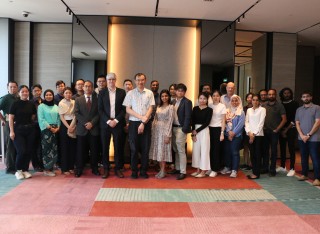
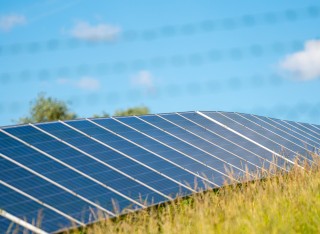
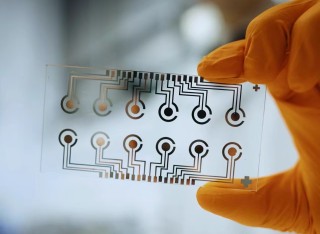



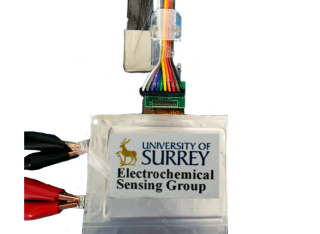
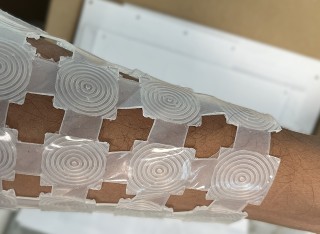


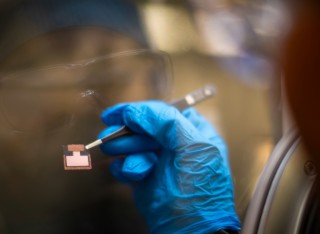
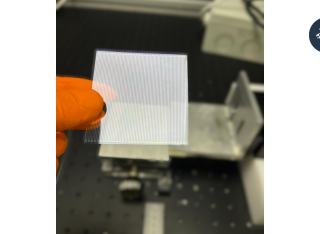

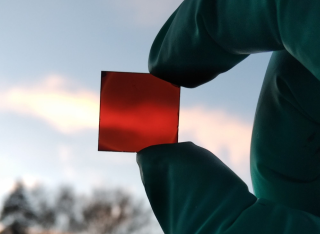


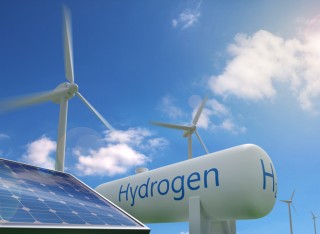
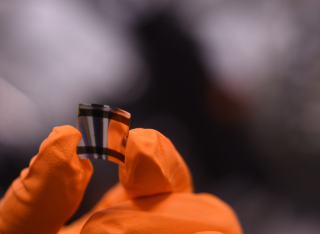
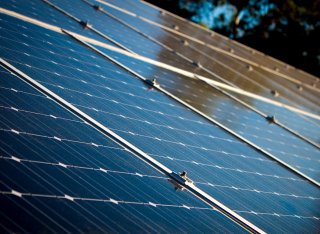
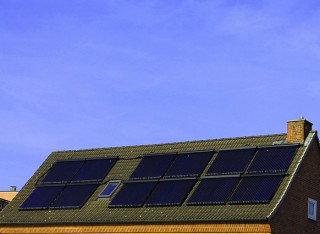

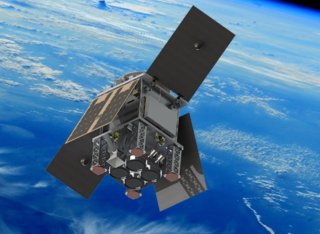
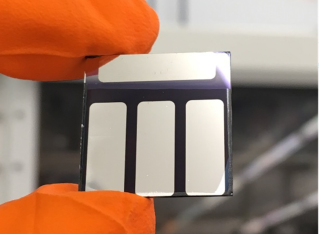
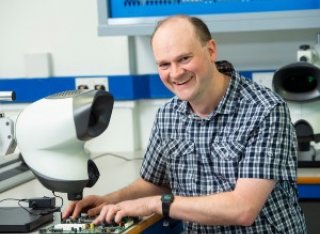

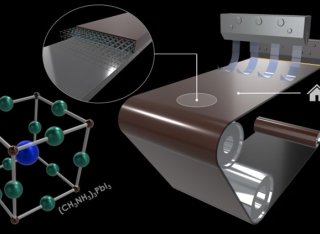

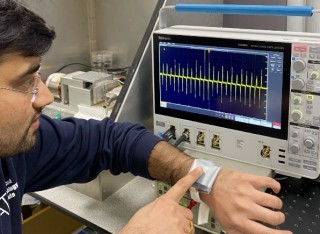
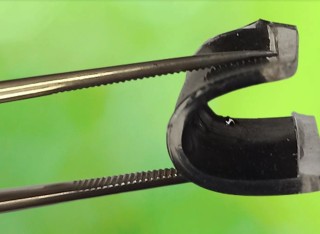
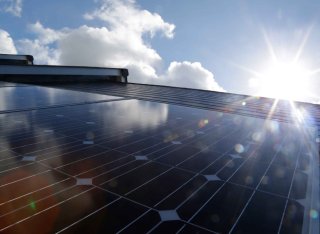


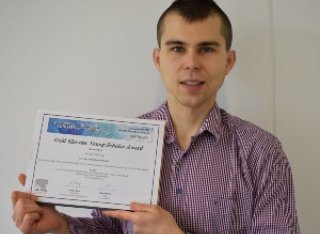
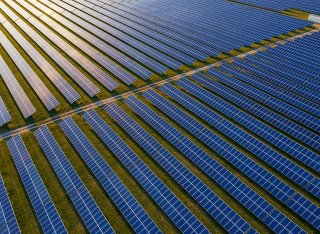
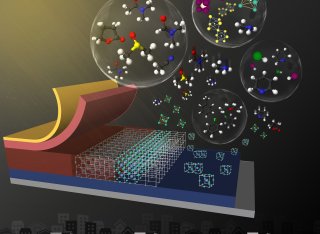


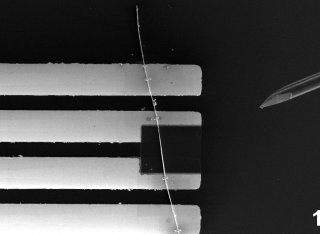
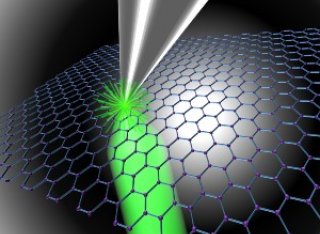




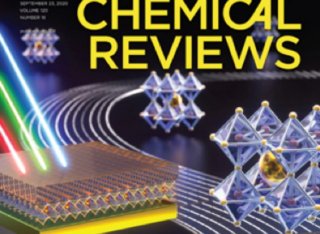
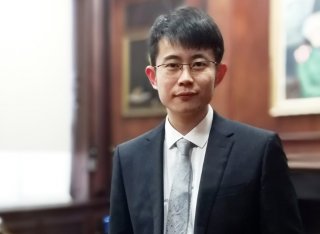

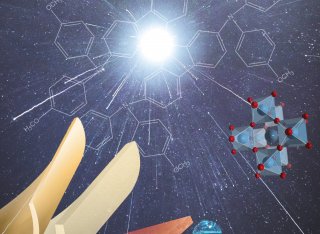


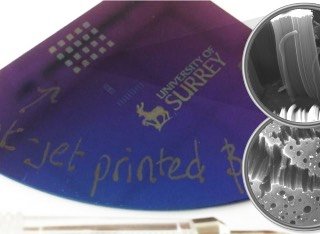
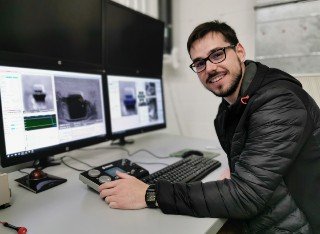

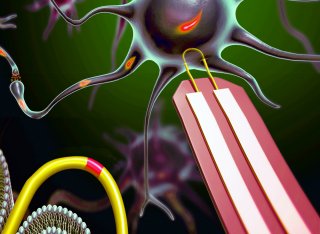
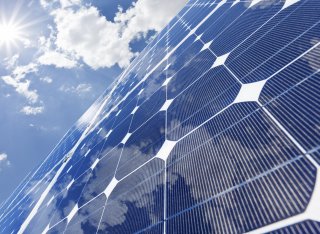


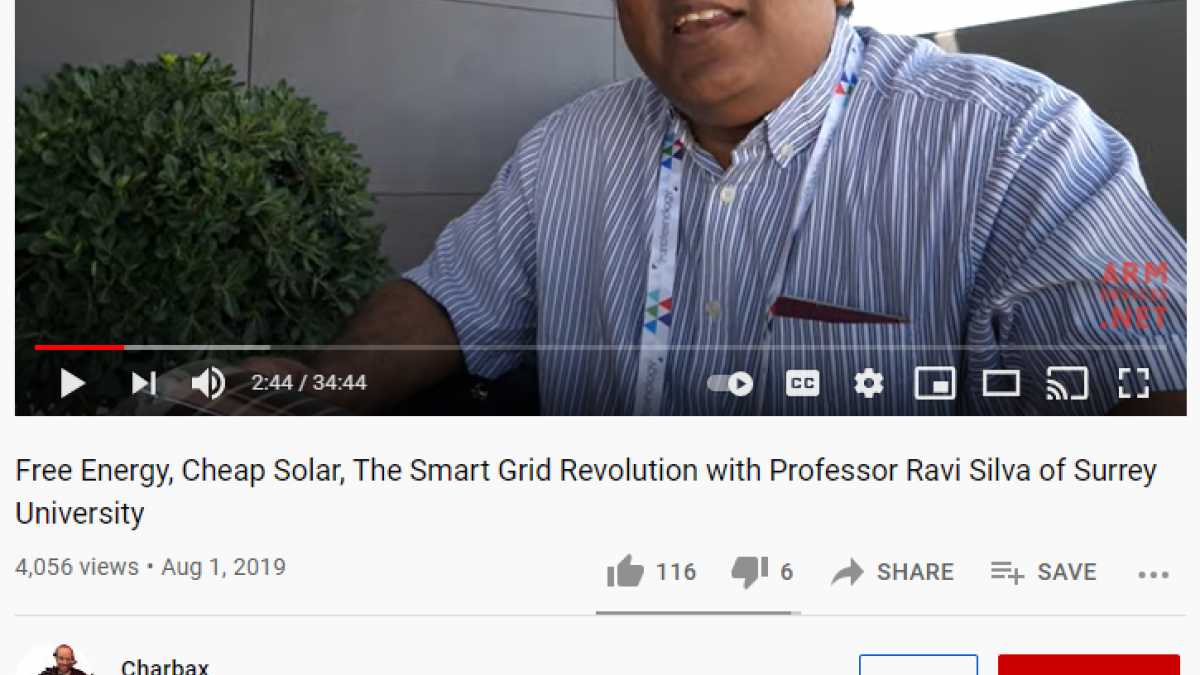






![Nanotechnology [ENGLISH]](https://i.ytimg.com/vi/TVvPqFUM0Dc/hqdefault.jpg)